Most people who hear the word “Nokia” associate it with mobile phones, but there’s actually a convoluted history behind the company. Nokia has explored multiple lines of business since its humble beginnings over 150 years ago and in that process has reinvented itself many times over.
Nokia is much older than most people know, but it was during the last few decades that the company became known for iconic mobile devices with bold design and technology. These ranged from a simple brick-like concept to unorthodox, sophisticated, and downright ridiculous form factors. The Finnish giant took part in shaping the history of telecommunications and mobile phones, which allowed it to grow into a global household name, but eventually became calcified by its own DNA and was forced to make a series of choices that brought it to its knees.
Nokia still exists today, but its priorities have shifted so much over the years that it’s mostly retreated from the consumer space. Some of its former engineering spirit lives on through a different Finnish company that set up its first office right across the street from the Nokia headquarters, while other engineering talent has migrated to companies like Apple and Qualcomm. Beyond that, Nokia still licenses intellectual property to third parties, and today is mostly focused on developing and selling telecom equipment for 4G and 5G networks.
This article is an exploration of Nokia’s history, from its humble beginning to becoming a dominant force in mobile technology and owning its own factories, down to a subdued presence in the approval process for a lineup of Android phones that carries only a hint of its former glory, a product line that sells moderately well thanks in no small part to a powerful nostalgia factor.
Note: This feature was originally published on September 2021. We have revised its content and bumped it as part of our #ThrowbackThursday initiative. Check out more nostalgia features like this in our Gone But Not Forgotten series.
Dialing Back Time to Nokia’s Humble Beginnings
Nokia was founded in 1865 by Finnish mining engineer Fredrik Idestam, and started out as a simple paper mill operation in Tampere, a city located in south-western Finland. It wasn’t long before Idestam expanded this operation to the nearby town of Nokia, which is located near the Nokianvirta River. Thus the “Nokia” name was born in 1871, inspired by this location.
In 1898, Eduard Polón founded Finnish Rubber Works (also known as Suomen Gummitehdas Oy), a company that manufactured everything from rubber shoes to car tires. In 1912, Arvid Wickström founded Finnish Cable Works (also known as Suomen Kaapelitehdas Oy), which became well known for producing electric cables, telephones, and telegraphs. In 1967, both were incorporated into the Nokia Corporation, a multifaceted business that offered paper and rubber products, electrical cables, generators, military communications and nuclear power plant equipment, computers, TVs, and many other things.
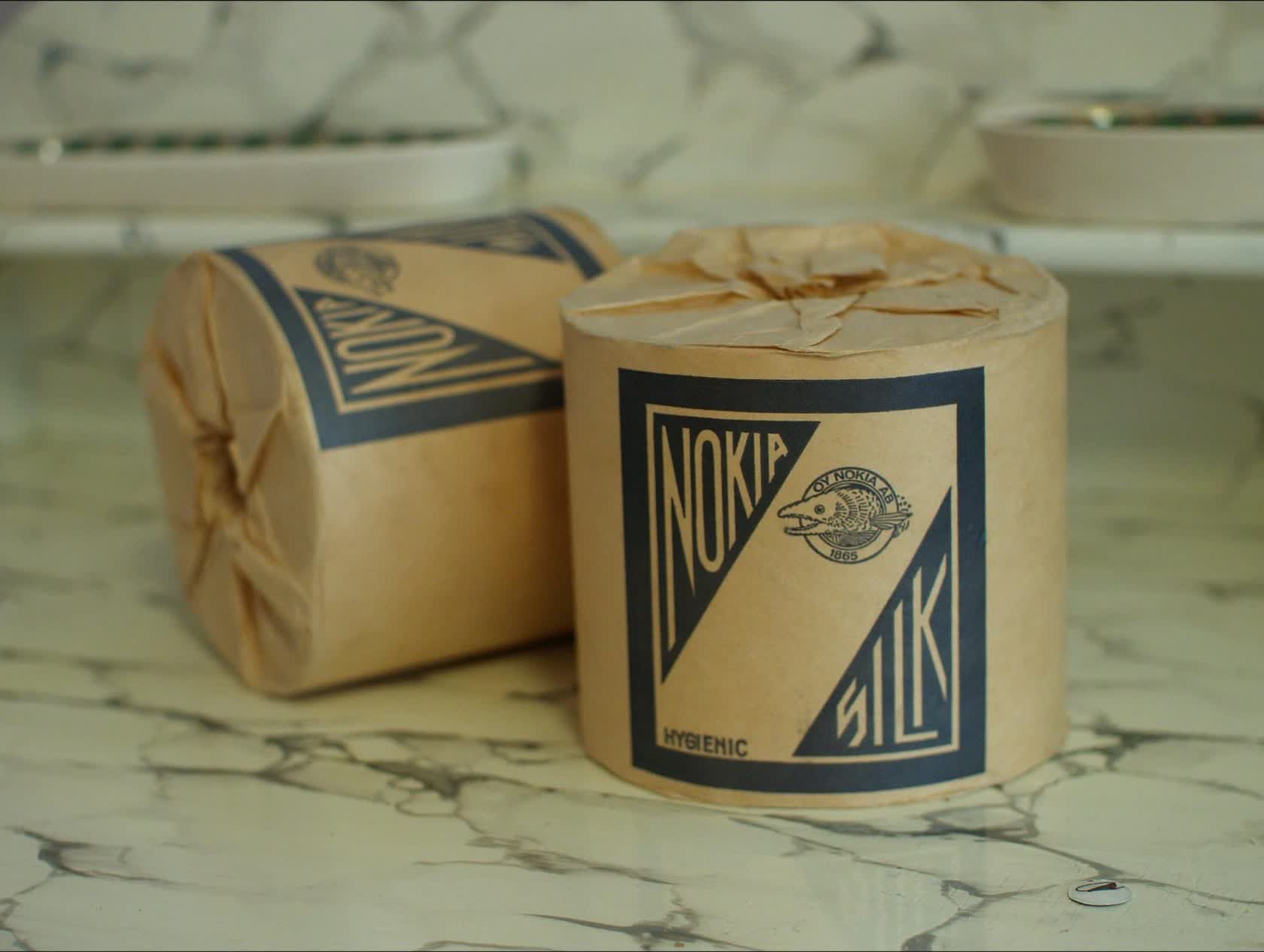
In 1979, Nokia started crystallizing into a telecom giant through a subsidiary called Mobira Oy — a joint venture with Finnish TV manufacturer Salora. Two years later, it launched the Nordic Mobile Telephone (NMT) service, a remarkable achievement in its own right as it offered full national coverage and was the world’s first automated cellular network system as well as the first to allow international roaming. This served as the basis to 1G, the set of standards for the first generation of wireless cellular technology, which used analog signals.
From Industrial Empire to Phone Maker
In 1982, Nokia introduced the first car phone — the exceptionally bulky, Mobira Senator, which was more like an advanced semi-portable radio station if you consider it weighed around 10 kg (22 pounds). Two years later, the company revealed its first “portable” phone, the Mobira Talkman 320F, weighing a more manageable 4.7 kg and sporting a big monochrome display, a phone book capable of storing 184 contacts, and a battery that allowed for 10 hours of standby and 60 minutes of talk time.
These were a great start, but still too impractical for most consumers.
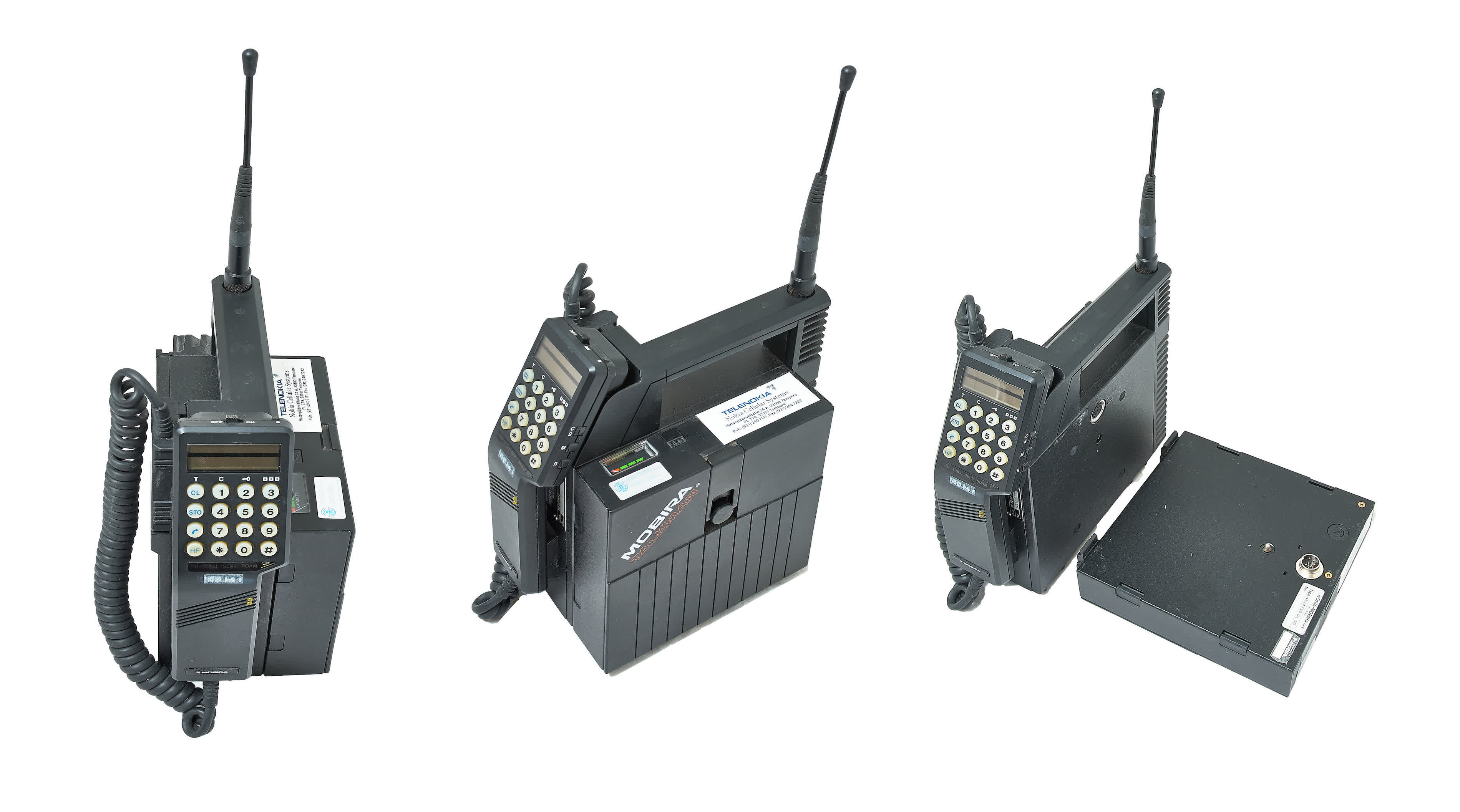
In 1987, the company came up with the Mobira Cityman, the first true handheld mobile phone. All of its variants weighed a much more manageable 760 grams (1.7 pounds), and they worked great on the NMT network. Some may remember the Mobira Cityman 900, which was made famous by an image of Mikhail Gorbachev using one to call a Moscow official from Helsinki in 1987.
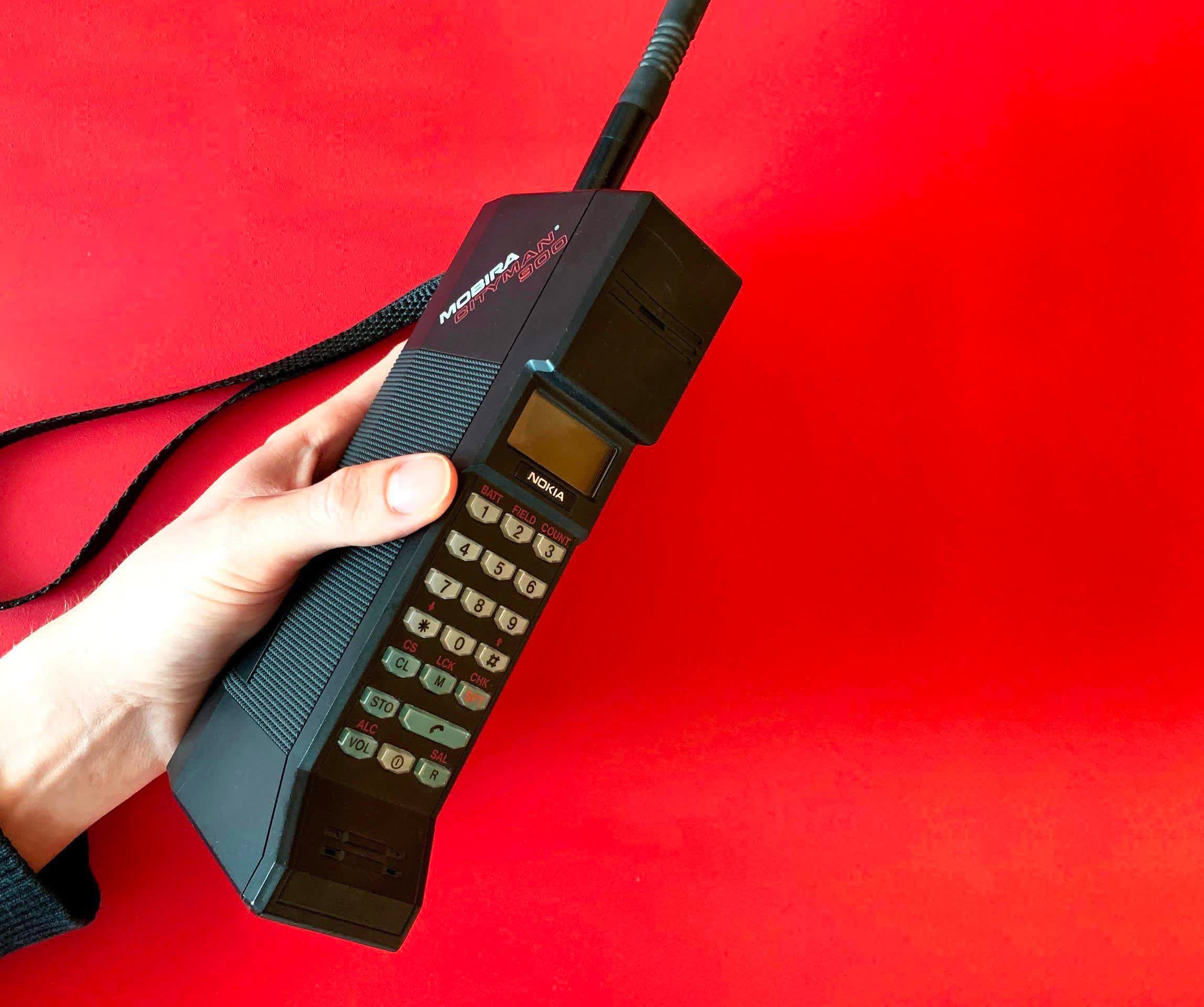
At the same time, a different side of Nokia’s business was developing that eventually formed a base for what it does today — network equipment. Notably, the company’s Televa joint venture was under pressure to deliver a powerful digital switch for NMT. And since it didn’t have the resources to produce its own custom silicon, it decided to design its switch around an Intel processor.
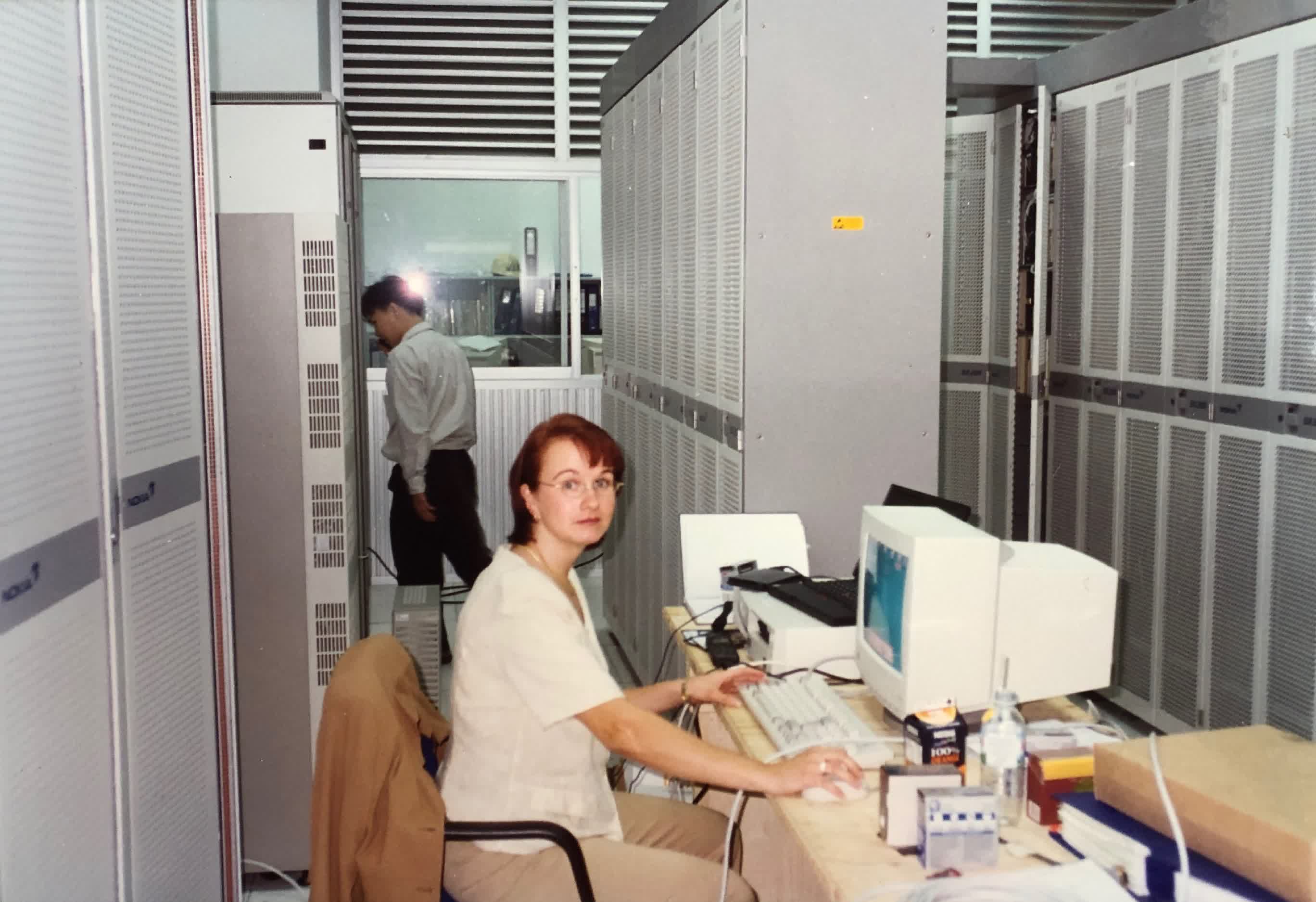
In 1982, this took the form of the DX200 digital switching platform, which would quickly become a runaway success despite being late to the market. This success would persist for a long time by virtue of its modular design, high reliability, and much cheaper price when compared to its rivals (more than 60 percent lower in some cases). To get an idea on how big this was, Nokia sold DX200 platforms globally right until telecom giants began phasing it out in 2013.
A year after the launch of NMT, the Confederation of European Posts and Telecommunications (CEPT) — a standards body comprised of state telecom firms in 1959 to coordinate standards, regulations, and operational guidelines across the region — formed the Groupe Special Mobile, which was later renamed Global System for Mobile Communications (GSM). Nokia had already put a lot of effort into pioneering research for Frequency Division Multiple Access (FDMA) and Time Division Multiple Access (TDMA) systems, so it quickly positioned itself at the heart of GSM development.
At the same time, Nokia was grasping at every opportunity to grow internationally. For instance, in 1983 Mobira forged an alliance with Tandy, then the largest consumer electronics retailer in the US, to sell handsets through the latter’s 7,000 RadioShack stores. This was a great opportunity to learn about low cost manufacturing in Asia, all thanks to hard negotiations that forced it to establish a manufacturing facility in South Korea.
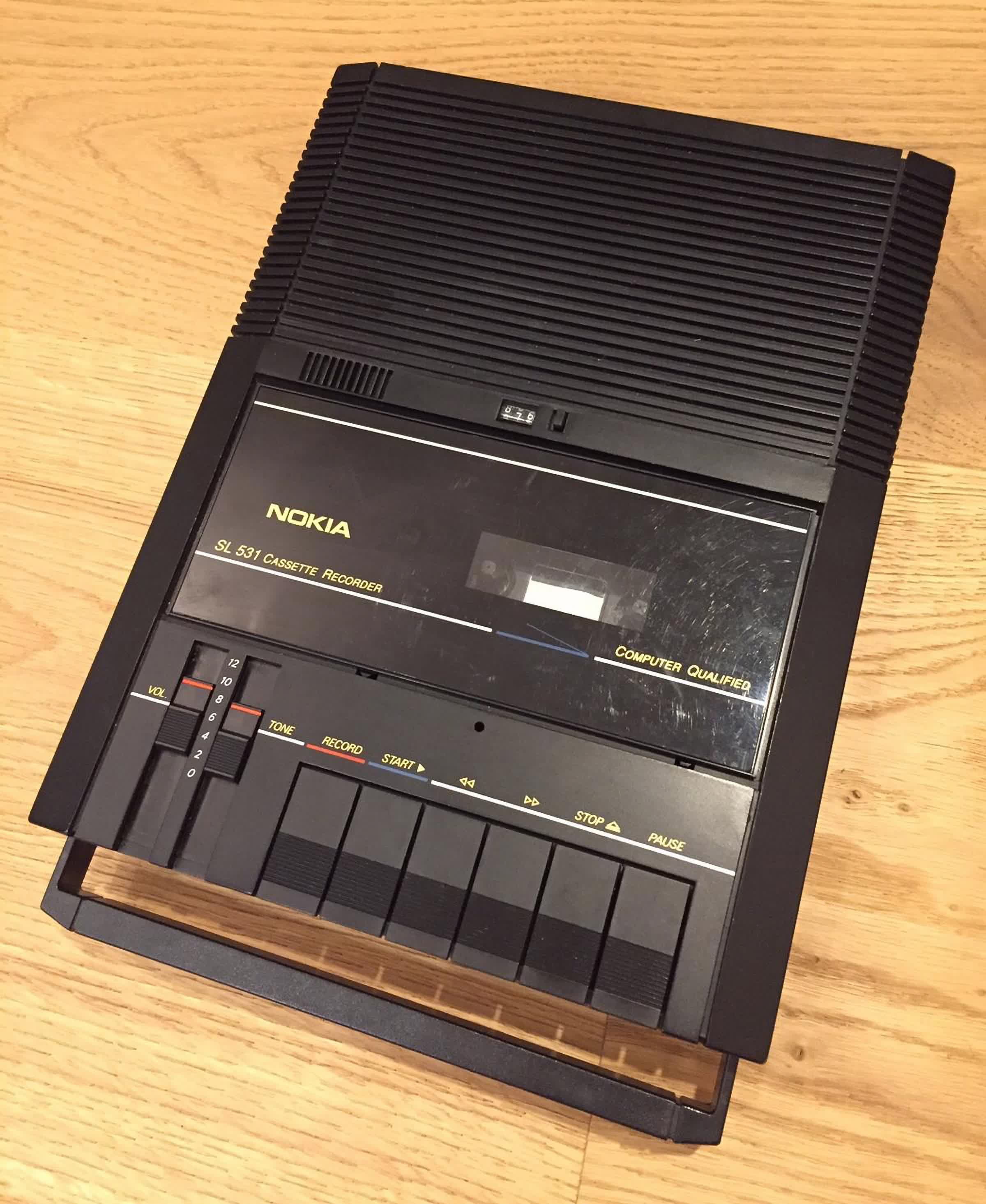
Nokia also tried expanding into other consumer electronics segments through various acquisitions, but ultimately failed to integrate those businesses and settled for delivering network equipment and mobile phones.
In 1983, CEO Kari Kairamo convinced the Finnish Ministry for Employment and the Economy to set up Tekes — the Finnish Funding Agency for Technology and Innovation — to help the company’s R&D efforts using government funds, as Nokia had become a great force in the Finnish economy. This, coupled with having the Finnish Cable Works portfolio of businesses organized like a collection of startups, allowed Nokia to grow faster and pursue high-risk, high-reward research projects.
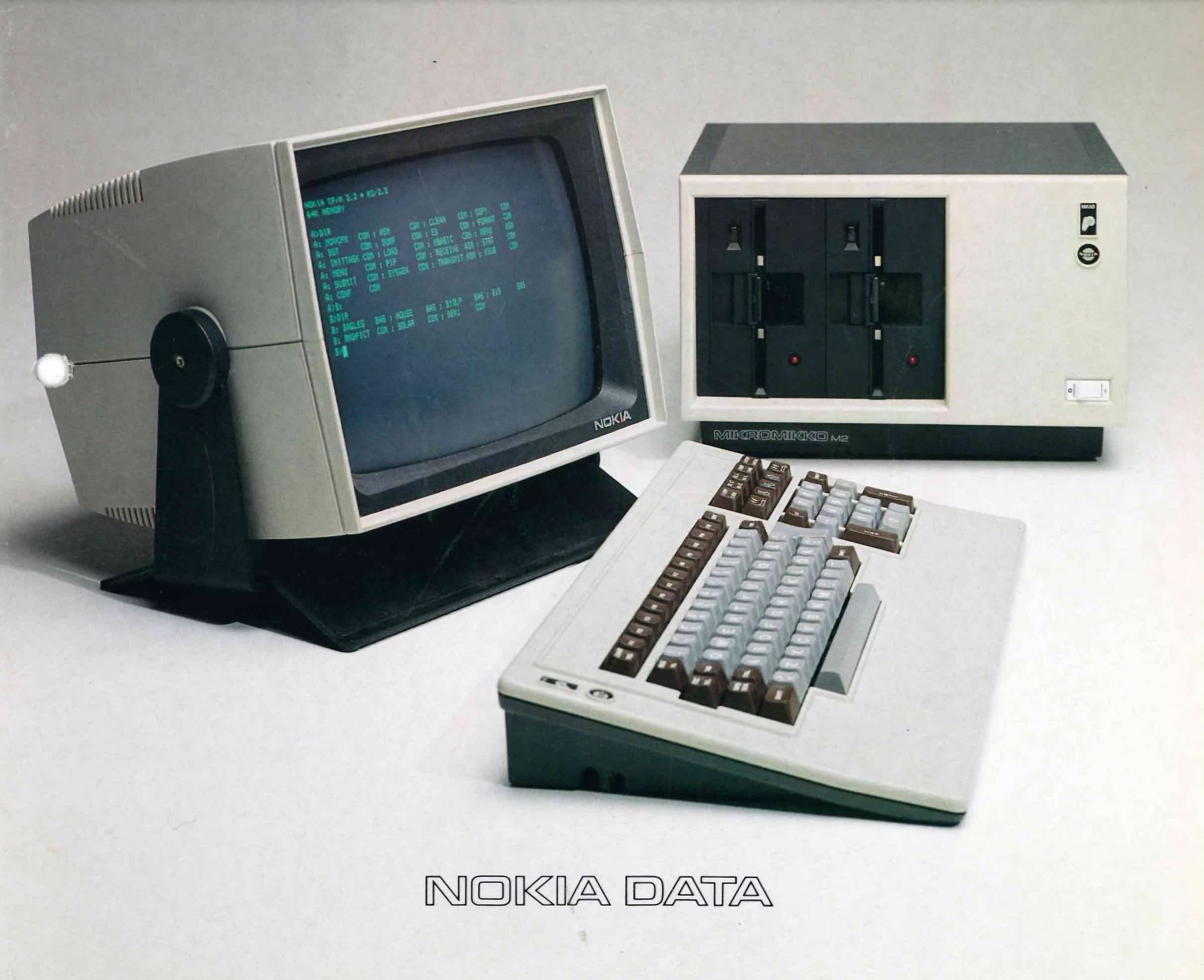
Three years later, Kairamo removed yet another obstacle for his vision — the shareholder control over the company. At the time, it was common for large Finnish companies to be mostly owned by local banks. In the case of Nokia, its two largest shareholders were the KOP Bank and the Union Bank of Finland. Kairamo proposed the creation of a new internal board comprised of senior executives and presided by the chief operating officer. This new board would take on many of the responsibilities of the supervisory board and sit just above the management board.
The shareholders agreed to the change in governance structure, but only because they wanted to avoid the public backlash that would follow a refusal of Kairamo’s proposal. Thus, their involvement and control of Nokia’s internal doings was reduced considerably, which was essentially a good thing — most of the members of the supervisory board had no experience in either the telecom industry nor international business. The timing was also good, as the US and the UK had just set the tone for the deregulation of the telecom market.
Nokia had a distinct advantage, as it owned all the pieces of the puzzle for end-to-end solutions — switches, base stations, and handsets. However, a group of managers analyzed the market opportunities brought by liberalization and digitization, and concluded the company was not organized properly to take advantage of them.
One of the managers was Sari Baldauf, who would go on to lead Nokia’s network and infrastructure business until 2005. She recommended the creation of Nokia Mobile Phones (NMP) — a separate business unit that would focus on mobile handsets, as she anticipated they would soon become more than simple network terminals. The remaining businesses — base stations and digital switches — would be merged into a second unit called Nokia Cellular Systems.
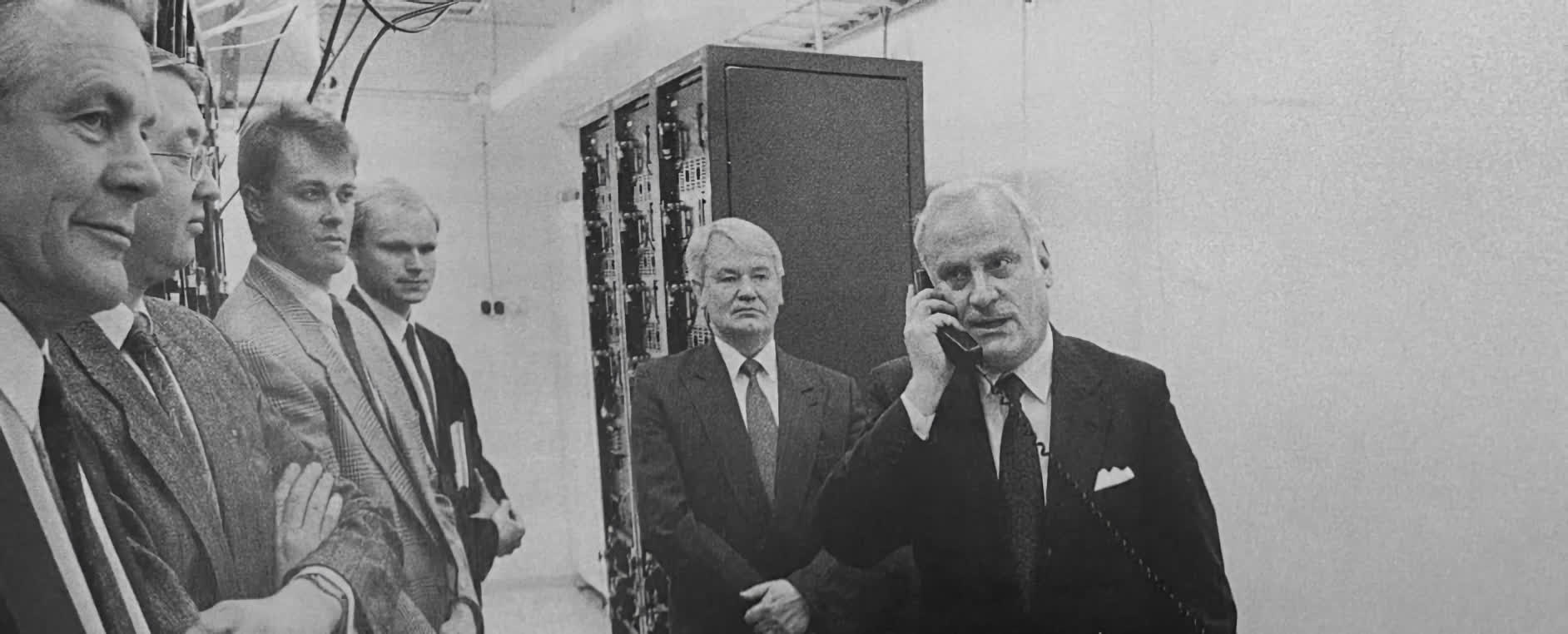
At this point, things looked very positive for Nokia’s future, but the company was riddled in debt from its previous decade of acquisition-led growth experiments. The flat company structure also meant that the corporate leadership didn’t have a clear picture of how the various business units performed, and as such would only get a peek view from looking at the overall financial results of the company as a whole. In 1988, Kairamo committed suicide and spawned an ugly political battle for leadership, as he hadn’t put an alternative succession plan in place. The matter was eventually solved by Nokia’s supervisory board, which sidestepped the fight and appointed COO Simo Vuorilehto as the new CEO.
Vuorilehto reduced Nokia’s workforce to 22,000 people over the next two years, effectively cutting it in half. After the collapse of the Soviet Union and the resulting recession that swept over Europe, the Vuorilehto-led Nokia felt pressured to attempt a sale to Ericsson, but the Swedish company didn’t want to assume the risk of purchasing Nokia’s data and consumer electronics divisions. Nokia’s supervisory board also tried hiring the Boston Consulting Group in a desperate search for options, only to find that its infrastructure business was the only one that had the potential to survive.
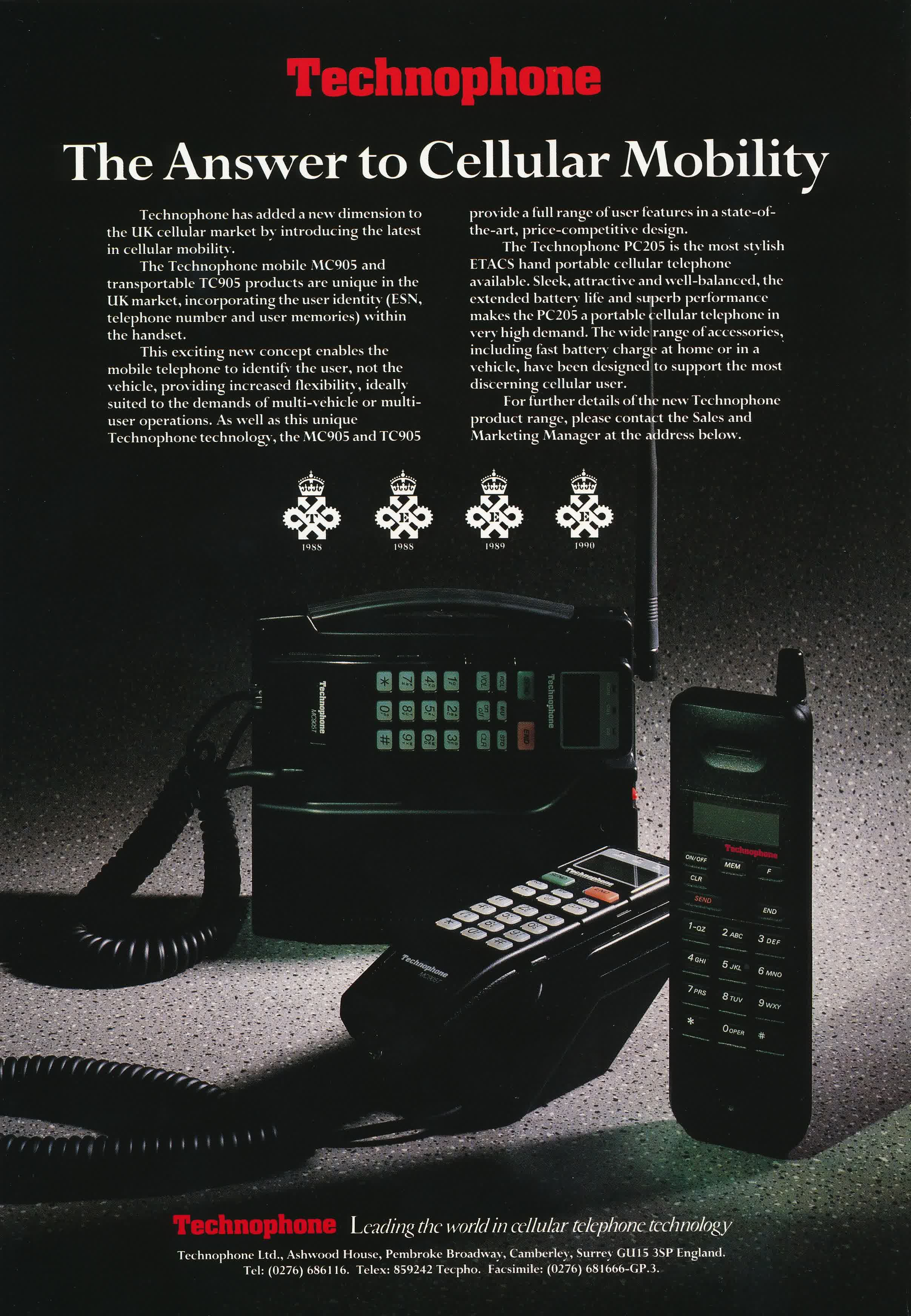
In 1991, Vuorilehto sold some poorly-performing business units, but he wasn’t ready to let the Nokia group be dismantled. Soon after, he pushed for the acquisition of UK-based phone manufacturer Technophone for £34 million (~$90 million adjusted for inflation in 2022). Technophone was the first company to come up with a phone that was small enough to fit in your pocket, and was the second larger seller of handsets in Europe after Nokia.
As a result of the acquisition, Nokia held enough global market share to become the world’s second largest phone manufacturer after Motorola.
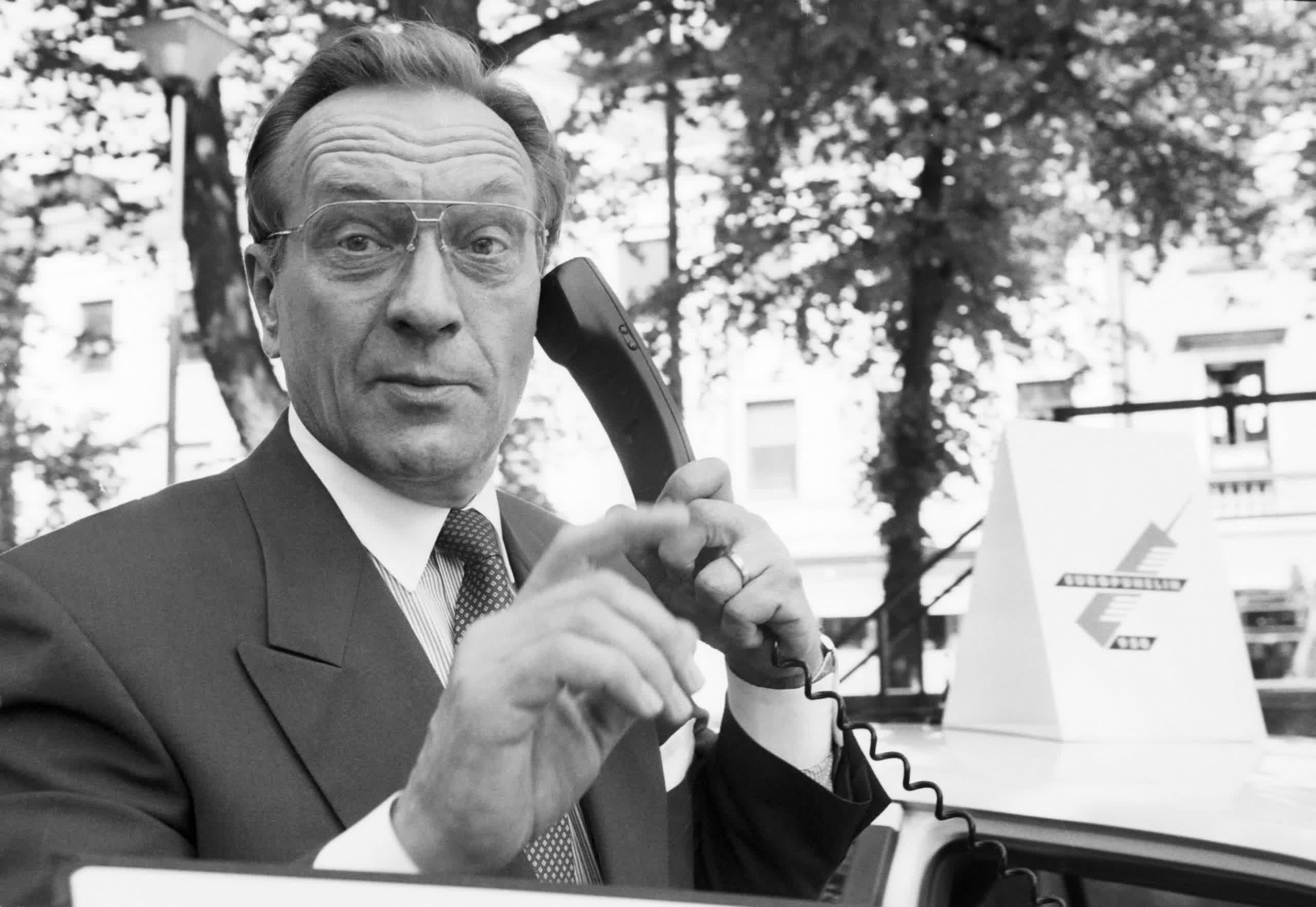
A year later, Jorma Ollila took Vuorilehto’s place as CEO of Nokia, and the company hired Anssi Vanjoki as the new head of sales and marketing. Vanjoki saw that unlike Motorola, Nokia was selling its phones under various brand names like Mobira, Nokia, Technophone, and Radio Shack, so he sought to unify them under the “Nokia” brand and introduced the “Connecting People” marketing slogan. Ollila, on the other hand, was tasked with outlining a strategy to save a company where morale was low and uncertainty loomed over everyone’s heads.
Luckily for Nokia, Radiolinja — a Finnish consortium of local telecom operators — was granted a license to develop the world’s first GSM network, and Nokia was its first choice as a partner in that project.
In 1992, Nokia provided the infrastructure as well as the world’s first GSM handset, an invaluable experience that would serve the company well in the coming years. That year, Pekka Ala-Pietilä, who was head of Nokia Mobile Phones, predicted that adoption of mobile phones could reach “around 25 percent of the population in the most advanced economies by 2000,” which at the time seemed ridiculous to most in the industry.
As governments in Europe and around the world began selling GSM licenses, most of Nokia’s competitors weren’t able to provide the same kind of “turnkey,” end-to-end solutions. Even much larger firms like Ericsson and Motorola had a relatively poor understanding of the market in the early 90s, which is why they didn’t immediately pursue the consumer segment as hard as Nokia did.
At the time, Motorola had already established itself as the world’s biggest supplier of mobile phones, and had a particularly strong presence in the US, which was considered the largest single market of mobile phones. It also owned an extensive list of patents and employed many talented engineers, which is how it was able to achieve enough vertical integration to make phones almost entirely in-house. This was one of its main competitive advantage — Motorola could easily create lighter, more compact phones. A prime example of that was the $3,500 Microtac, a high-end phone that incorporated a novel flip-down mouthpiece, but that was still an analog phone in a world that was poised for a rapid transition to the digital.
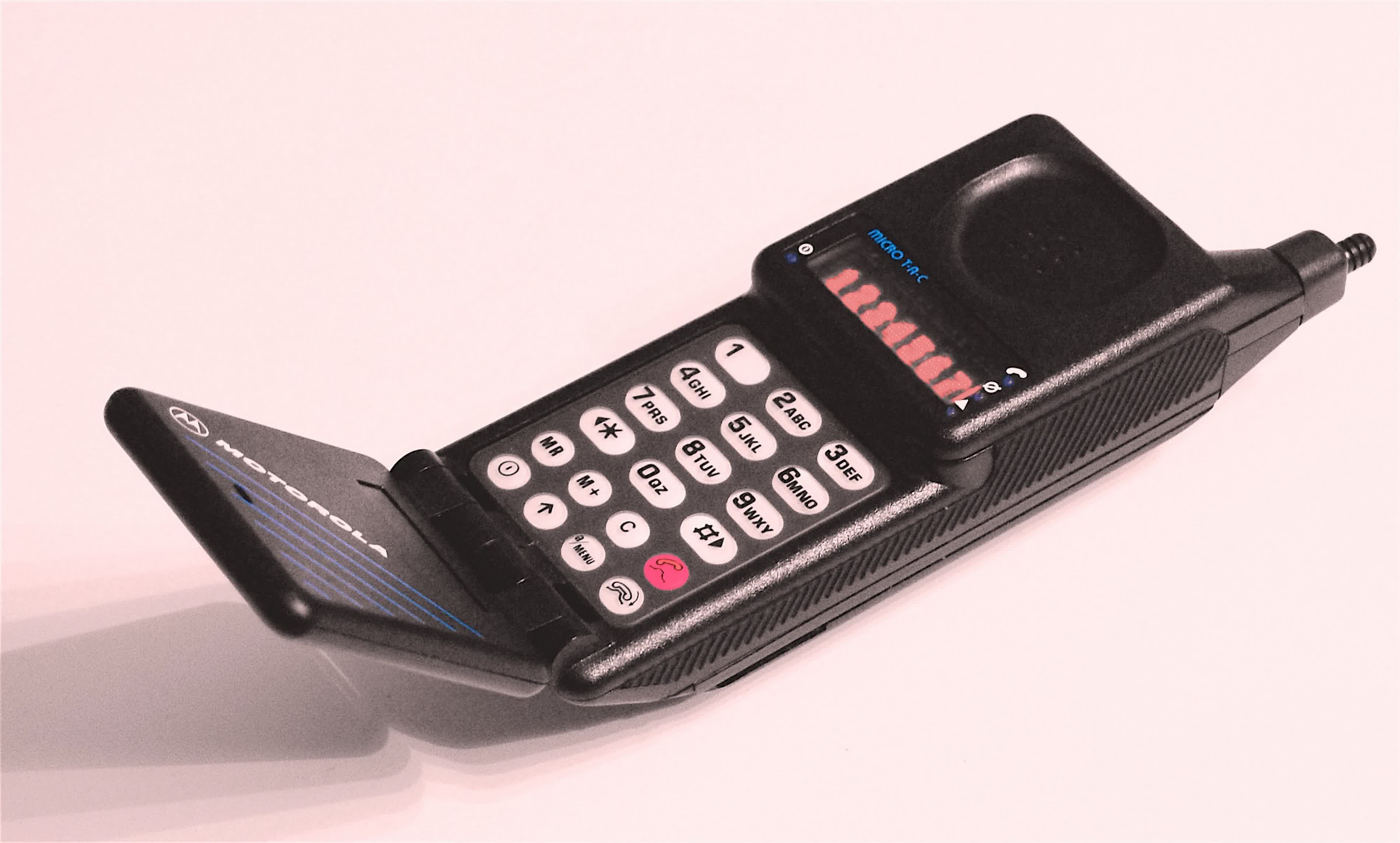
Ericsson was one of the forces in the network equipment market, and unlike Motorola it acknowledged the potential of digital communications. However, the two firms had something in common — both saw handsets as dumb terminals and infrastructure equipment as the most important component of future developments in the telecom arena. This is why in 1989 Ericsson moved its phone business into a joint venture with General Electric in the US, only to buy it back five years later.
Around 1991, Nokia understood the importance of a more consolidated approach in achieving its dream to become a global product company with a consumer focus. To that end, Ala-Pietilä created strategies that incorporated a global logistics component, customer satisfaction, and concurrent engineering, a concept borrowed from Japanese companies. This meant that every new product Nokia envisioned was to be developed by engineers that worked more closely with logistics, manufacturing, and marketing teams. Furthermore, it allowed the company to bring partners into the research and development process, which later enabled the slew of phone form factor experiments to be produced with incredible efficiency.
Also pivotal to Nokia’s future success was Frank McGovern, who joined the company as part of the Technophone acquisition. At the time, McGovern was one of the few people at Nokia that had valuable experience working in a multinational firm with manufacturing expertise. Specifically, he had been leading Hitachi’s manufacturing operations in Europe, which meant that he possessed the critical skills needed to develop manufacturing as an essential function of Nokia’s business according to strong Japanese principles.
As a result, from 1991 to 1994 the Finnish company went from making 500,000 phones per year to around five million, and from reporting an operating loss to posting a healthy profit of FIM 3.6 billion ($1.4 billion, adjusted to inflation in 2022). And more importantly, 64 percent of that came from Nokia Telecommunications and Nokia Mobile Phones. On July 1994, the group was listed on the New York Stock Exchange, which allowed foreign investors to pour in additional capital to fund Nokia’s ambitious international growth plan.
It was also in 1994 that saw the Nokia board decide it was time to begin divesting the businesses that were not related to this new direction. The impact of this decision was immense, as two thirds of Nokia’s workforce would be replaced in the span of two years with many aspiring engineers from Finland’s technical universities. The work environment cultivated by the new CEO was very attractive despite the relatively low wages, as engineers would get regular job rotations that reduced internal political friction and allowed them to gain valuable technical skills.
Ollila knew that Nokia had little room for error with its international expansion, but his willingness to take a novel and unconventional approach would soon turn the company from a small telecom company grown from the ashes of a financially troubled industrial conglomerate into one of the biggest innovators in mobile phones and telecom infrastructure. He knew that in order to succeed, Nokia would have to leverage its strong R&D capabilities and move to capture new markets early on with a laser focus on adapting to local needs and building a strong trust in its services.
A notable early success of this strategy is when Nokia beat Ericsson to a contract to supply Thailand’s AIS with an end-to-end system, despite the latter having a larger presence in the country. The Finnish company was also able to score a similar contract with UK’s Cellnet in 1994 despite Motorola offering to do the same for a significantly lower price.
Nokia went on to build a strong relationship with suppliers throughout the US and Europe and built several factories in China and Mexico. That was a crucial component for the company’s continued growth, but it was only one of several that contributed. Nokia Mobile Phones chief Ala-Pietilä sought to make mobile phones more attractive for consumers, and to that end he worked with engineers to have all Nokia phones achieve high standards of quality and usability, while also giving them a distinctive look and feel compared to the competition.
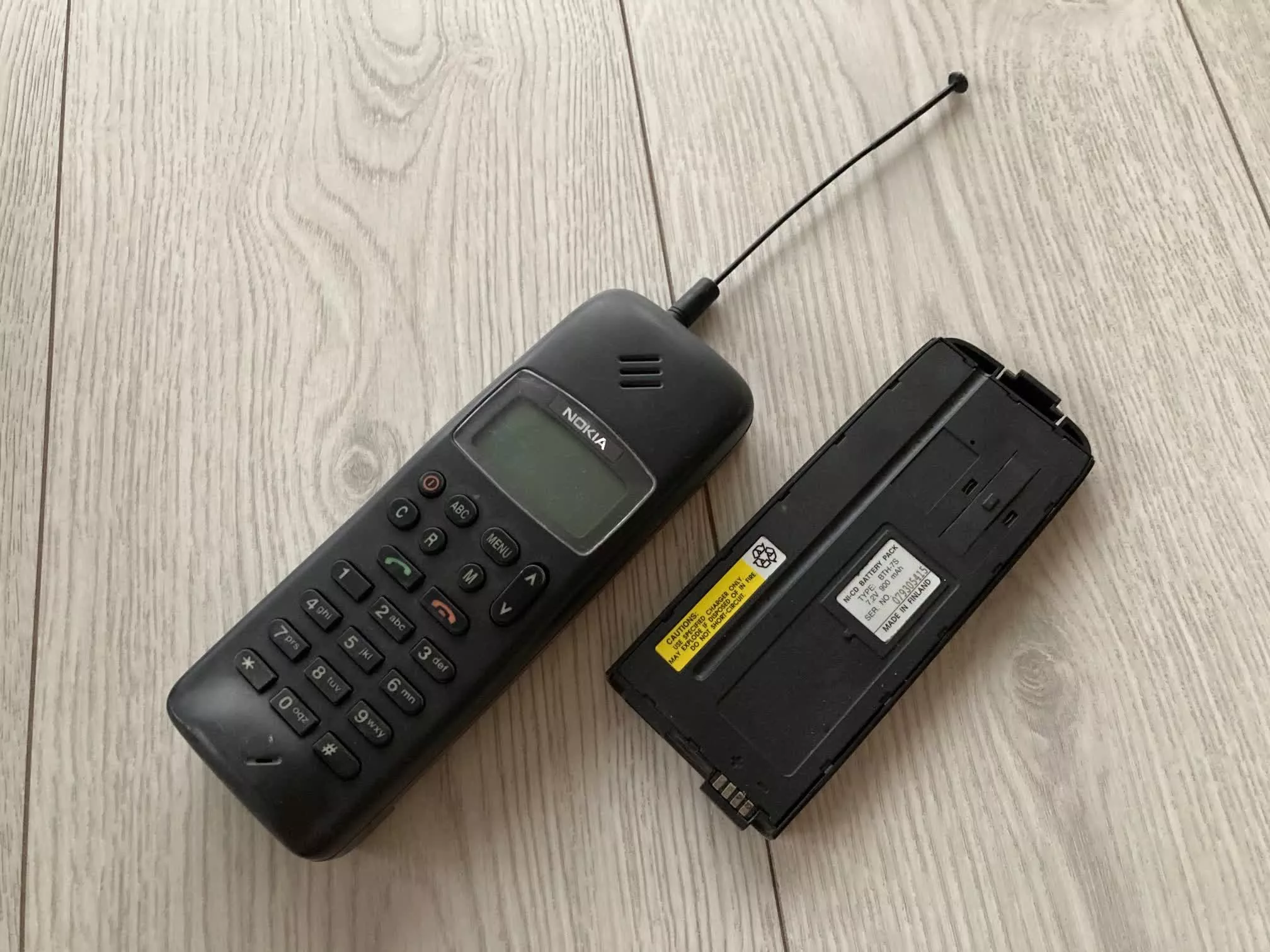
An early result of that effort was the Nokia 1011 in 1992 (also known as the Mobira Cityman 2000), which was Nokia’s first mass-produced GSM phone. It had a brick shape with a short, extendable antenna on the top and was 45 mm thick, weighing 495 grams, which at the time was considered thin and light. It had a small monochrome LCD screen and was able to hold 99 contacts in memory, while its 900 mAh battery would only last for 90 minutes of talk time or around 15 hours of standby time. People who bought one at launch had to pay the equivalent of $3,060 today.
Two years later, the successor to the Nokia 1011 arrived in the form of the Nokia 2110, with a smaller and slimmer “soap bar design” that weighed half of its predecessor and was only 28 mm thick. It had a scrolling text menu, and the screen displayed battery and signal levels, a notification symbol for unread SMS messages, and more.
Other notable features were the ability to display a list of 10 last dialed numbers, last 10 received calls, and the last 10 missed calls. The battery allowed between 70 to 150 minutes of talk time and 20 to 40 hours of standby. This was an expensive phone meant for business users, so most people bought the relatively inexpensive Nokia 232 instead, for the equivalent of $730 in today’s money.
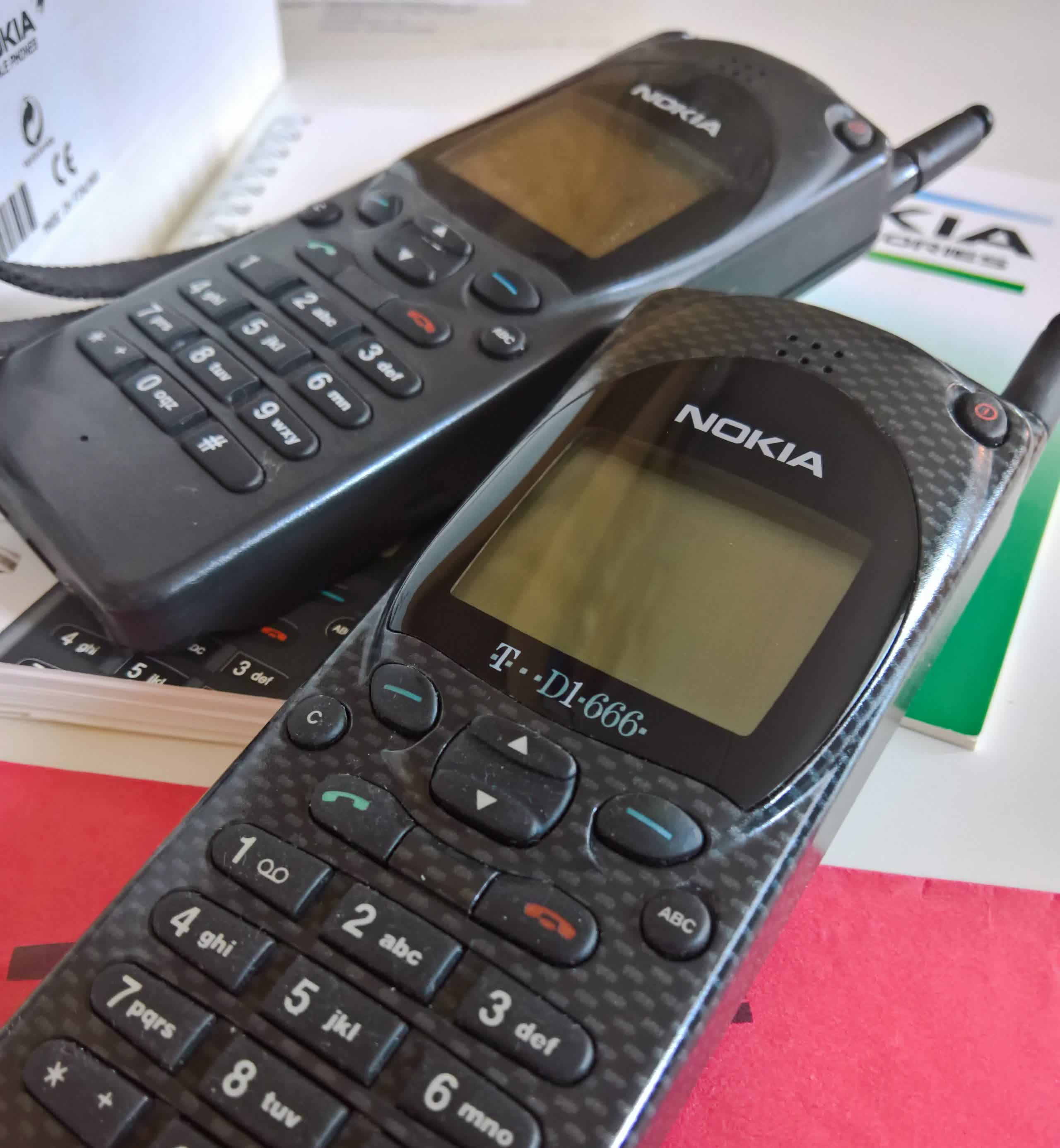
By 1995, Nokia’s workforce had almost doubled and the group’s operating profit was up nearly 40 percent compared to the year prior. However, the company lost control of its supply chain that year as it quickly found it could no longer meet demand, which far exceeded the 300,000 phones a year that Ollila thought would be a realistic target back in 1992. Coupled with the fact that one of the company’s suppliers was experiencing yield issues after retooling one of its manufacturing plants, and Nokia quickly found itself in a position where it was unable to fulfill important high-volume orders. Production managers at Nokia didn’t have a real-time view of sales data, so they were simply pushing products in the largest possible volume to various markets without getting the crucial feedback they needed.
Frank McGovern selected Pertti Korhonen, who was running one of Nokia’s key manufacturing plants at the time, to find a vendor that could help solve the logistics crisis. That vendor turned out to be SAP, who designed and installed an ERP system that provided a clear view of Nokia’s entire logistics activity around the globe and allowed production managers to precisely track purchasing requirements, manufacturing, inventory management, and delivery.
This new system was fully operational in just six months, which gave NMP control back over its supply chain. To get an idea of the impact it had, inventory cycles were shortened from 154 to 68 days, inventory costs per unit were reduced by 50 percent, and the main Nokia phone manufacturing plant in Salo, Finland went from taking several months to add a production line to establishing one at full capacity in less than a week.
For years, this would prove to be one of Nokia’s main strategic advantages over competitors who were stuck in their old ways and encumbered by industry orthodoxies.
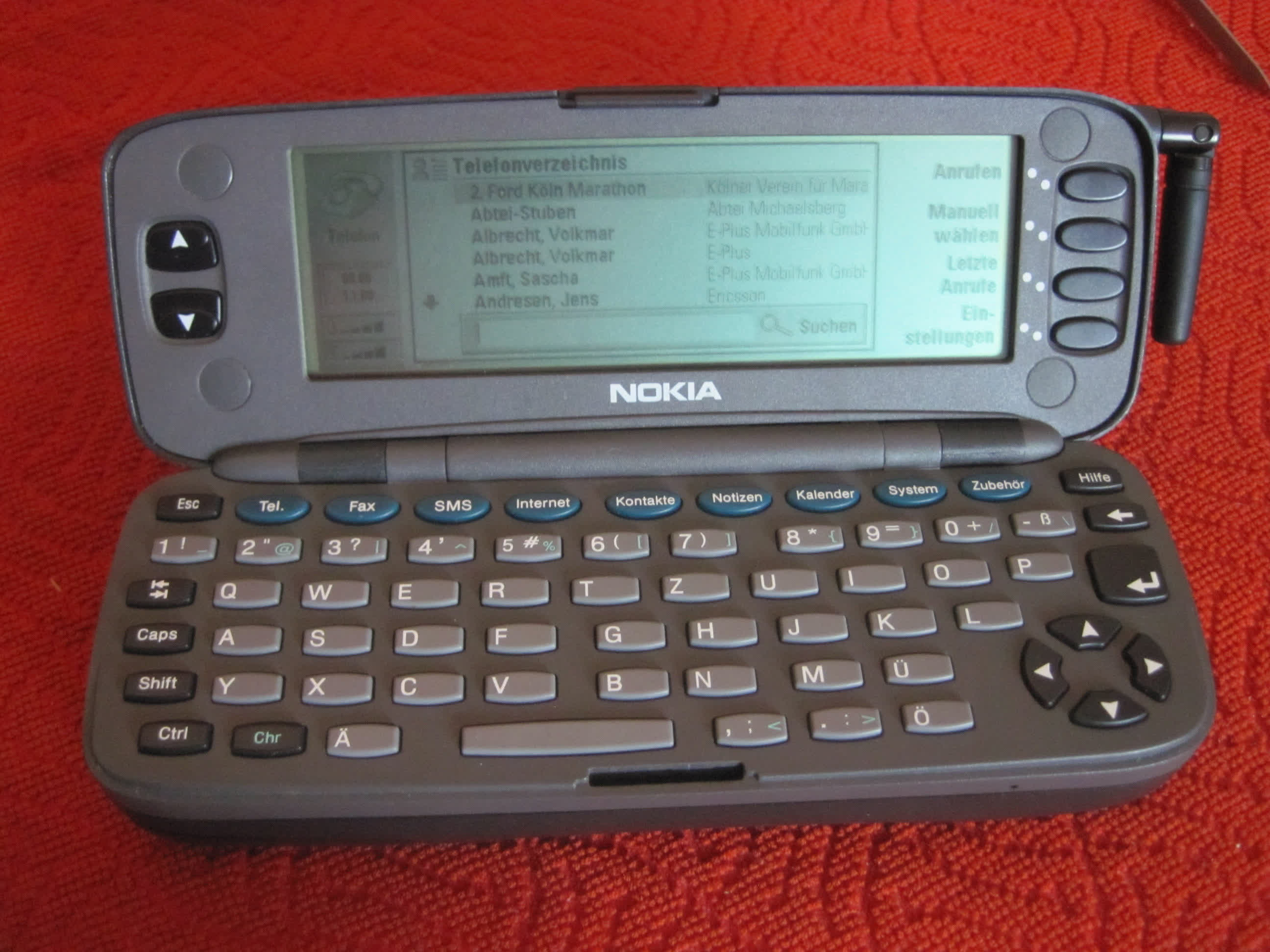
By the end of the 1990s, Nokia launched its first smartphone, the Nokia 9000 Communicator. This was the result of over 4 years of R&D that were focused on making a “pocket computer.” By the time it arrived in August 1996, it was far from a new concept, as Apple had already tested these new waters with the Newton, while IBM had created the Simon Personal Communicator. However, both failed in the market due to their high price and being ahead of their time.
The Nokia 9000 Communicator was a smartphone in an era when “smartphone” as a word only described a concept. The term itself had appeared in print as early as 1995 to describe AT&T’s PhoneWriter Communicator, but it was only a year later that Ericsson released a device it called a “smart-phone” — the GS 88 “Penelope”. This type of device that borrowed features that computers could do inside a portable brick, while also featuring a QWERTY keyboard was only starting to emerge, and it would take several years for them to become appealing for the average consumer.
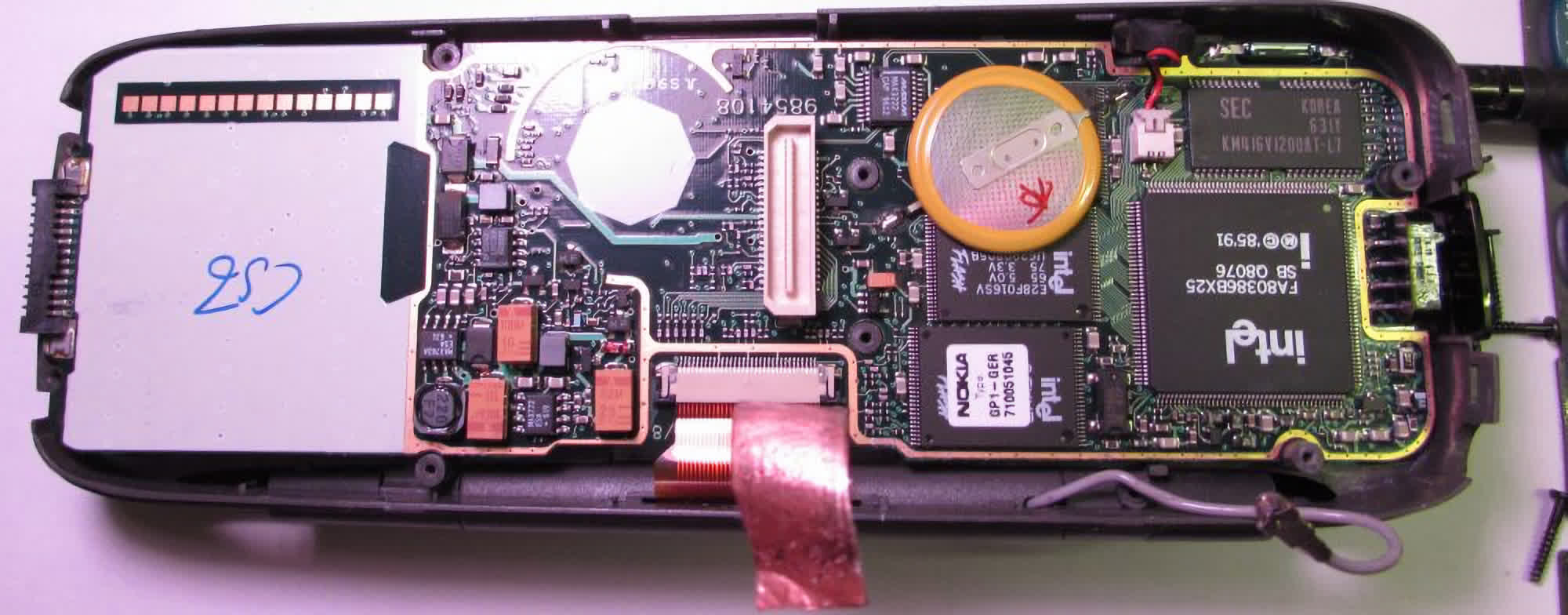
Nokia’s first Communicator device was equipped with high-end internals, including an Intel CPU running at 24 MHz, 4MB of RAM, and 4 MB of ROM — 2 MB of which were accessible to the user. When unfolded, it would reveal a 4.5-inch monochrome screen with a resolution of 640 by 200 pixels and a miniature QWERTY keyboard, which you could use to send and receive email and fax via a GSM modem with a maximum theoretical speed of 9.6 kilobits per second — a far cry from the multiple megabits per second achievable today, and unimaginably slower than the theoretical maximum of 10 gigabits per second promised by 5G cellular network technology.
The Nokia 9000 also sported a rudimentary web browser. The biggest draw of this device, however, was that it ran a PEN/GEOS 3.0 operating system that closely emulated the experience of running Windows 95 on a desktop PC, with applications like Notes, Calendar, Calculator, Composer, Serial Terminal, Telnet, and a world time clock.
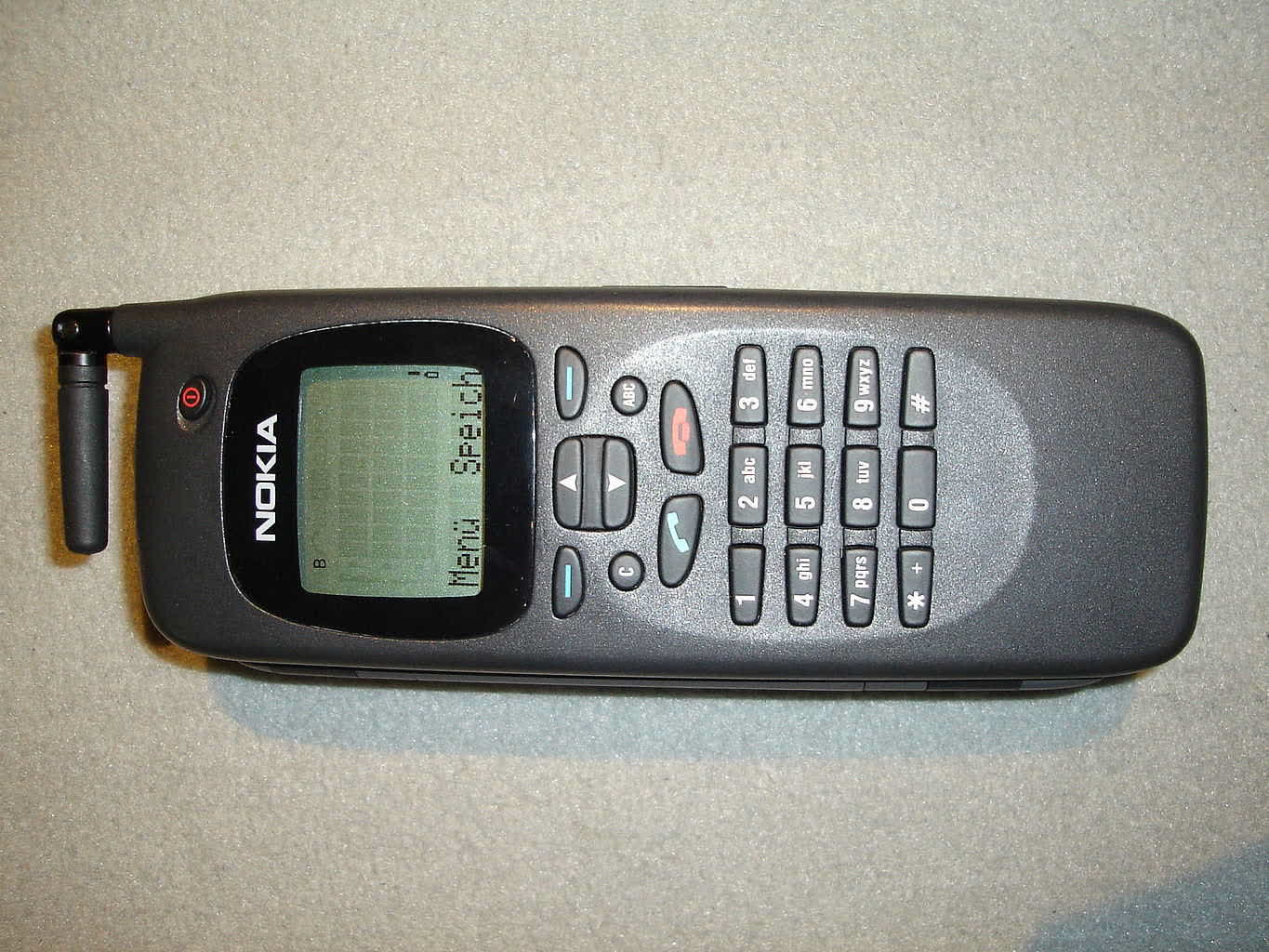
When you didn’t want to use this functionality, you could simply fold it back and use it as you would any other phone at the time. You could turn off the phone part and use the PC-like part of the Nokia 9000 Communicator and vice-versa, but the two were also connected so that you could always start an SMS on the phone side and continue composing it on the “PC” side.
The company improved on this original concept with a few subsequent models, the first of which arrived in 1998 in the form of the Nokia 9110 and 9110i. These utilized a faster AMD Elan SC450 CPU running at 33 MHz, weighed only half as much as the Nokia 9000, and dealt with many of the annoyances of the original, including the need for a special adapter for both charging and connecting to a computer. It even included an MMC slot for expandable storage.
One of the reasons why Nokia was pouring so many resources into rapid iteration on data-enabled phones was that its leadership at the time realized the future potential of a pocketable device that covered both business and consumer use. Then there was the perceived competitive threat from other companies like Apple and IBM, who had previously failed to find the right recipe but could always come up with a new and refined version.
Nokia executives also caught wind that Microsoft was seeking to forge partnerships with device manufacturers and mobile carriers to bring Windows to mobile devices. The Redmond giant had already succeeded in capturing a majority of the PC market using this strategy, but Nokia didn’t want to become a mere “hardware supplier” as it didn’t want to compete on low margins.
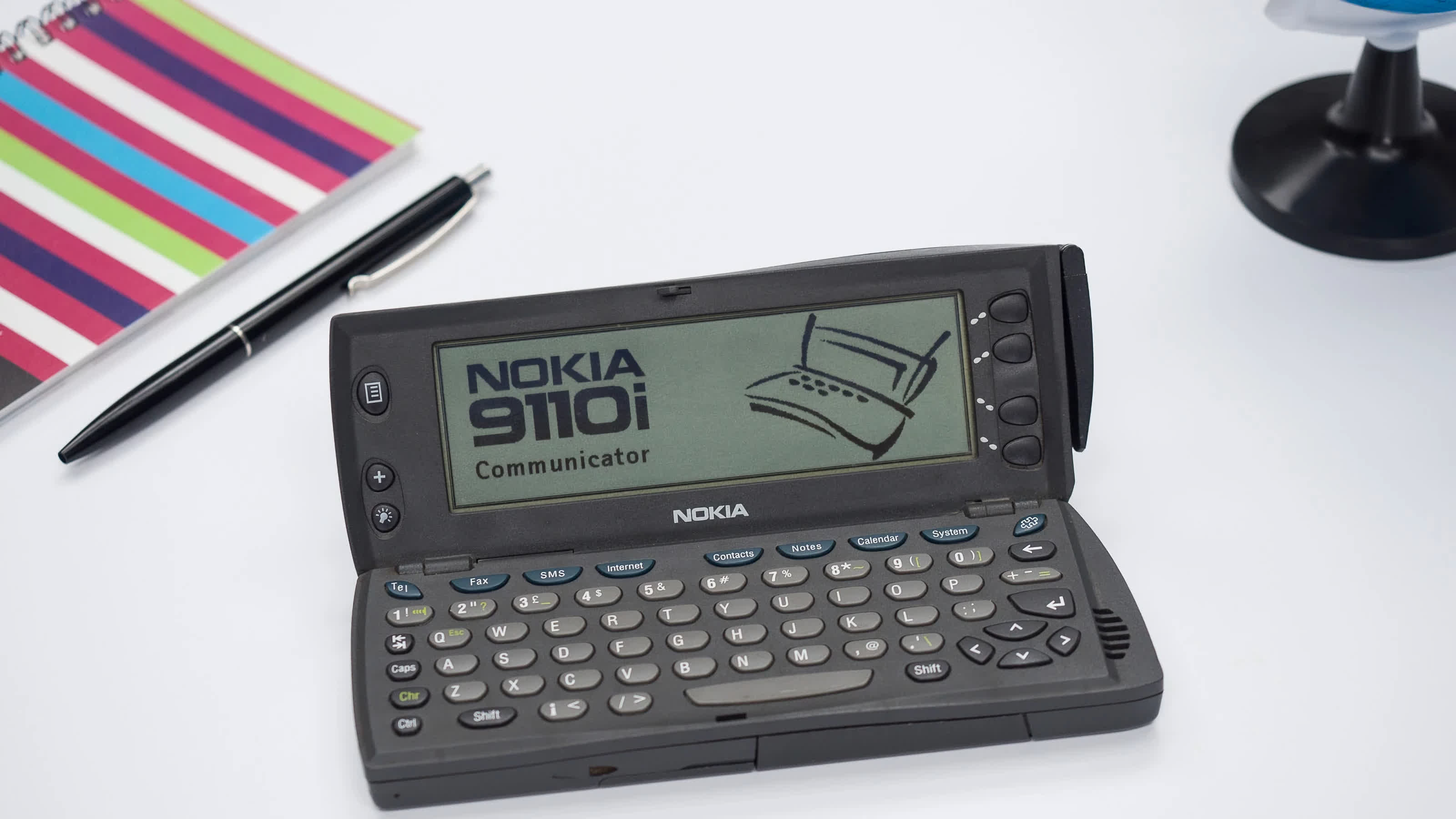
The Communicator series were a significant departure from Nokia’s core competencies of creating traditional phones with simple text interfaces that could easily be adapted for local markets. By comparison, Communicator devices were a more complex endeavor that required a much of the resources dedicated into developing and maintaining an operating system with a graphical interface, various applications, and supporting a variety of networking standards.
Despite growing popular in Europe, the first Communicator phones were a niche product in the US, as Nokia failed to convince carriers to switch over to the GSM standard. On the software side, the company quickly realized after the experience of the Nokia 9000 and 9110 that it had to switch from the resource-hungry GEOS to a more efficient mobile operating system. That OS was EPOC, a 32-bit operating system developed by a company based in UK called Psion, and an ambitious project that would form the basis for something much bigger in the coming years.
Nokia wasn’t the only company that saw the threat of Microsoft engulfing the phone space with a mobile Windows variant. Ericsson and Motorola were similarly concerned of the potential impact on their businesses, so together with Nokia they created a joint venture called Symbian to develop an open mobile operating system that would provide equal opportunity for every player in the phone space.
The idea behind the Symbian operating system was simple — to create a microkernel and its associated libraries and a separate user interface that would be easy to modify to suit competing visions for what a smartphone can do and how that functionality should look like. Companies would pay the same licensing fee to use Symbian OS, ensuring no single entity had complete control over the operating system, and they would be allowed to develop proprietary interfaces on top of it. Developers would have an easy way to tap into the potential of the Symbian platform with greater ease without having to spend too many resources to support phones from different manufacturers — at least in theory.
One milestone was Nokia 9210 bundle with Concord Eye digital camera. Some journalists used that in sport events since it was the fastest way to get news pictures to the newspapers. pic.twitter.com/VHMUo8rts5
— Timo Helosuo (@helosuo) March 29, 2020
It didn’t take long before the first Symbian-powered phone landed on the market. In 2001, Nokia launched the third generation Communicator phone (also known as the Communicator 9210), running Symbian version 6, building on the foundations of EPOC version 5. This was a short-lived OS platform dubbed “Crystal” that Nokia would improve upon and brand as Symbian “Series 80” later on. The Communicator 9210 hardware was the normal evolution of the 9000 series, with a color internal screen with a resolution of 640 by 200 pixels. When folded, it looked like a normal brick phone with a tiny monochrome screen (80 by 48 pixels) and a fold-out antenna.
This was a pretty powerful device at the time, with a 32-bit Arm9-based CPU running at 52 MHz and 16 MB of memory and IrDa interface. It was also Nokia’s first phone with expandable MMC memory, the precursor technology for today’s SD cards. Nokia improved on the design Nokia 9210 with subsequent models, starting with the 9210i in 2002 which featured 40 MB of internal storage, support for video streaming, and a more reliable, LED-backlit LCD panel. In 2005, Nokia introduced the Nokia 9500 with a more mature Symbian Series 80 UI, Wi-Fi connectivity, and a camera — all in a smaller and lighter chassis “only” 24 mm thick and weighing 222 grams. This model was followed by the Nokia 9300 which offered a similar set of features in an even smaller and lighter design weighing 167 grams.
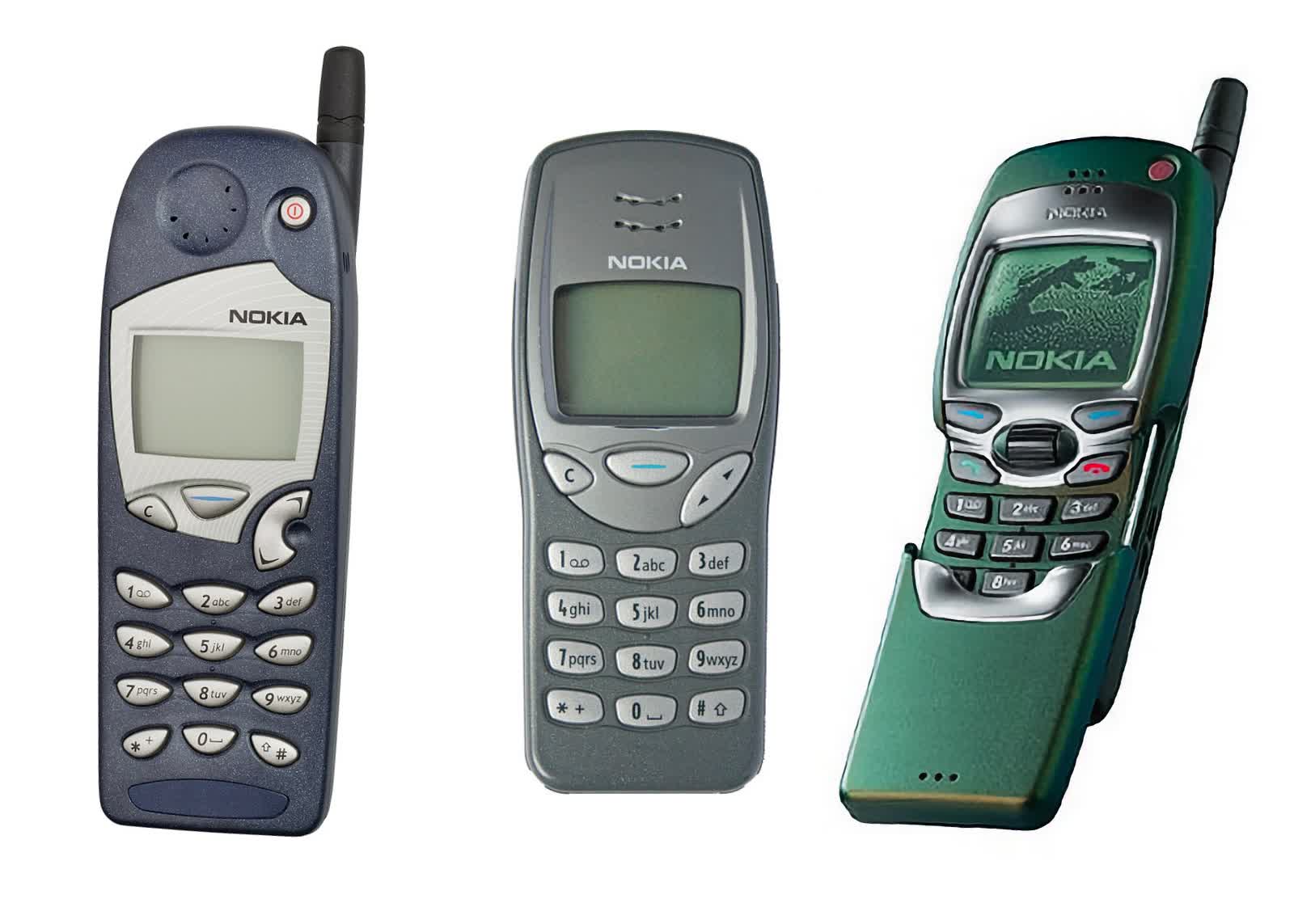
… on the mainstream side, Nokia released some of the most iconic feature phone designs in history between 1998 and 2000.
Meanwhile, on the mainstream side, Nokia released some of the most iconic feature phone designs in history between 1998 and 2000. The Nokia 5110 was the first phone to offer replaceable faceplates and also among the first to bundle the game Snake.
This phone was succeeded by the Nokia 3210. The more compact phone had great battery life, it came in several bright colors and could be easily customized with a myriad of phone covers and classic ringtones, it was able to survive several drops to the pavement, and we can only imagine how many human lifetimes were wasted playing Snake on it. It was an affordable phone designed by a team led by Frank Nuovo, and it didn’t launch with the typical hype and fanfare we see today, but still managed to sell more than 160 million units worldwide.
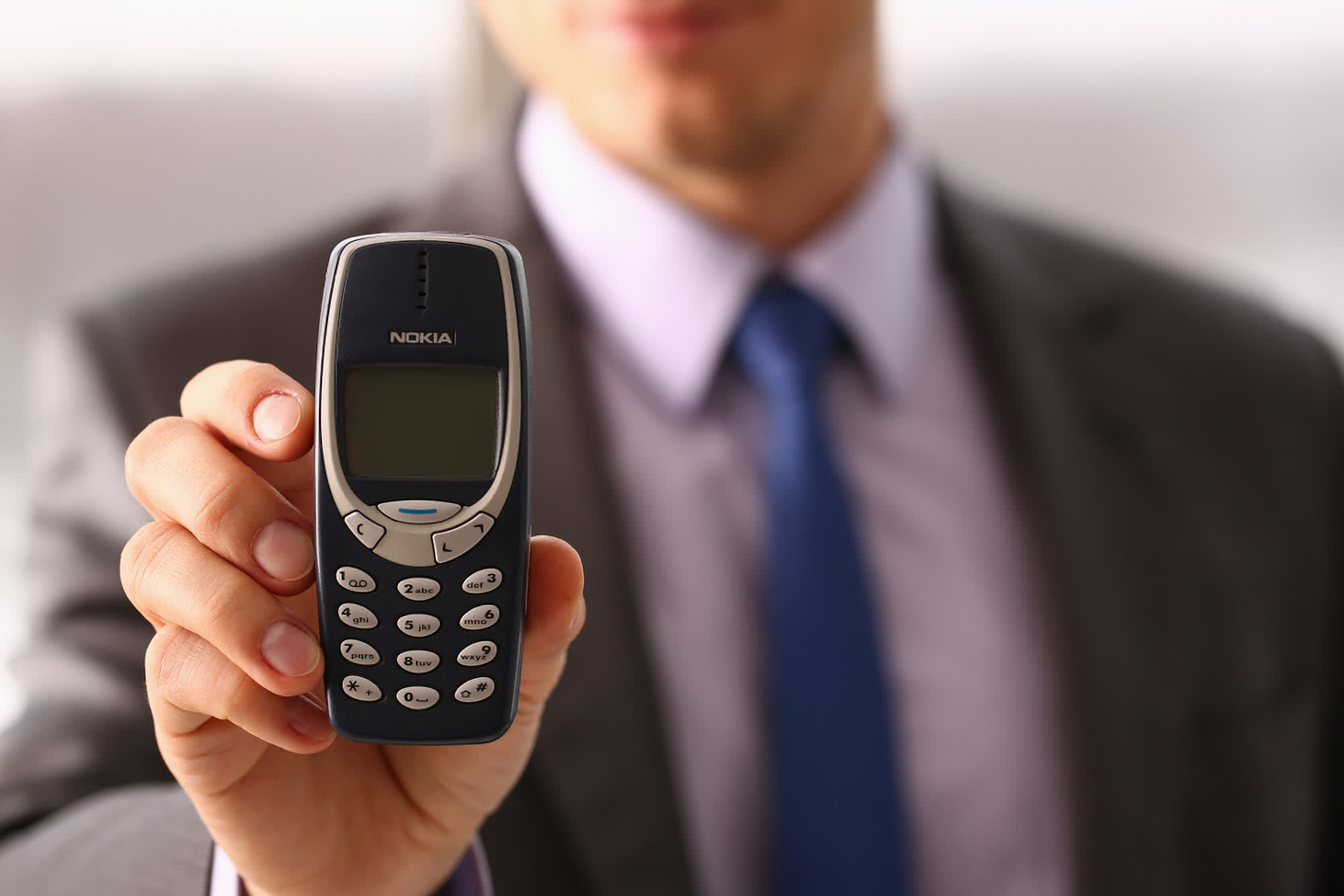
The Nokia 3310 that followed it sold an additional 126 million using the same recipe of simplicity and durability, with a friendly design that was meant to appeal more to a general consumer audience as opposed to the bland business-oriented phones of the 90s. And while the Nokia 3210 and 3310 weren’t given too much media attention at the time, they played an important role in the mobile revolution and reveal some important lessons about what made Nokia so successful in the early 2000s.
A few of years before that, in 1996, the Nokia 8110 was notable for using a slider form factor and because of the design’s curvature, it was later nicknamed the “banana phone.” The phone was lightweight and mostly oriented towards business, and thus not very well known until an altered version of the handset made an appearance in blockbuster movie “The Matrix.” The phone shown in the movie had a spring-loaded cover that was not part of the actual design, but this functionality was present in the Nokia 7110 released in 1999.
Another notable phone released that year was the ultra compact Nokia 8210, when the miniaturization of a phone’s footprint was a key selling feature itself. Also featured in several movies, the 8210 could store up to 250 names and came with an infrared port for communicating with a compatible PC or a printer. The Nokia 8210 was a popular feature phone for many years to come among users who desired a small phone with a long battery life and the absence of modern wireless connectivity that could be more easily tracked.
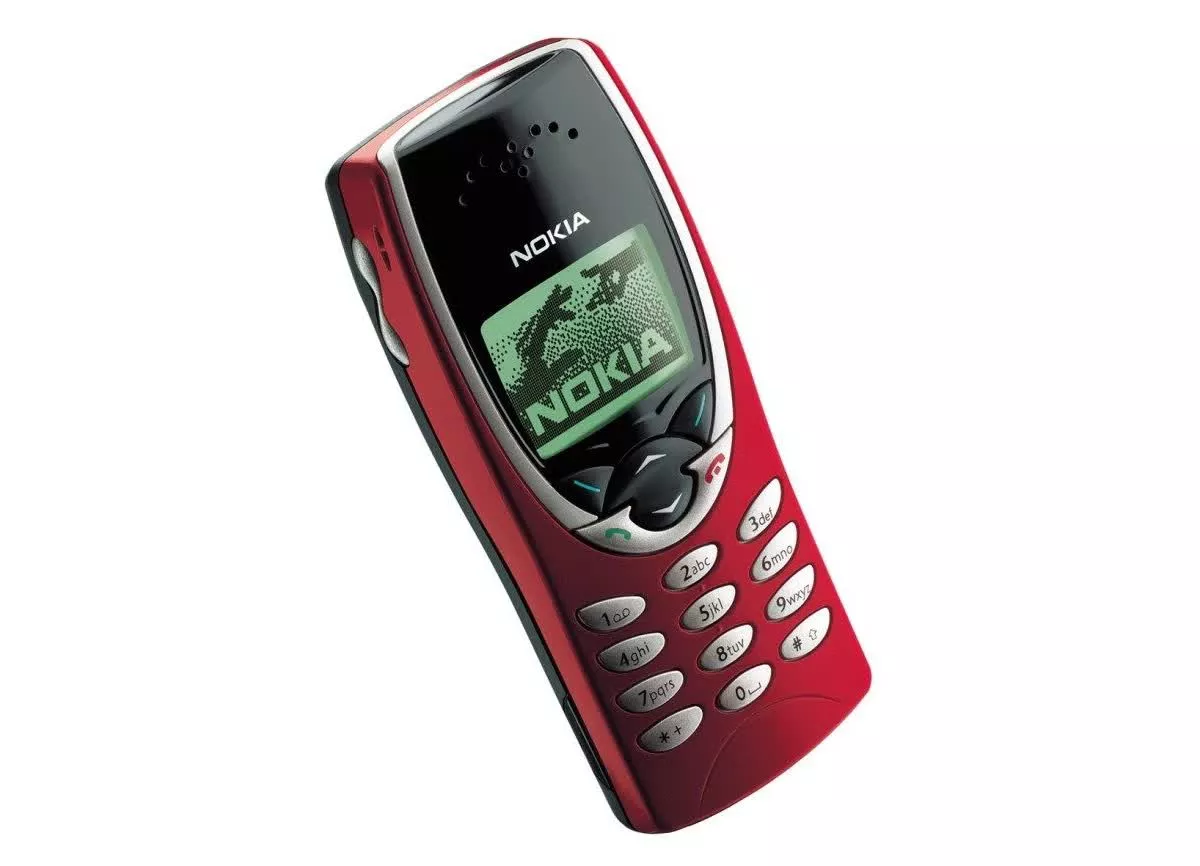
Frank Nuovo joined Nokia in 1993 and began working full time as head of the company’s global design team in 1995. In the subsequent years he established a dedicated design center in Los Angeles, California, followed by two more in England and Finland. These were supplanted by several remote teams in Japan, China, Germany, and Denmark. In doing this, Nuovo was able to coordinate his teams to experiment with bold design concepts around the shape and form of Nokia phones, a design direction dubbed “Vision ’99”. He also applied Nokia’s strategy of catering to various needs and tastes, and led to the crystallization of phones with characteristics that appealed to market segments such as “youth,” “sport,” “premium,” “luxury,” and “business,” all of which had never been used before by phone makers.
In other words, Nuovo saw an opportunity in using the time between mobile chipset life cycles to get creative about the overall presentation and feel of Nokia phones. The company’s design team made an important change with the Nokia 3210, by tucking the antenna inside the phone alongside the battery pack, which had to be modified to create the additional space.
At first, this was a source of tension between designers and engineers at Nokia, and it made the phone wider and bulkier at a time when the industry was pushing in the opposite direction with every new design. However, there were implications of this design choice that were positive — the wider chassis meant the phone could have a wider screen, the shorter body meant it was more pocketable than other phones, and the removable keyboard and back covers led to the blossoming of a new market for Nokia phone accessories.
The Nokia 3210 also established the idea that phones could double as entertainment devices to pass the time, thanks in no small part to a simple and addictive game called Snake. If you didn’t like the included ringtones on the phone, you could compose new ones instead. This, coupled with the infinitely customizable phone covers made the Nokia 3210 stand out and earn a lot of consumer mindshare.
It also helped greatly that Nokia was busy staying on top of tech innovations around the GSM standard. In Europe, people were more reliant on pay-as-you-go mobile plans, which led to a habit of saving money using text messages when a phone call could be avoided. Nokia designed the 3210 and 3310 with this in mind, so it made the numeric keypad keys larger, added T9 predictive text technology to make texting faster and easier, and pre-installed “picture messages” that today would look like fossils of the emoji world.
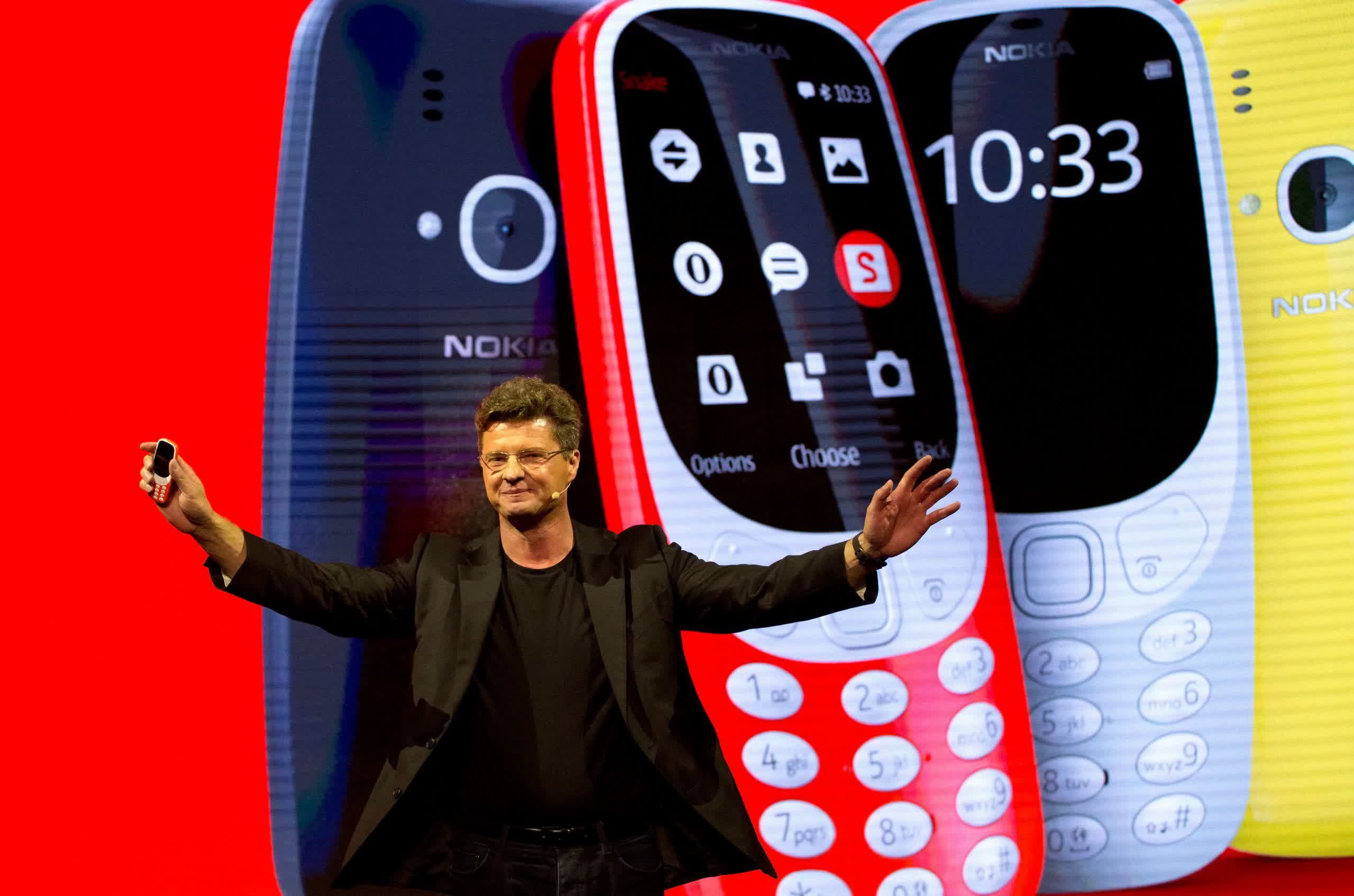
These two phones helped Nokia take the crown from Motorola as the world’s biggest phone manufacturer by volume, and the company held onto that position until Samsung had its moment in 2012. In 2017, HMD Global — a mere shadow of Nokia’s former mobile business unit — paid homage to the Nokia 3310 by launching a rebooted version that kept the same DNA and sported more modern internals. This included a color screen with a resolution of 240 by 320 pixels, 16 MB of internal storage expandable via a microSD slot, a 2-megapixel camera, and a simple interface whose most complex component is an Opera mini browser — all for $60. It generated a lot of buzz, but it also came at a time when any feelings of nostalgia this would evoke were mixed with a sour taste of disappointment in what had become of Nokia’s mobile business.
From Nokia the Underdog to Nokia the Giant
Nokia Mobile Phones knew it had all the right ingredients within its organization to carve itself a path to dominance in the phone industry, and was eager to execute on its vision of what a smartphone should be like, since NMP executives were convinced this would be the next big thing in tech. The period between 2000 and 2010 gave way to numerous Nokia phones, where designers and engineers worked together to enable various forms and feature sets that would cater to almost any taste, sometimes going well into the unconventional.
At the same time, NMP was looking into how it could leverage alliances with other organizations to infuse new devices with useful services. The company had joined the Wireless Access Protocol (WAP) Forum, and was pursuing partnerships with telecom companies, banks, and Internet companies like AOL and Amazon. Before long, however, NMP executives realized these efforts were not a sound strategy as many of these alliances were open platforms where competitors would also be able to draw value.
Nokia’s strength was its ability to iterate fast on its phone designs and catering to a diverse customer base. This would also prove to be its weakness later on, but in the early 2000s Nokia established a strong foothold on the phone market by making phones “cool” and easy to use.
The company also established a “Digital Convergence Unit” led by Anssi Vanjoki, who was enthusiastic about the many opportunities afforded by color displays, more efficient mobile chipsets, and the Symbian platform.
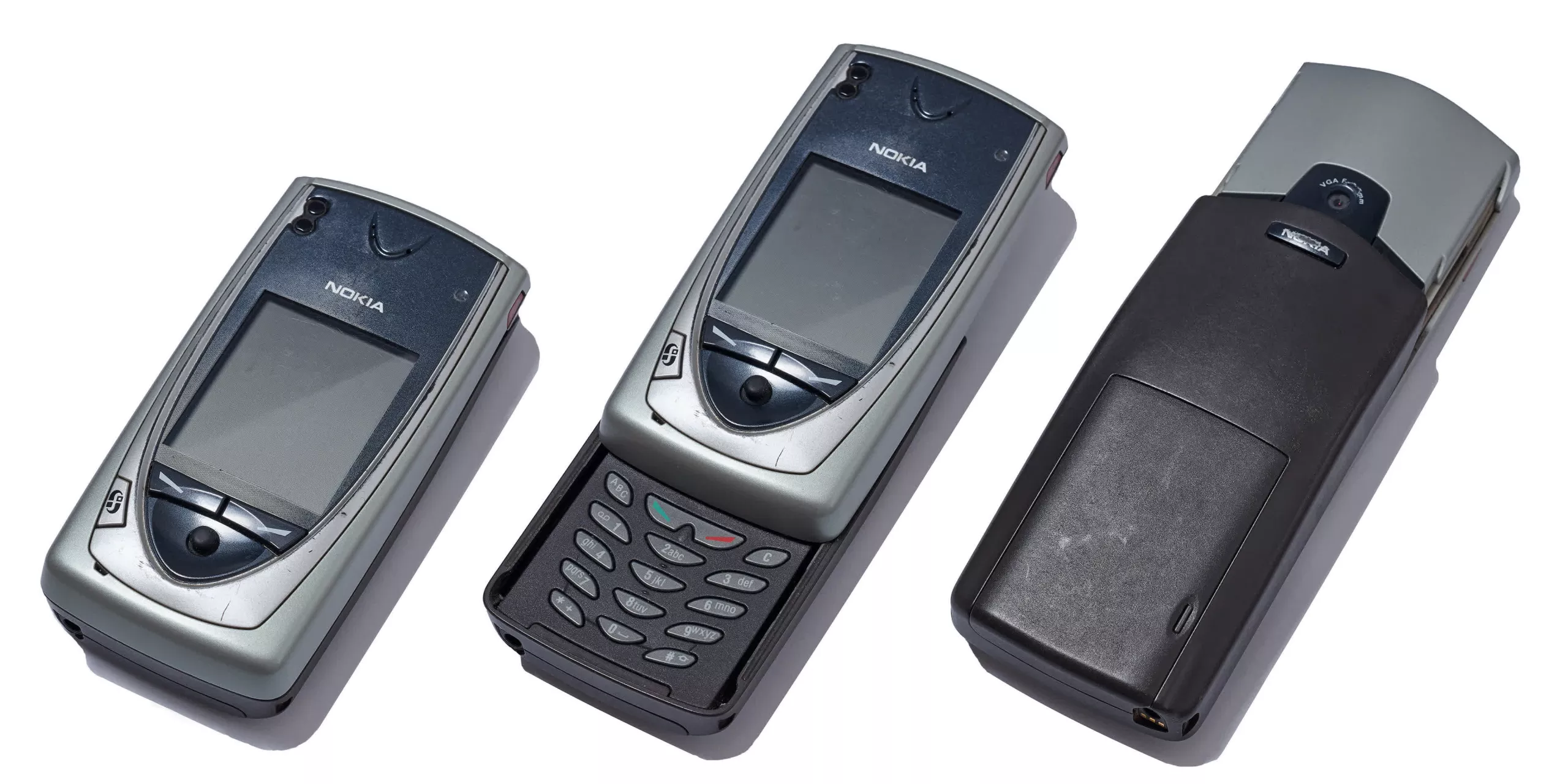
During the early 2000s, Vanjoki led a project codenamed “Calypso,” where no less than 500 Nokia engineers focused on integrating a digital camera into a phone, something that was frowned upon by executives from Nokia’s core phone business, who considered it a waste of resources.
During the early 2000s, Vanjoki led a project codenamed “Calypso,” where no less than 500 Nokia engineers focused on integrating a digital camera into a phone, something that was frowned upon by executives from Nokia’s core phone business, who considered it a waste of resources. They would soon be proven wrong with the arrival of the Nokia 7650, which offered a built-in VGA camera at a time when rivals only offered this feature as an add-on that was cumbersome to use.
The Nokia 7650 was the company’s most important launch in 2001, and the first to utilize the Symbian S60 platform with its easily recognizable icon-based menu. The screen was 2.1 inches in diagonal and had a resolution of 176 by 208 pixels — not enough to display the 640 by 480 stills the 7650 was able to capture in full glory. However, a bigger defect was the limited 4 MB of internal storage that was not expandable in any form.
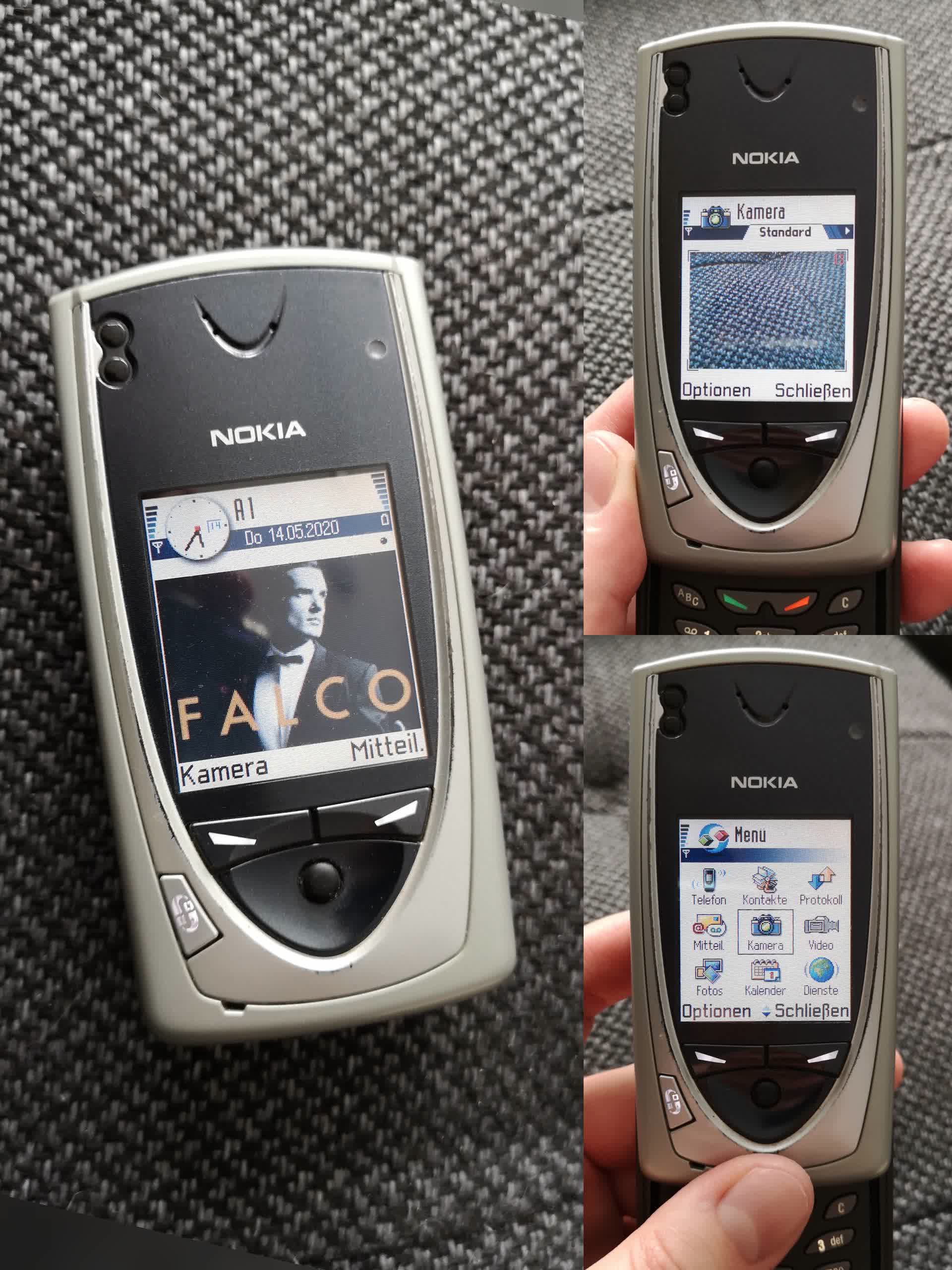
Elsewhere, the Nokia 7650 was equipped with a powerful Arm9-based CPU running at 104 MHz, and was able to run both Java and EPOC applications, something that made it appealing to many despite the steep price of €600 (€822/$970 adjusted for inflation). It had Bluetooth connectivity, and a sliding keypad design that allowed it to be compact enough to easily fit in your pocket. It was also able to take advantage of Multimedia Messaging (MMS), meaning you could send pictures to someone else with the same ease of sending an SMS text message.
Nokia promoted this new and exciting phone around the theatrical release of the movie “Minority Report,” which increased its visibility and contributed to strong sales. But more importantly, the 7650 set the standard for how a camera phone should be designed, and paved the way for several bold designs that would propel the company to new financial heights.
This wasn’t the first true camera phone — that title goes to Sharp’s J-SH04 which launched in 2000. However, the resolution was poor and this phone was only available in Japan, effectively limiting its visibility when compared to Nokia’s 7650, which quickly became the most popular phone in Europe months after its release, despite fierce competition from Palm OS and Windows CE devices.
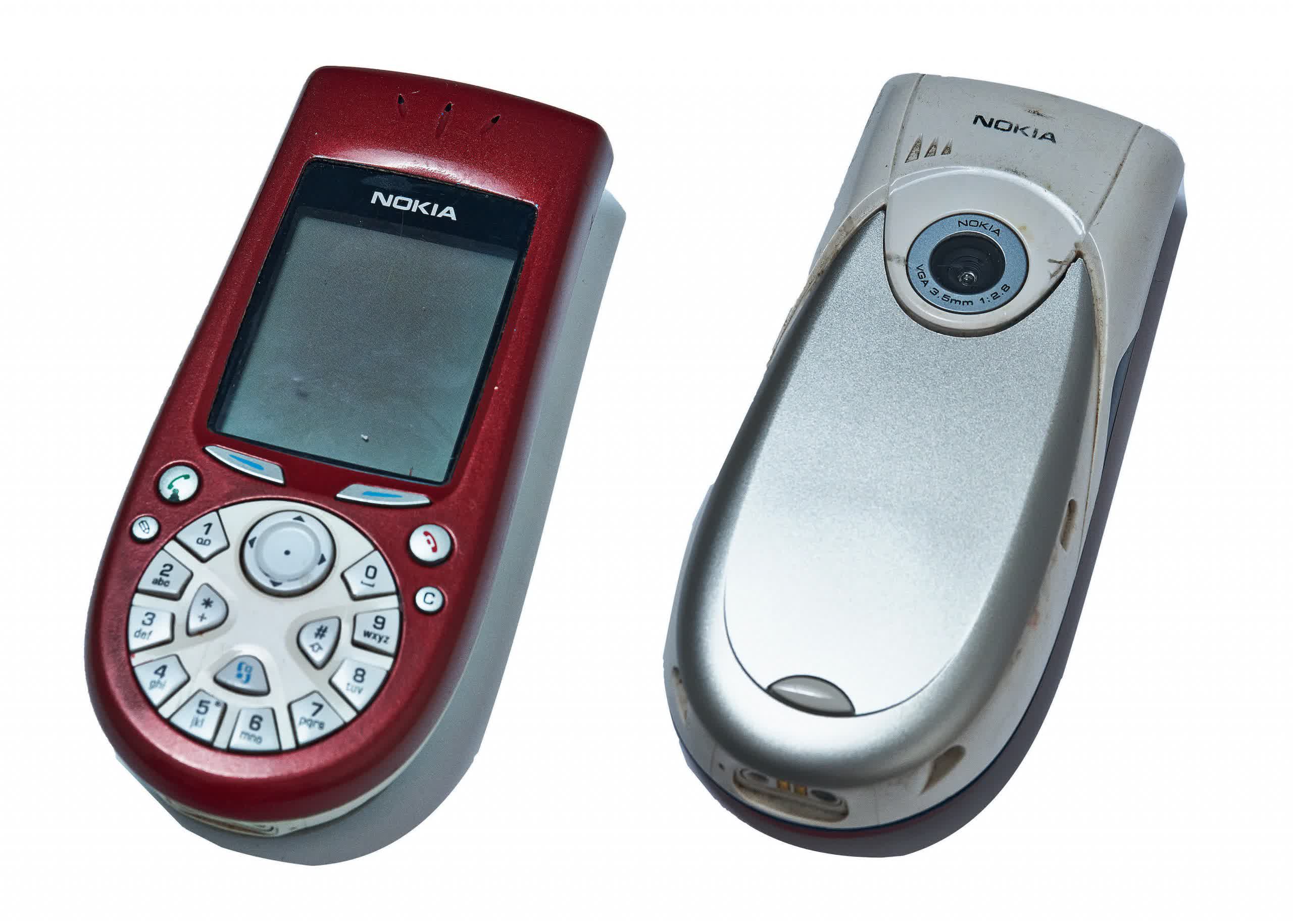
The success of the Nokia 7650 paved the way for the Nokia 3650’s arrival in 2002. This new phone had nearly identical specifications but sported a storage expansion slot and traded the sliding keypad design for an unusual, circular keypad.
The company positioned this as a direct competitor to the Sony Ericsson P800, which sported a more conventional design and was priced in the same $400 price range ($605 adjusted for inflation). The circular keypad was more of a conversation starter than an efficient way to dial or write SMS messages, and small things like a menu to switch between open applications as well as a feature-rich calendar contributed to a good overall user experience.
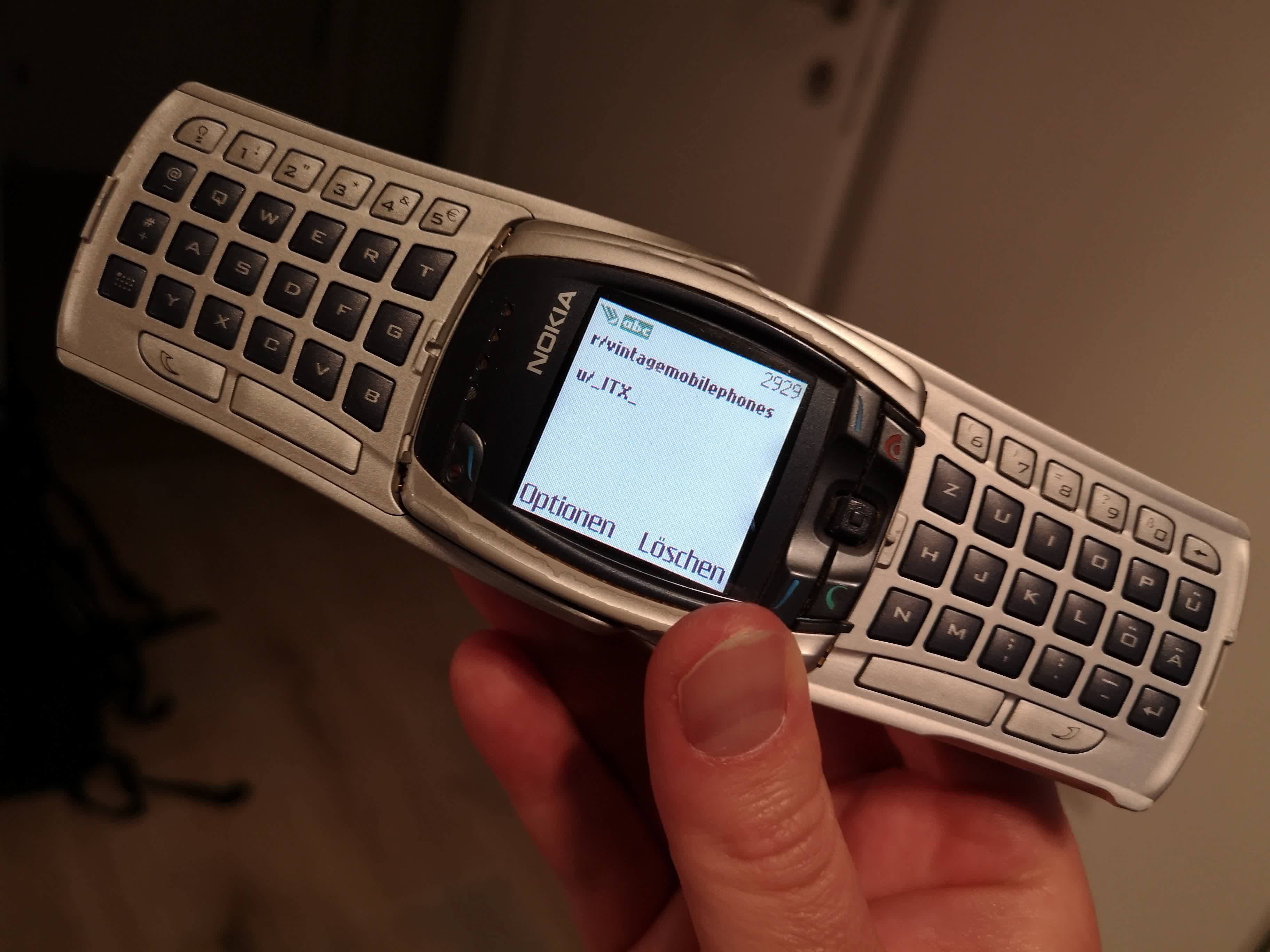
That same year would see the arrival of the Nokia 6800, which sported a fold-out QWERTY keyboard which made sending SMS messages easier. It also had a built-in email client, which made it appealing to businesses.
Nokia iterated on this design until 2005, but the most popular of the 6800 series was the 6820, which was more compact while retaining virtually the same feature set as its predecessors.
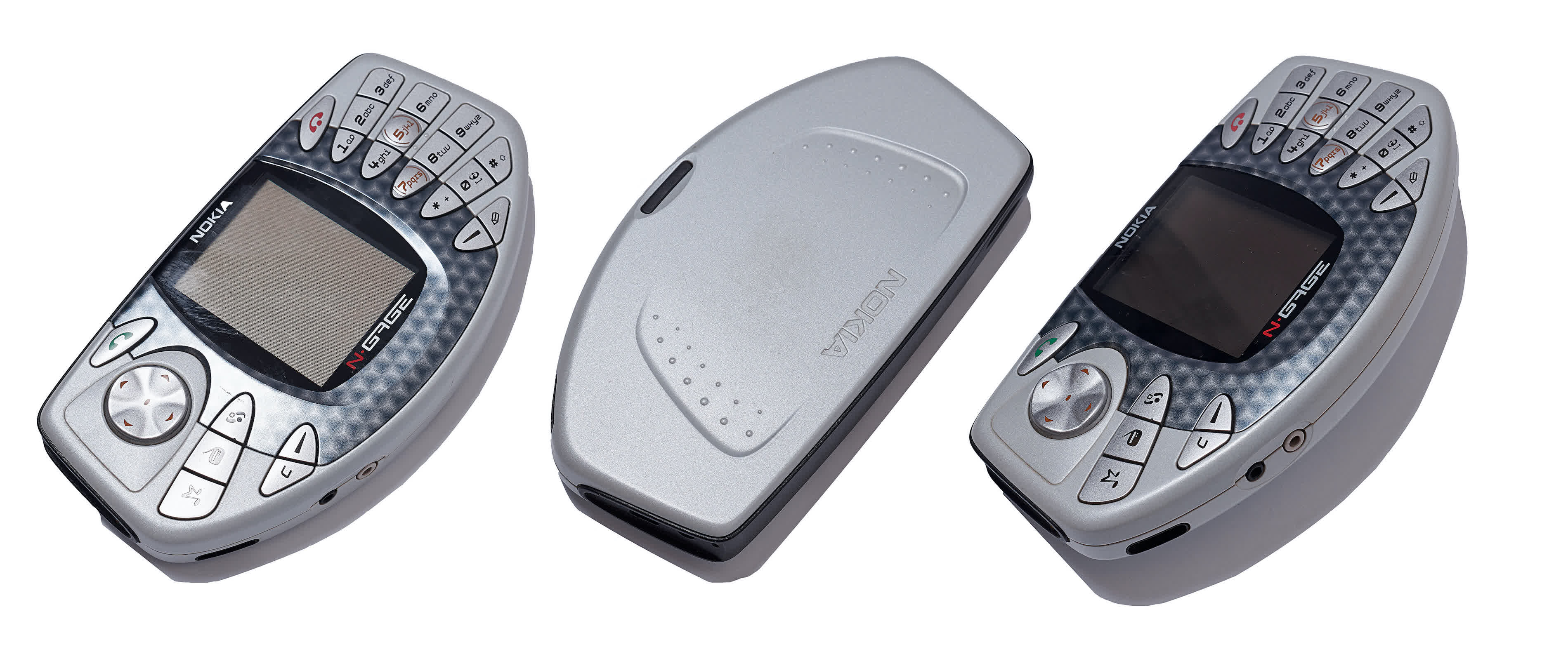
In 2003, Nokia launched the N-Gage, a hybrid between a handheld console and a phone designed to appeal to the gaming crowd. This was a time when most people did not typically associate a phone with entertainment, and Nintendo was conquering the hearts of millennial kids with the iconic Game Boy Advance handheld. While other companies were trying to steal Nintendo’s thunder by developing alternatives equipped with more powerful hardware, Nokia’s approach was to make a multifunctional device that removed the need to carry separate devices for different activities.
It was also a time when the Java 2 Micro Edition (J2ME) download scene was starting to develop, and the N-Gage was ahead of its time in many ways. It was a fully-featured Symbian phone with a slightly smaller screen than the Game Boy’s 2.9-inch 240 by 160 panel, but more powerful internals. It had online multiplayer games, and Nokia actually positioned this device as a competitor to the Game Boy Advance, but it had few very important design flaws. For one, the controls were awkward for gaming, inserting game cartridges required removing the battery, and the “taco phone” had to be held in a certain position to be used as a phone. These issues were largely fixed in the N-Gage QD that was introduced in 2004, but by that time the novelty had worn off.
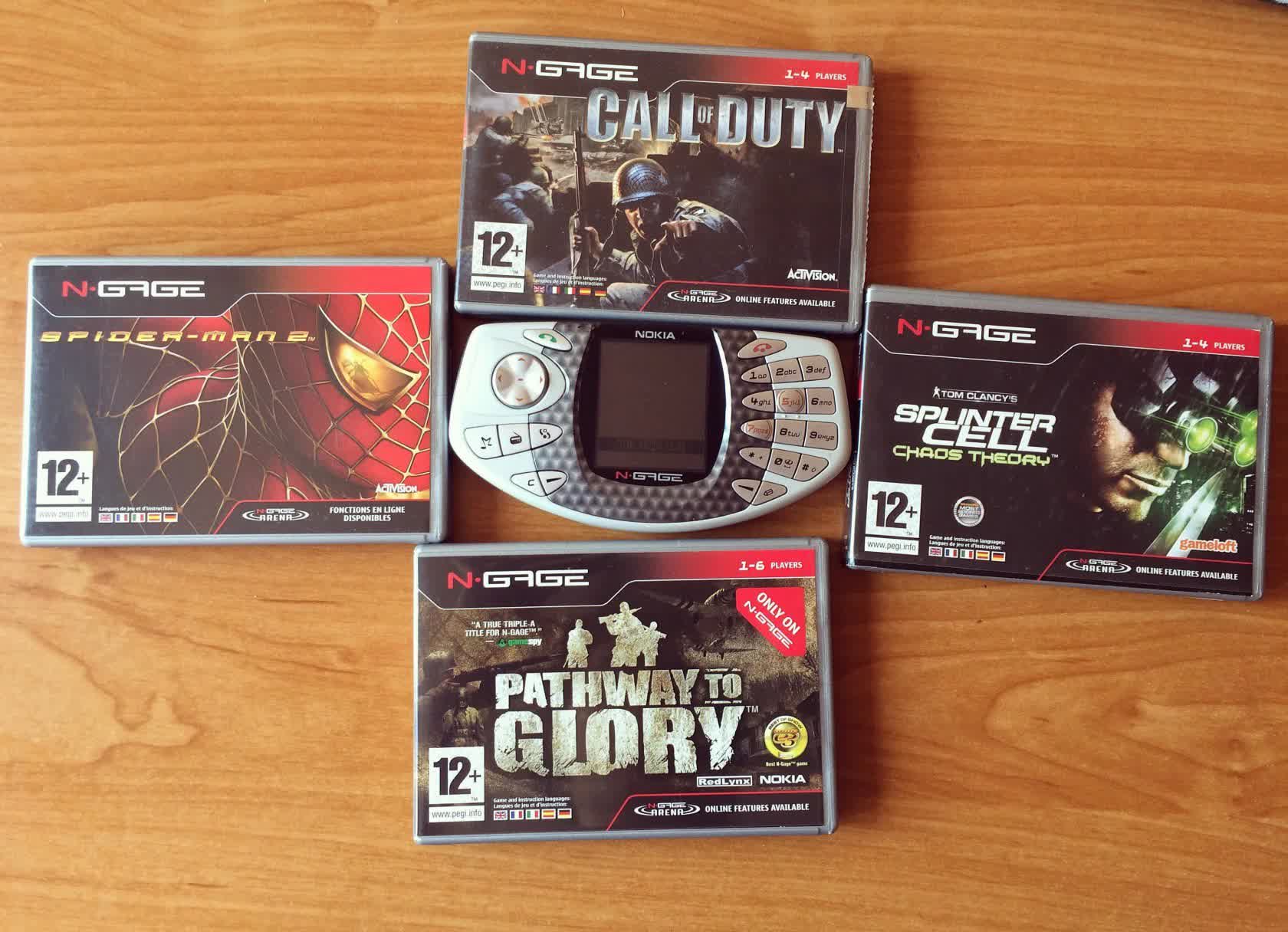
The N-Gage failed miserably at launch despite being available in 30,000 stores globally, and Nintendo managed to sell 100 times more Game Boy Advance units than Nokia’s “taco phone” during the first week after its launch.
Its appeal may have been marred by the relatively steep price — the Nintendo Game Boy Advance’s asking price $200 ($295 adjusted for inflation) was easier to swallow than the $300 ($443 adjusted for inflation) N-Gage. It also didn’t help that the supposed exclusive games of the N-Gage quickly spilled over to other phones soon after launch, further limiting its appeal to consumers.
Even as retailers started dropping the N-Gage from their stores, Nokia kept pushing it until 2006 and published the last game for it in 2007. By that time, it’s estimated that Nokia sold some three million units, or three times less than the company had wished and 27 times less than Nintendo’s Game Boy Advance managed over its lifetime. This was a hard lesson for Nokia.
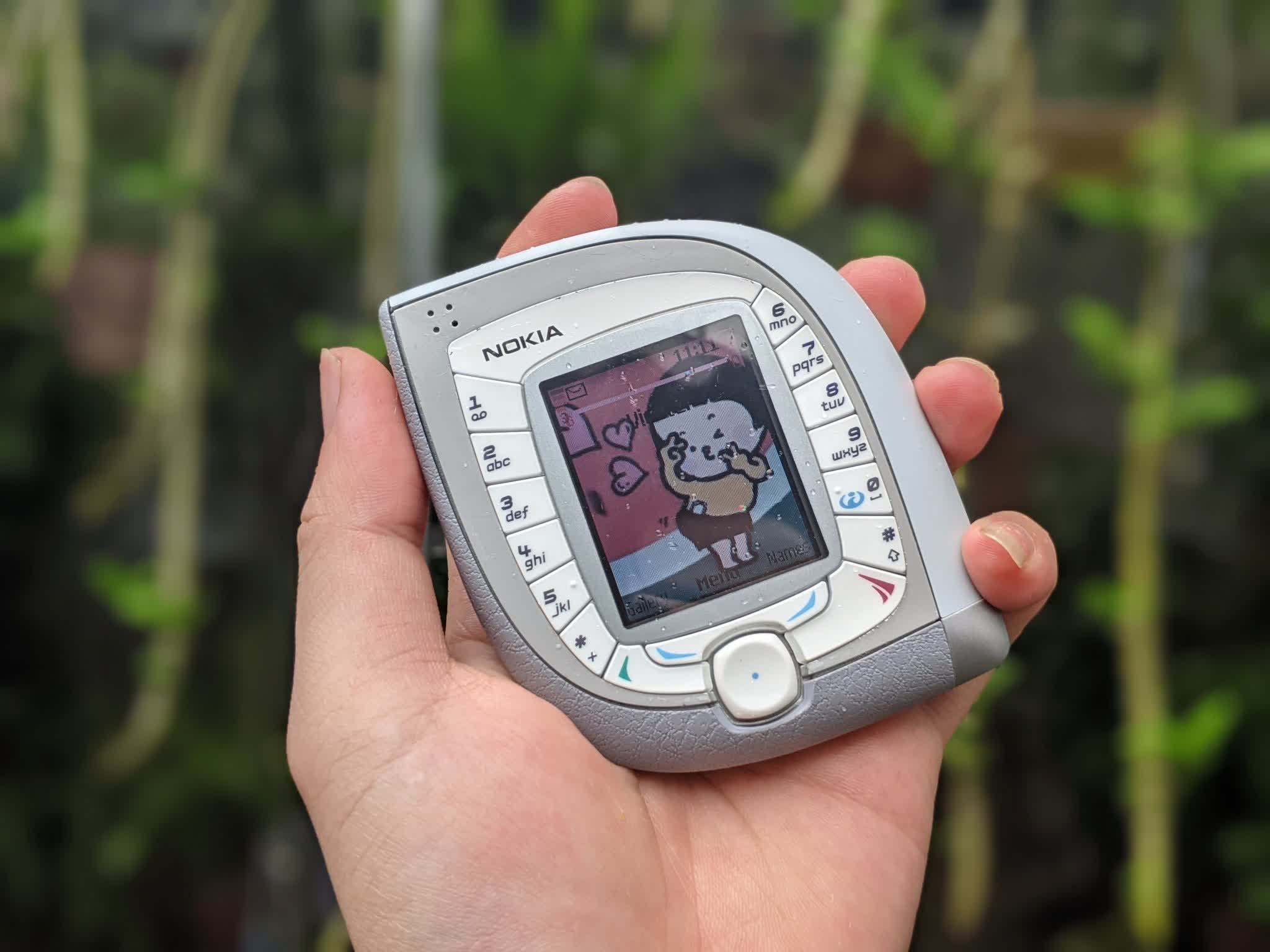
If the N-Gage wasn’t an already polarizing design, the Nokia 7600 in 2004 showed Nokia wasn’t afraid to continue its experimentation with unconventional phone design. This time, however, the phone in question was intended as more of a fashion statement that would last for a short while, only to be quickly replaced by a novel design that would theoretically force consumers to upgrade their phones more frequently.
The teardrop shape and colorful plastic construction with interchangeable covers couldn’t really be described as the pinnacle of design, but suffice to say you could get some stares if you were seen using it. The keypad was split into two rows that made one handed use impossible in most situations, and two handed use wasn’t as enjoyable as that of say, the Nokia 6800. Its size wasn’t gargantuan, but despite weighing just 123 grams its wide design made it difficult to hold comfortably in the hand while on a phone call.
This was a 3G phone — Nokia’s second after the 6650 — but its other specifications were relatively low-end and the steep price meant it was less accessible than alternatives. Battery life was not something to write home about, and despite being offered for free as part of some mobile plans it never managed to become more than a fashion statement for relatively few consumers.
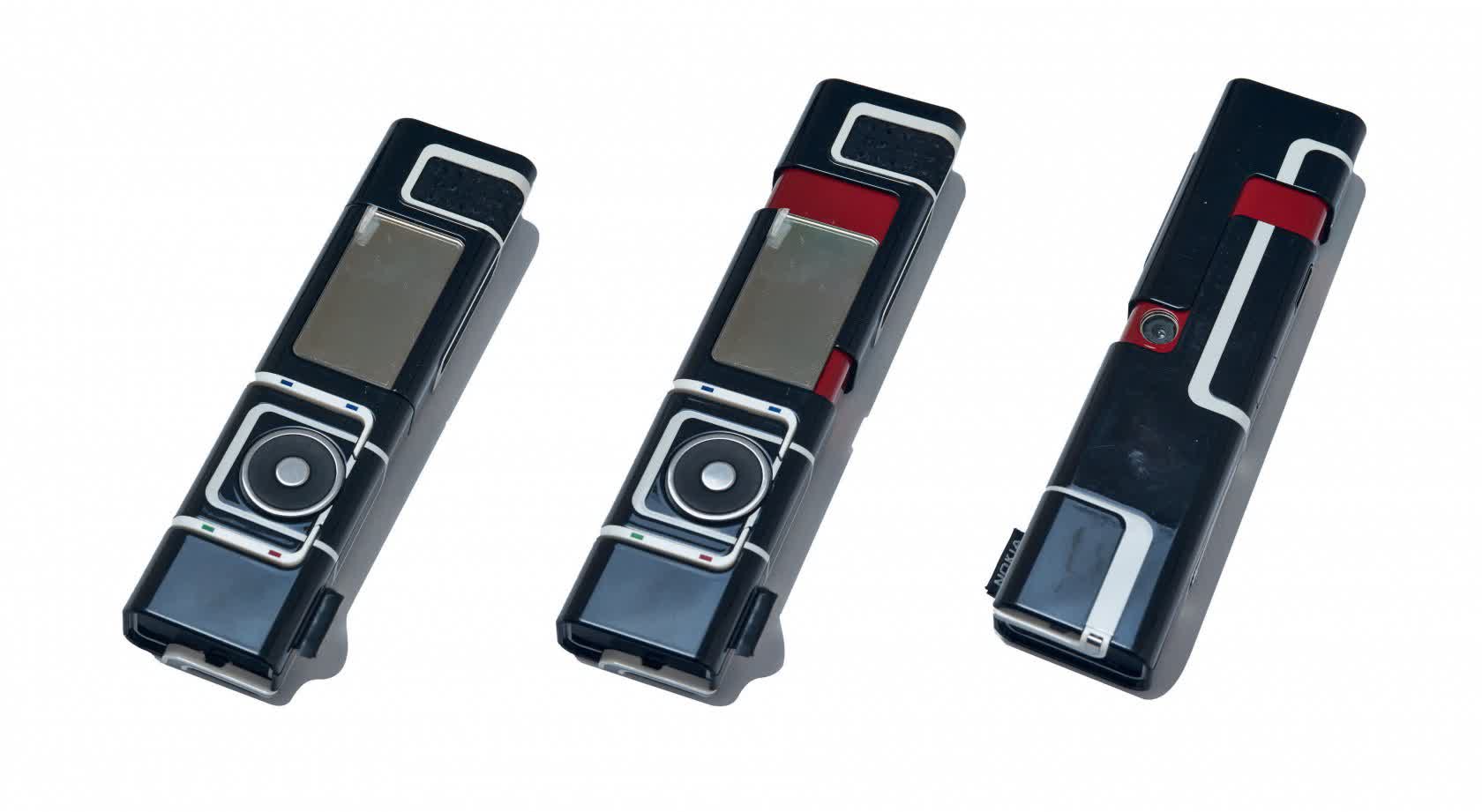
Another notable Nokia phone that landed on the market in 2004 was the Nokia 7280, a.k.a the “lipstick phone.” Just like the teardrop phone, this new model was also designed to make owners stand out in the crowd at the cost of some usability headaches.
The internals and screen were decent for that era, but the eccentric design meant the Nokia 7280 didn’t have a keypad — instead you were forced to use a multipurpose scroll wheel that was a serious test of patience. In a way, it was a physical version of the iPod’s click wheel and had 18 notches that offered a subtle tactile feedback, but it was far from ideal for texting, and even dialing phone numbers took longer than necessary.
Sliding the phone upwards revealed a VGA camera on the back, and holding this phone during calls was much easier thanks to its unique shape. Battery life was average, but what really destroyed the appeal of the Nokia 7280 for many potential buyers was the price — at $600 (a little over $860 adjusted for inflation), it was a hard sell. Either way, it didn’t impact Nokia’s bottom line — the company sold over 66 million phones that year and made well over $1 billion in profit, despite losing market share in the US and Europe and being punished by mobile carriers for being late to the market with its offerings.
That latter part is important, as Nokia had changed its focus from trying to be the first mover to scaling up its successful mobile phone business as fast as possible. In other words, Nokia would wait until new hardware components became cheaper to buy in large quantities and flood the market with a variety of designs that were bold on the exterior but had rather boring or slightly outdated internals.
It didn’t help that Nokia had ventured into services territory in the 90s with its Club Nokia website, where people could download ringtones, games, and picture messages. This was a similar concept to iTunes and the app stores we use today, but carriers didn’t want to see Nokia intrude into what they saw as their role in shaping the mobile experience and software ecosystem (and potential for monetization). As a result, carriers decided to punish the company by pushing alternative devices from Samsung, Sharp, HTC, and LG, which had a significant effect on Nokia’s phone sales.
In 2004, Nokia scrapped the Club Nokia strategy and told carriers it would no longer develop new multimedia services. In doing so, the company would reignite its partnership with mobile carriers, and even decided to work with them on making custom co-branded phones that would cater to their specific needs.
This had an immediate positive effect on Nokia’s performance in every market except the US, which posed some unique challenges the company couldn’t overcome. For one, the US market was mostly consolidated among a few carriers, and they all wanted to sell phones locked to their own networks. Nokia tried selling “unlocked” phones instead, and these were mostly GSM models in a region dominated by carriers that were pushing CDMA. The outcome was that Nokia’s market share dropped into the single digits and remained there.
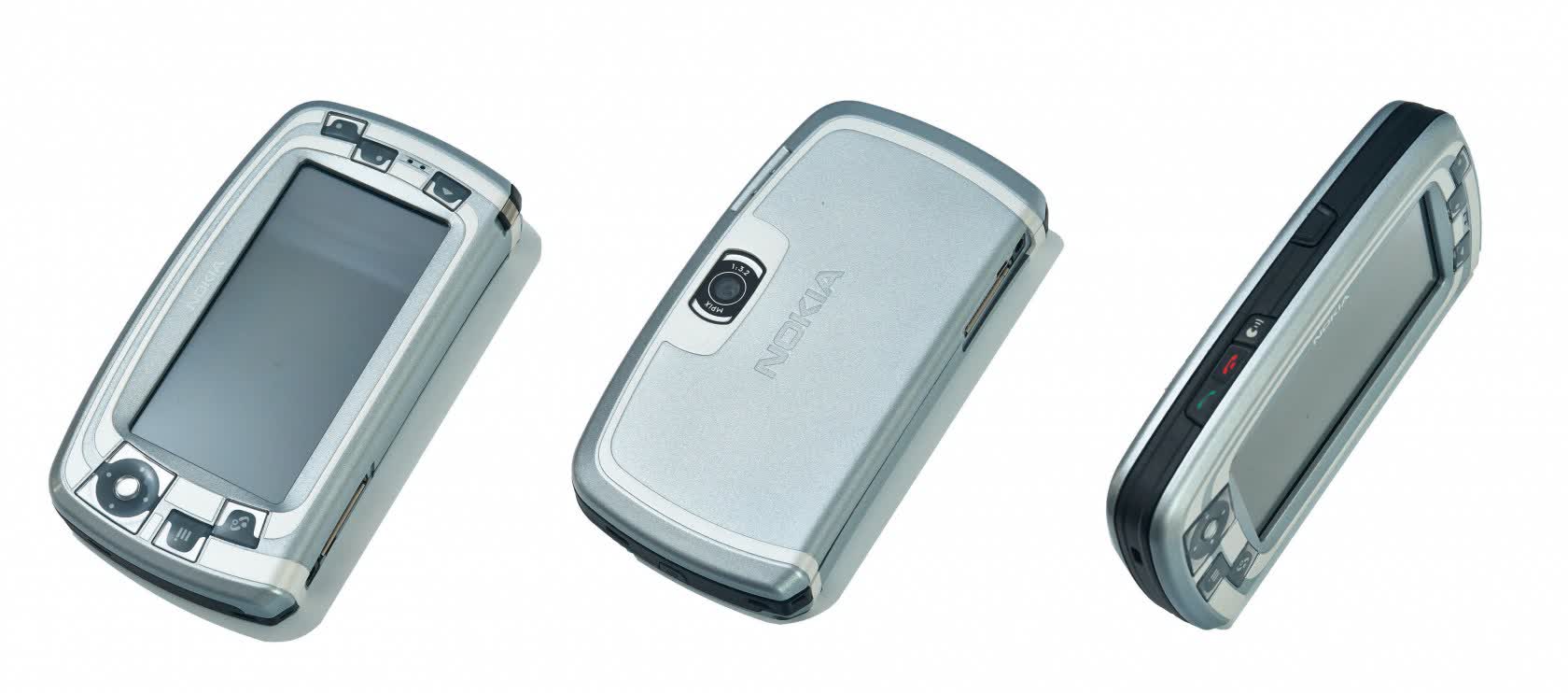
Despite these misfires, Nokia continued to focus on new phone form factors in 2005. One of the more notable models was the Nokia 7710, a widescreen smartphone and the first Nokia phone to sport a touchscreen. It had a large 3.5-inch display with a resolution of 640 by 320 pixels, and was the first and last phone that ran the Series 90 UI on top of Symbian OS. Its gargantuan size made it less pocketable than other phones, the chipset was slow, and the resistive touchscreen wasn’t as pleasant to use as the capacitive screens we enjoy today, requiring a stylus most of the time.
That same year, Nokia introduced the N90 — a 3G phone with a “twist-and-shoot” design that made it particularly interesting for camera enthusiasts. It opened up just like a clamshell phone, but it also allowed you to rotate the display portion in ways that effectively turned it into a camcorder with a 2-megapixel sensor and dedicated record button.
The camera used Carl Zeiss Tessar lenses, as Nokia believed optics played a greater role in producing quality images than the resolution of the sensor. Viewing the resulting images on the display was also a satisfying experience, as it featured a pixel density of almost 260 pixels per inch.
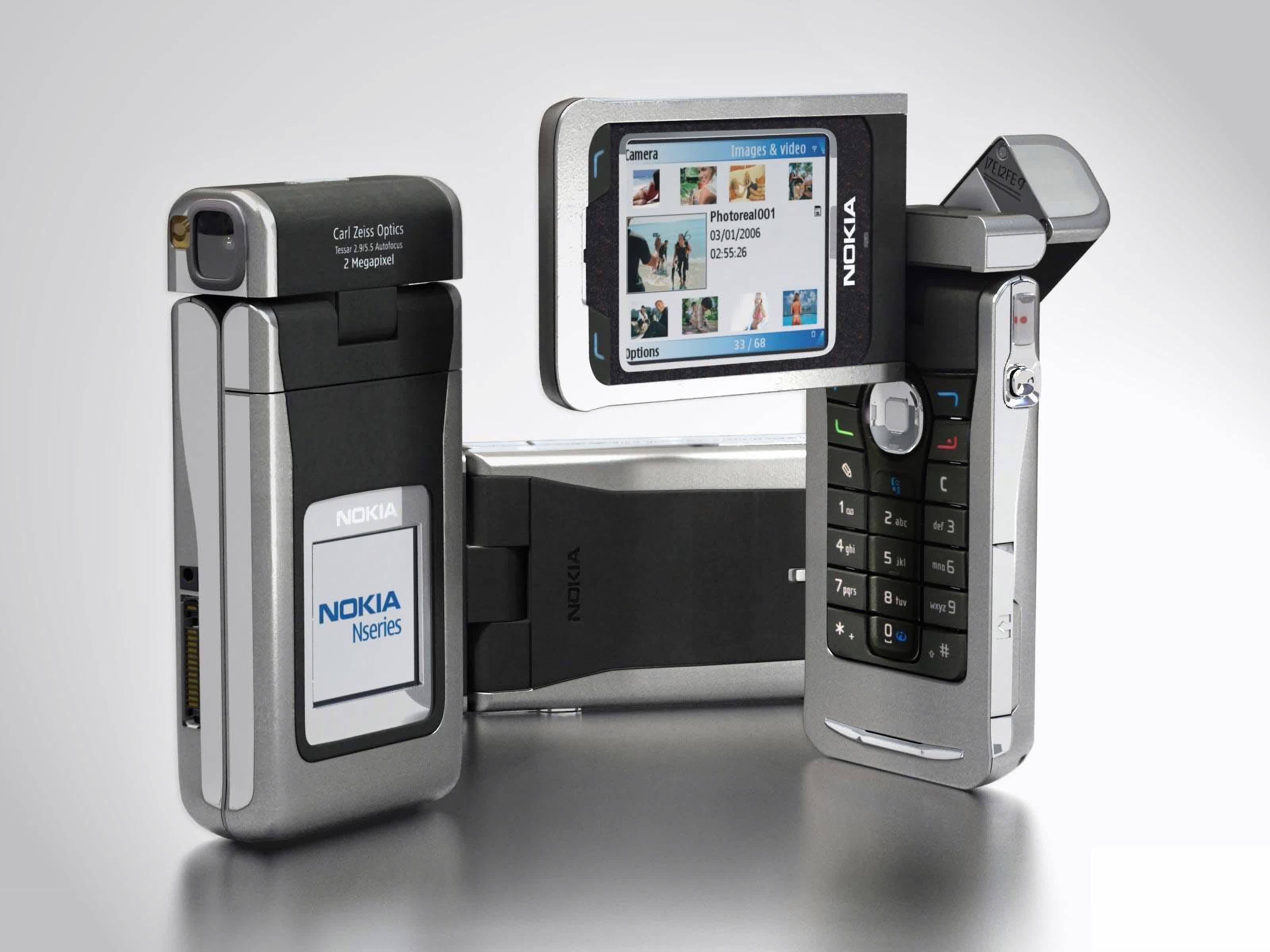
The Nokia N90 featured a Series 60 interface on top of Symbian OS, and the included RealPlayer software allowed users to play MP3 and AAC files. One of the downsides of this phone, however, was that Nokia didn’t integrate a standard 3.5mm audio jack, so most people had to make do with the included headphones that were relatively low quality and sported a proprietary connector. Another was the relatively limited internal storage — 31 megabytes for what was meant to be a media player/camera phone. This was also a $600 ($835 adjusted for inflation) phone at launch, so not exactly a mass market model.
While the N90 catered to mobile photography enthusiasts, Nokia also produced a “music phone” in the form of the N91. This phone sported a rugged, stainless steel construction, and had a much more spacious internal storage — a 4 GB Toshiba miniature HDD for the first revision, and an 8 GB drive in a latter revision. There were dedicated media playback buttons on the front, a lock button to prevent accidental key button presses while listening to music, and a standard 3.5mm headphone jack.
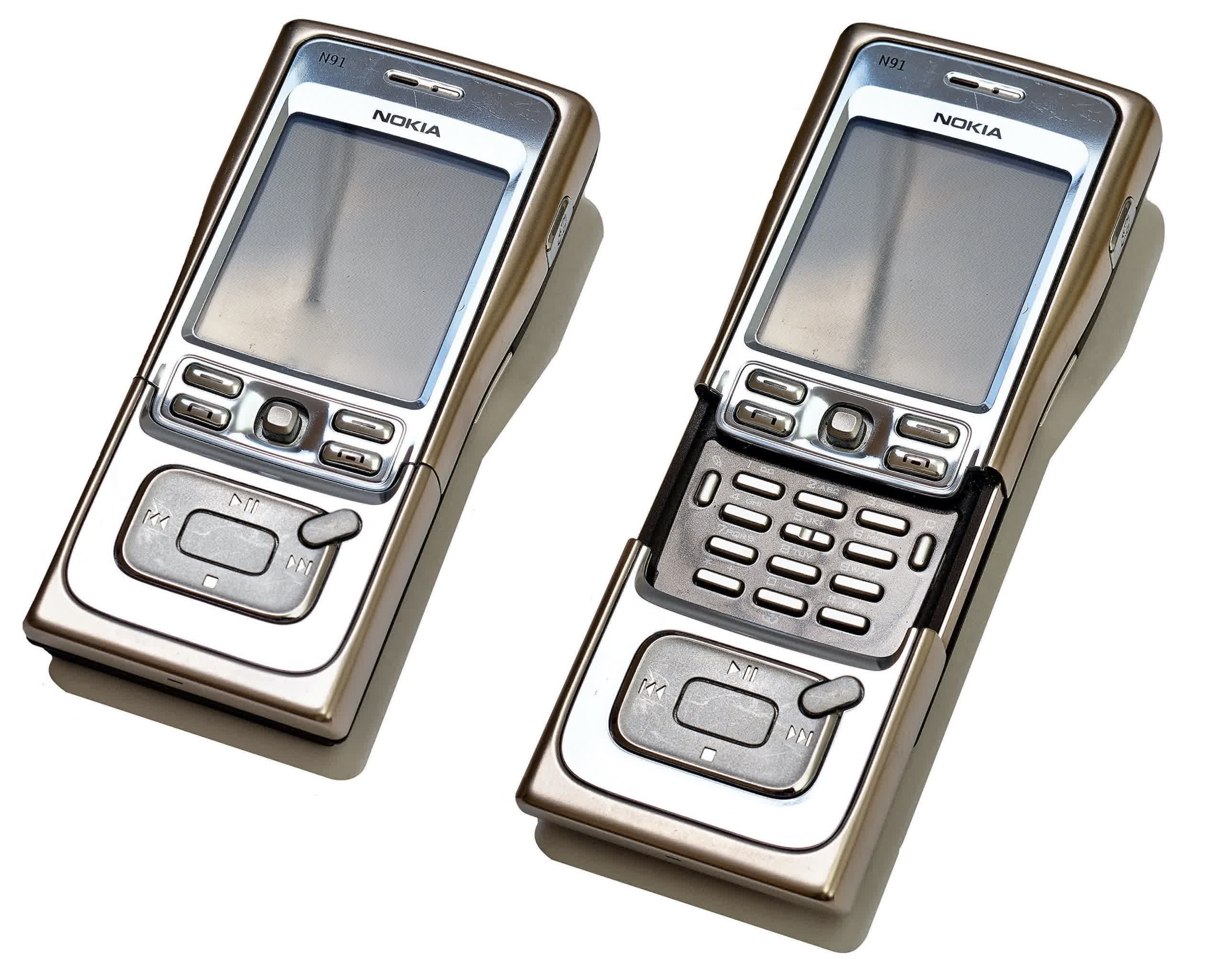
Nokia also added support for Wi-Fi in the N91. The company had recently introduced the Nokia Podcasting app, which allowed you to browse, subscribe to, and download podcasts without the need to connect the device to a PC. Then there was the mobile web browser that offered a polarizing experience, since it would load full desktop pages that were often difficult to navigate on a tiny display.
The Nokia N91 was positioned as an Apple iPod competitor, and in some aspects it offered a compelling package for people who wanted a phone/PDA with music and podcast playback capabilities. At the same time, its much anticipated release was delayed until 2006 due to digital rights management (DRM) issues, the size was certainly not as diminutive as Apple’s iPod, and the media playback controls weren’t quite comparable to the click wheel on the popular iPod. It also cost the same as the N90, making it an expensive proposition.
Nevertheless, Nokia was proud of its N-series phones. Anssi Vanjoki, who was then head of the company’s Multimedia Business Group, told NBC News that Nokia had already become a symbol of mobility, and the N-series phones were meant to “define a completely new category, which is multimedia.” As for the N91, Vanjoki explained that “its multiple connectivity and powerful performance in all areas truly makes it the best mobile connected jukebox.”
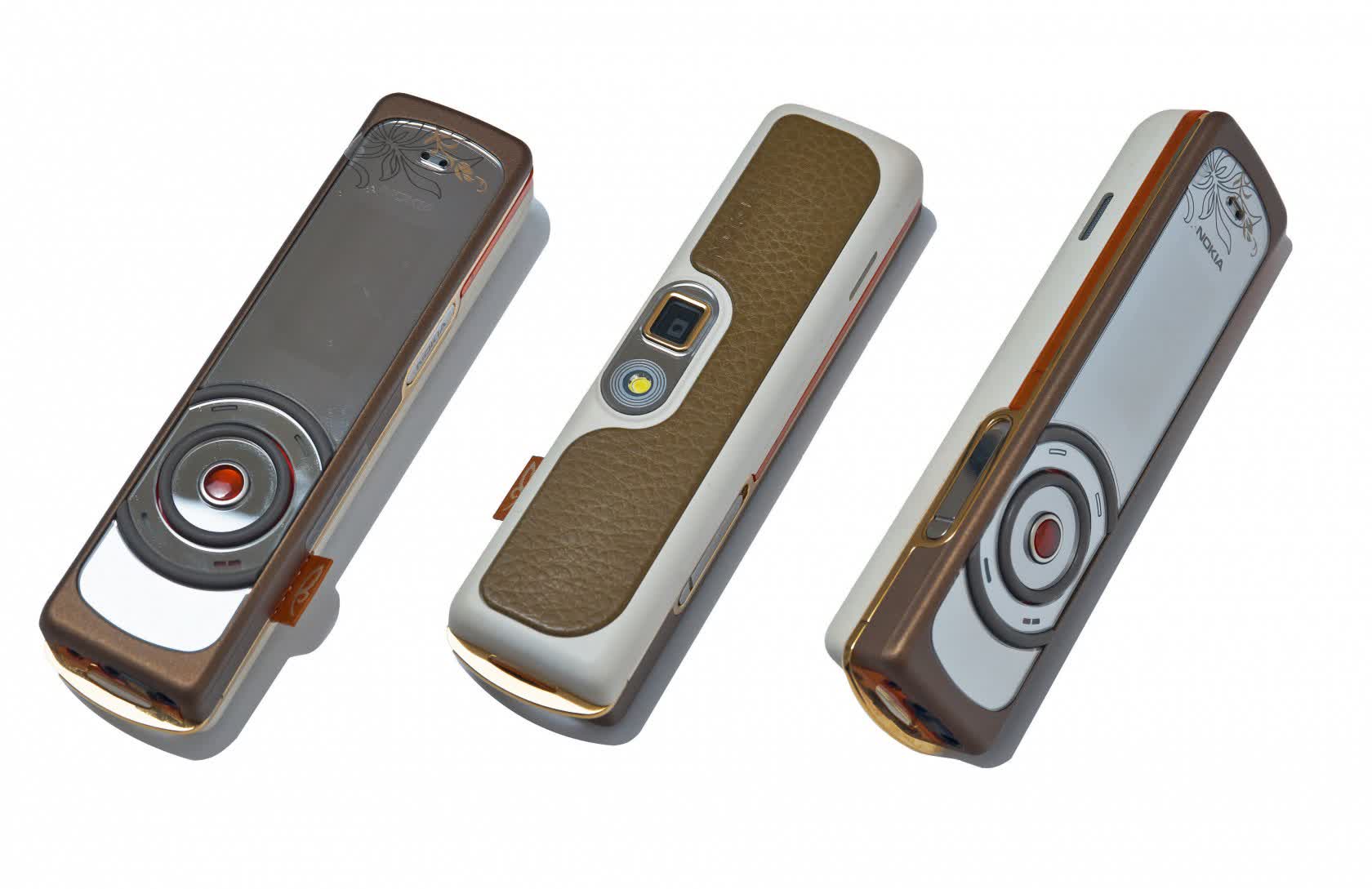
2006 also saw the introduction of more fashion-oriented phones as part of the “L’Amour II” collection that combined metal, leather, and silk to create luxurious-looking designs. The most striking of these, the Nokia 7380 was the spiritual successor of the “lipstick phone.” This new model didn’t have a slider mechanism and traded the physical scroll wheel for a touch version not unlike that of the iPod.
One year later, Nokia released the much-anticipated N95, the company’s first truly well-rounded smartphone. It was an expensive device at $795 ($1,045 in today’s dollars), but it had everything you would need packed in a stylish design with a two-way sliding mechanism. Sliding the front portion up revealed a keypad, while sliding it down revealed a set of media playback buttons that were designed to be easily accessible when you held the device in landscape mode.
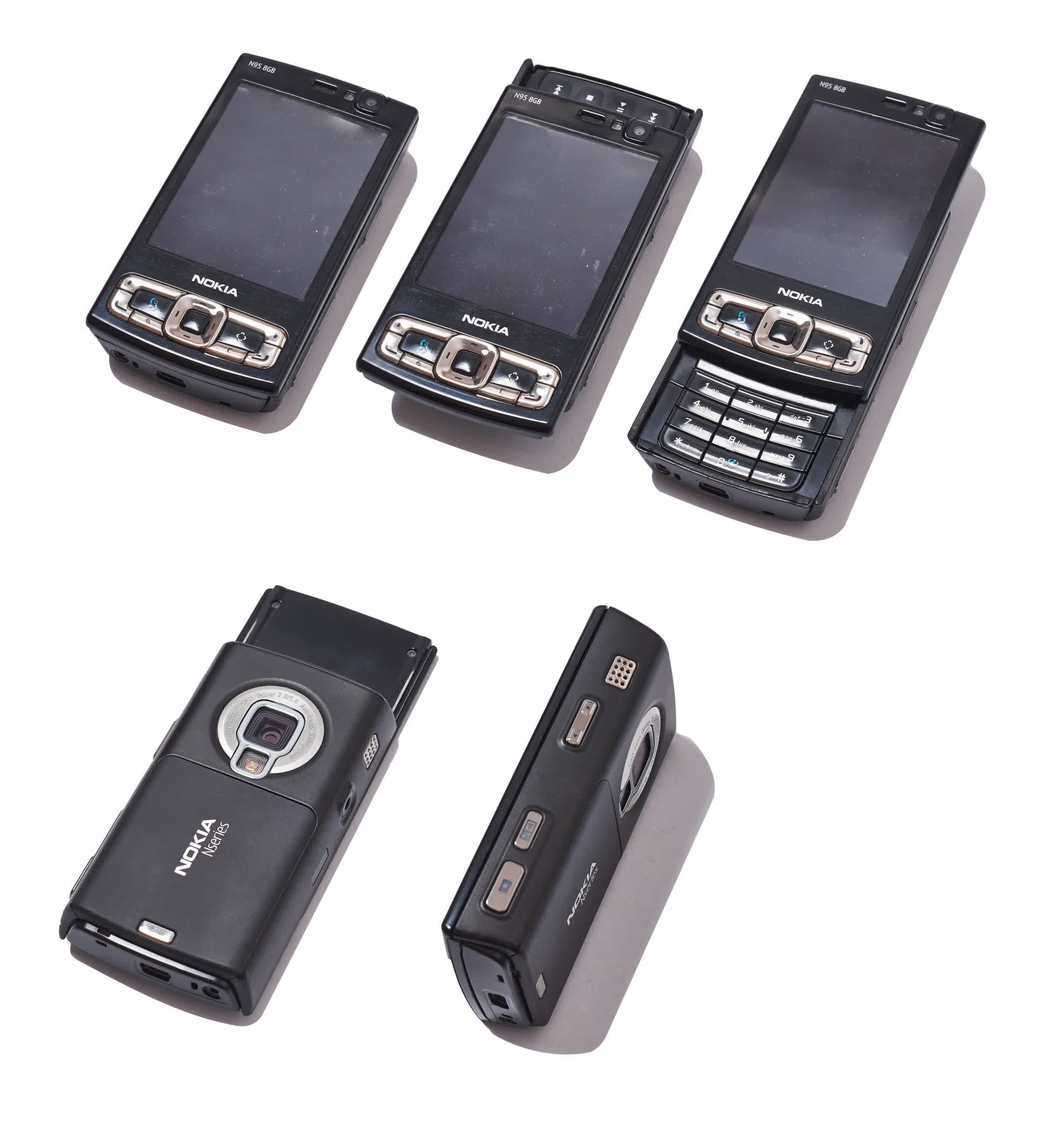
Running Symbian OS with the S60 3rd Edition UI on the large 2.6-inch screen was a pleasant experience thanks to the ARM11-based dual CPU backed by 64 MB of RAM. It had a 5-megapixel rear shooter and a front camera with a relatively modest resolution of 352 by 288 pixels for video calls. The 150 MB of internal storage were upgradeable via an external microSD slot, and the connectivity options ran the full gamut — USB, Bluetooth, Infrared, and Wi-Fi. You could even tether the N95 to a PC to get Internet access through your cellular network.
The integrated GPS along with a new Maps app made navigation easy, with turn-by-turn voice instructions, route planning, and more. A redesigned, carousel-like multimedia menu and good integration with music, radio, and podcasting services didn’t make this a true replacement for the iPod or the Zune, but it came close enough for a phone during that era.
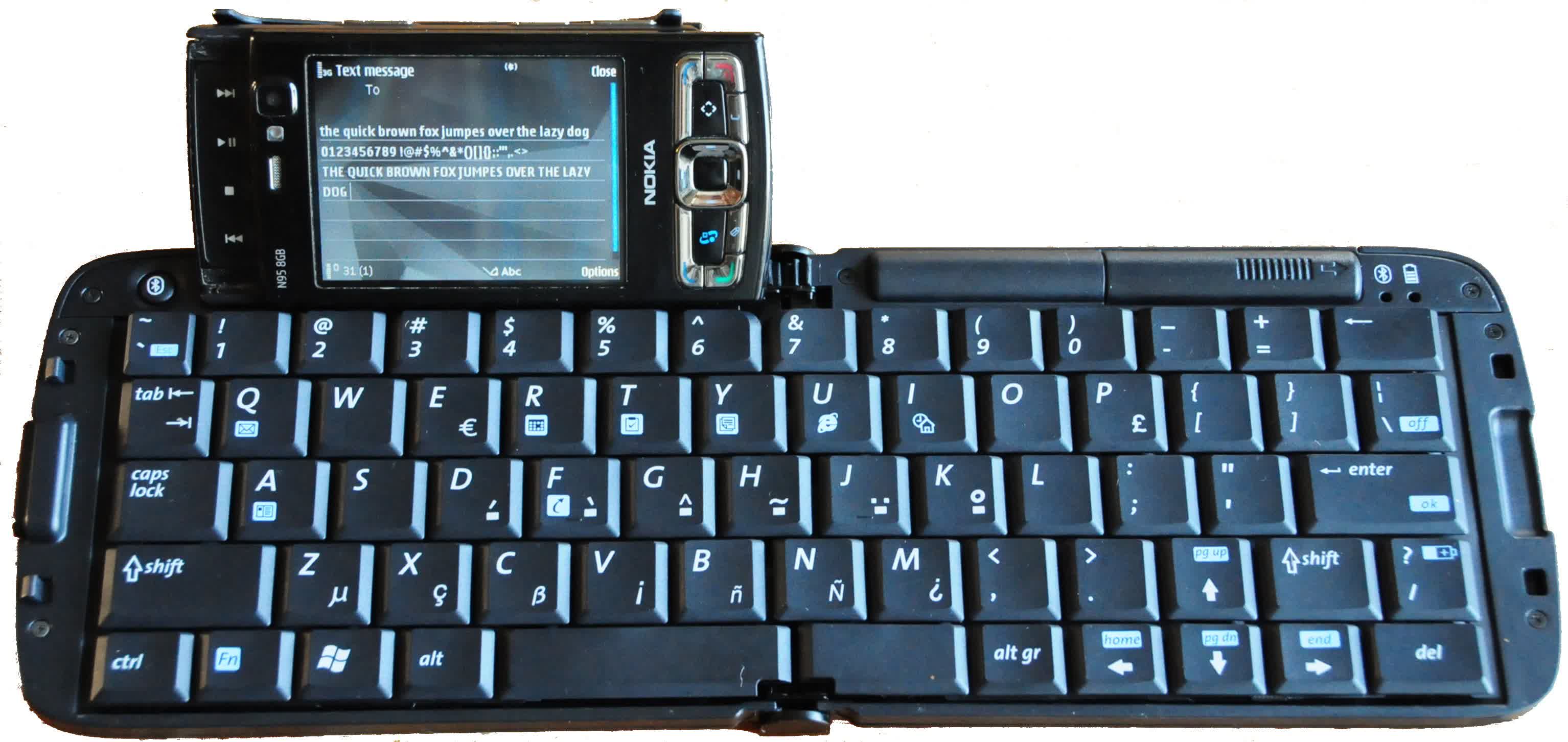
The camera supported autofocus and produced decent quality images and video — VGA resolution at 30 frames per second, which was impressive at the time — thanks to Carl Zeiss’ optics. There was also a two-stage shutter button that made taking pictures fun and easy. And while this wasn’t the first phone with an accelerometer, it was the first to make proper use of it — in addition to being used for stabilize video capture and save photos in the orientation they were taken in, Nokia opened up the sensor to third party apps.
To understand just how much focus Nokia had put into making this device the Swiss Army knife for urban dwellers, you had to look at what came in the box with the N95… one of the included accessories was a 3.5 mm composite video out that allowed you to mirror the screen of your N95 to the one on your TV. The N95 also supported DLNA, and was able to act as a media server over Wi-Fi, letting you share photos, music, and video with other devices in the same network.
Battery life was worse when compared to less feature-packed phones of the era, and depending on usage patterns could last one or two days. Nokia rectified this and other limitations with the second revision of the Nokia N95, which had a 1,200 mAh battery instead of 950 mAh, 8 GB of storage (and no microSD slot), and 128 MB of RAM.
The launch of the N95 suffered from delays and was facing competitive pressure from Sony’s Cybershot and Walkman flagships of that year, not to mention touchscreen phones like the LG KE850 (aka LG Prada) and the first generation Apple iPhone. Still, these did little to challenge the N95 in the short term, and it sold very well along with the rest of the N-series family. According to Nokia, the N95 sold 7 million units by the end of 2007, and 12 million until it was discontinued in 2009.
This model holds a special place in the hearts of Nokia fans. So much so that HMD Global, the remnant of the company’s mobile business unit in the present, sought to reinvent it for the modern age. As with all classic Nokia phone revival projects, this would have seen the N95 spirit being materialized in a modern form factor — a glass and metal sandwich. Sliding the screen to the left would have revealed a speaker array and a dual selfie camera hidden underneath, along with an LED flash.
The back of the N95 revival prototype has a fingerprint sensor and a triple camera array, but the protective ring around the camera module doubles as a kickstand that resembles one of the most popular accessories people buy for their phones today. Needless to say, this would have been a killer device for people who aren’t into foldable phones, but HMD inexplicably scrapped the project early in its development.
A Corporate Catastrophe
While 2007 was a high point for Nokia, with the company shipping almost half of all phones worldwide that year, this was also the beginning of its decline in the mobile space. Underneath the surface, a major reorganization initiated by Jorma Ollila in 2004 to rejuvenate Nokia’s entrepreneurial drive wasn’t having the anticipated effect.
Ollila organized the company into something called a “matrix structure,” which essentially meant the formation of four business groups — Mobile Phones, Networks, Multimedia, and Enterprise Solutions — that would share corporate resources and support functions from vertical product lines. This was supposed to make Nokia more agile, but instead resulted in the departure of key people and fierce competition among executives from the newly-defined business units for resources. The resulting chaos would become apparent much later, with Nokia selling its billionth phone in 2005 and capturing 50 percent global market share by 2007.
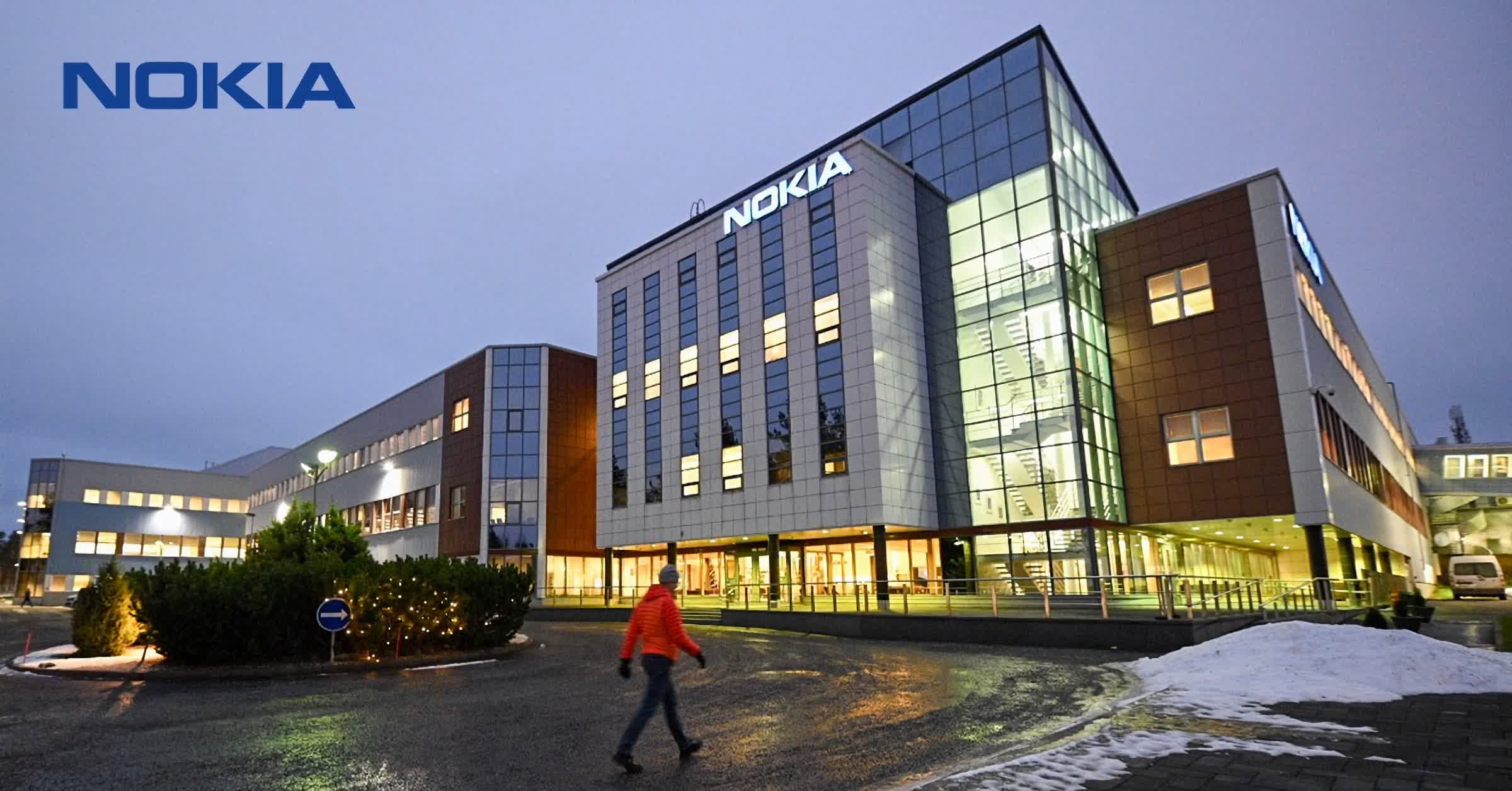
The 2004 reorganization saw Olli-Pekka Kallasvuo move from CFO to heading the new Mobile Phones group, Anssi Vanjoki took charge of the Multimedia unit, and the Enterprise group found its leader in Mary McDowell, who had previously worked at HP and Compaq. The support functions were to be led by Pertti Korhonen, Alla-Pietilä, and Matii Alahuhta.
By the end of the year, Alahuhta decided to leave the company and become CEO of the Kone Corporation. Sari Baldauf quickly followed suit, as she thought it was time to move on after her 22-year tenure at the company. Then news broke that J.T. Bergqvist, the head of Nokia’s networking business, was also leaving.
Ollila tried to pass the CEO role to then-COO Alla-Pietilä, but in 2005 both announced they were stepping down from their positions, with Pietilä leaving the company altogether. Internally, Nokia lost coordination between its business units, which resulted in a slew of products being developed in a chaotic fashion, with conflicting requirements that created software fragmentation that would become harder to manage with each passing year.
Faced with an incredible surge in research and development costs, Ollila imposed a limit on spending of ten percent of the company’s annual revenue. This further exacerbated the software problem by shifting even more focus on the hardware side and cutting down on software features to meet strict release deadlines.
In 2006, Kallasvuo took on the role of CEO for Nokia at one of the crucial points in the company’s history. A year later, he announced the company would go through yet another reorganization that aimed to align the business units with a core vision around more tightly-integrated phones, software, and services. This would see the creation of the “Devices and Services” group led by Kai Öistämö, Niklas Savander, and Anssi Vanjoki, while the networking business unit remained separate and more or less the same as before.
Despite the new corporate structure, Nokia’s business continued in much the same fashion as before, creating the same bottlenecks that would lead to products launching with an incomplete feature set. But the mobile world was about to take a major turn and Nokia was falling behind. The first iPhone introduced at Macworld in 2007 set a new current in motion, despite obvious limitations such as a lack of GPS and 3G connectivity, or its inability to record video. The large multi-touch display and clean design made Nokia’s phones look outdated and far less user-friendly.
Nokia was not alone in dismissing the iPhone when it first came out, as Steve Ballmer who was Microsoft’s CEO at the time, made comments on the price and appeal to business customers that have aged very poorly. Google had been developing Android for two years to fend off Microsoft’s Windows Mobile, but unlike Nokia and Microsoft it recognized the threat and immediately shifted its priorities to target the new entrant in the mobile market.
Kallasvuo didn’t realize the problem until 2008, when he had a conversation with Apple CEO Steve Jobs. The latter executive told him that he didn’t see Nokia as a competitor, since it wasn’t a platform, unlike Microsoft. It was only then that Kallasvuo realized Nokia’s laser focus on hardware was misguided.
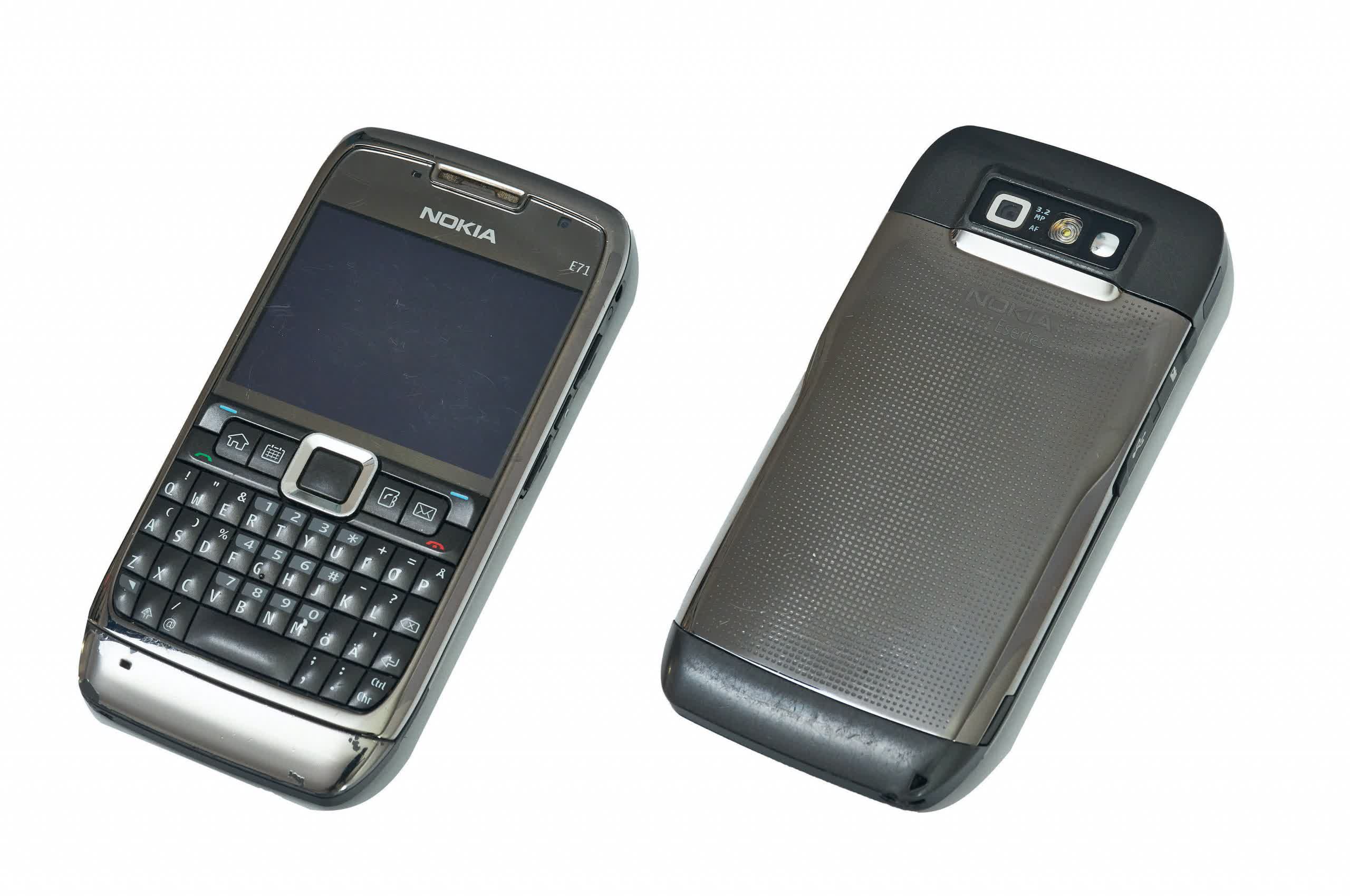
In May 2008, Nokia introduced the E71, a business-oriented phone that sold well because of its email, calendar, and messaging capabilities, slim design, and good battery life. It often drew comparisons with BlackBerry’s phones because of its somewhat similar design, but it was widely considered one of the best phones released that year.
In December, the company announced the Nokia N97, a new attempt at a touchscreen phone using the Symbian OS. Its design alluded to the Communicator series, as this was a chunky device with a large, 3.5-inch 640 by 360 display. Nokia insisted on using a resistive touchscreen that required you to apply pressure with a finger or stylus, offering a comparatively worse experience against devices with a capacitive touchscreen.
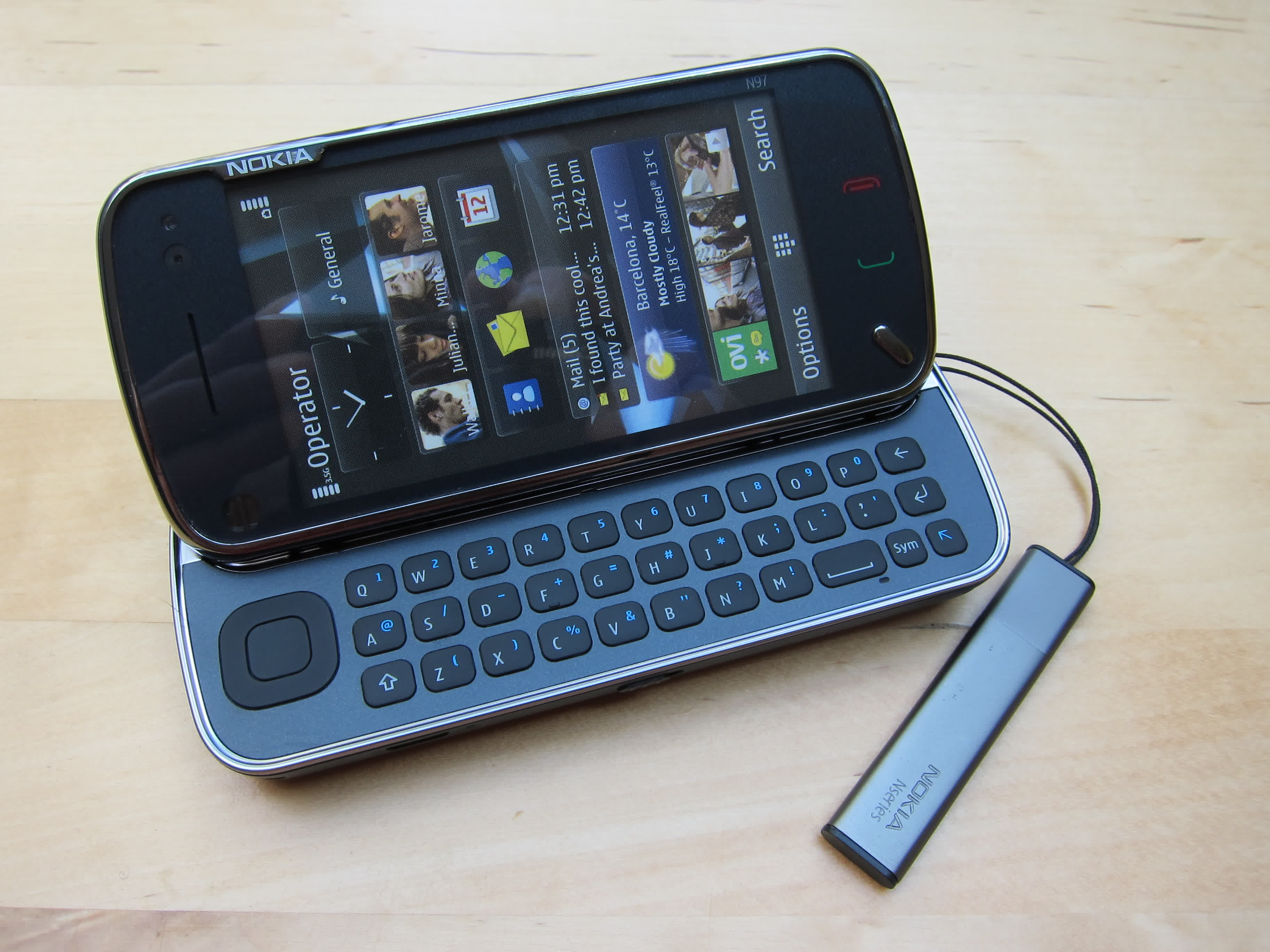
Sliding the screen up when holding the N97 in landscape mode revealed a full QWERTY keyboard which tilted the screen to a 45-degree angle, but the mechanism was a bit uncomfortable to use as it required some force, and typing was hardly a pleasant experience.
The shortcomings didn’t stop there — the S60 5th edition software had an inconsistent UI, and despite being RAM-hungry, Nokia equipped the N97 with 128 MB of RAM, which proved insufficient. Installing apps was only possible to the root partition, which only had 50 MB of free space. This was in spite of the internal memory being a whopping 32 GB, but that was only reserved for storing media files. The rear and front cameras were pretty much unchanged from the N95, and the battery life was decent thanks to the 1,500 mAh, user-replaceable battery.
As noted by reviewers at the time, there was also a lot to like about this device. The screen was readable in most light conditions, the hinge was sturdy, and the 32 GB of flash memory was ample storage for media files. The home screen supported live widgets, and you could customize the layout to your liking. The web browser supported kinetic scrolling, the maps experience was great, and the included application bundle had almost any app you could possibly need. If not, there was always the Ovi Store.
At $700 (over $890 today), the N97 sold over two million units by the end of 2009, when Nokia came up with the N97 mini, a smaller, higher quality device that improved on many of the glaring issues of its larger sibling. During this time, however, the first Android phones, Blackberry devices, and Apple’s iPhone were selling like hotcakes and eroding Nokia’s dominance.
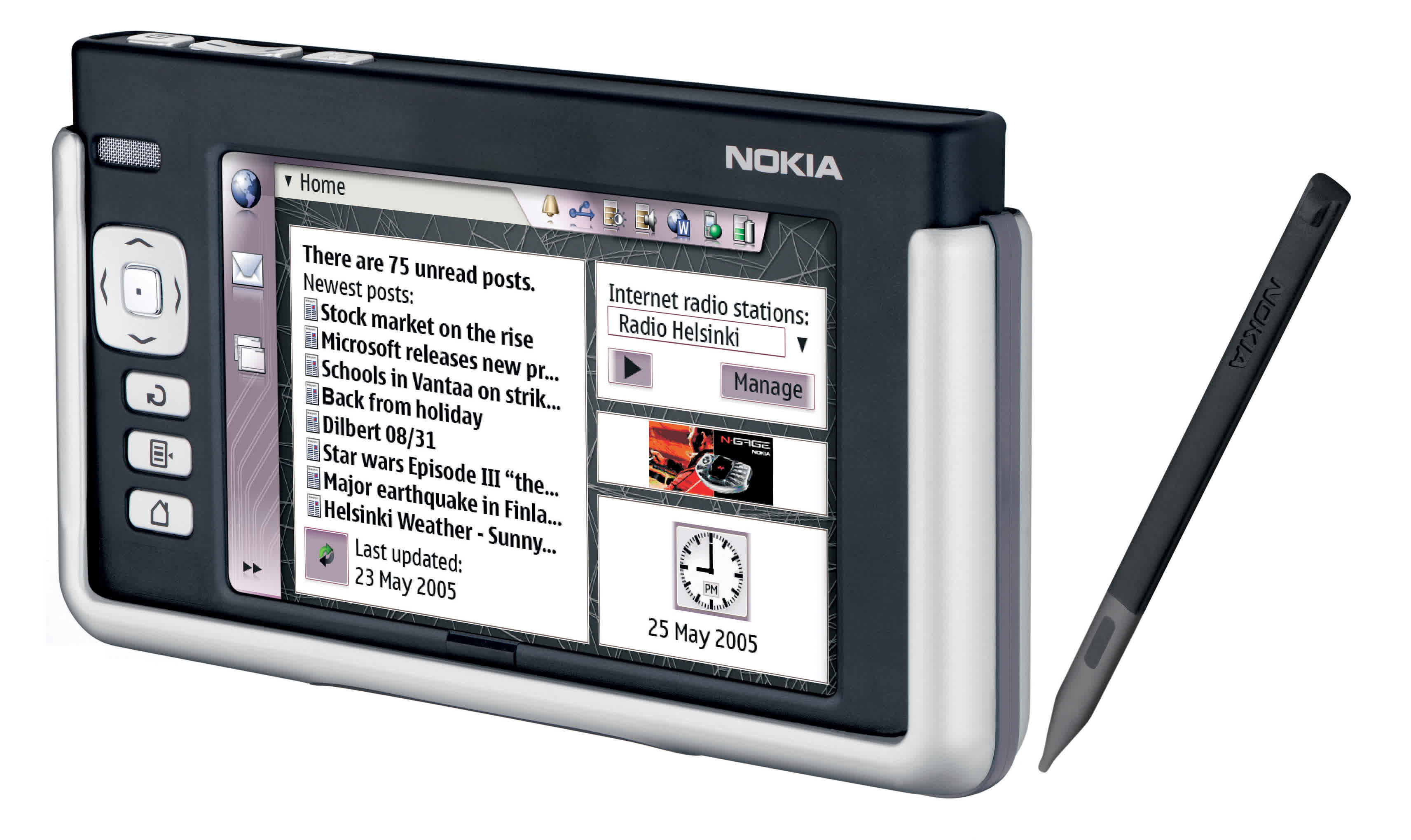
It was clear at this point that Nokia had to leave Symbian behind as it was lagging behind in the smartphone market. In fact, Anssi Vanjoki in 2002 started funding efforts to build an alternative, Linux-based OS codenamed OSSO. The project was led by Ari Jaaksi and was initially intended for a touchscreen smartphone, but the whole endeavor was frowned upon internally, and suffered a great deal of pushback once it became clear that this new operating system was better than Symbian.
It eventually found its way into the Nokia 770 Internet Tablet in 2005, but the product was largely a commercial failure and didn’t receive much attention at the time.
In 2007, OSSO was renamed to Maemo, and internal resistance to it became stronger still. One of the main reasons for that was that some executives were reluctant to support projects initiated by Vanjoki, and another was that migrating from Symbian to Maemo would have thrown many users and developers under the bus in the process.
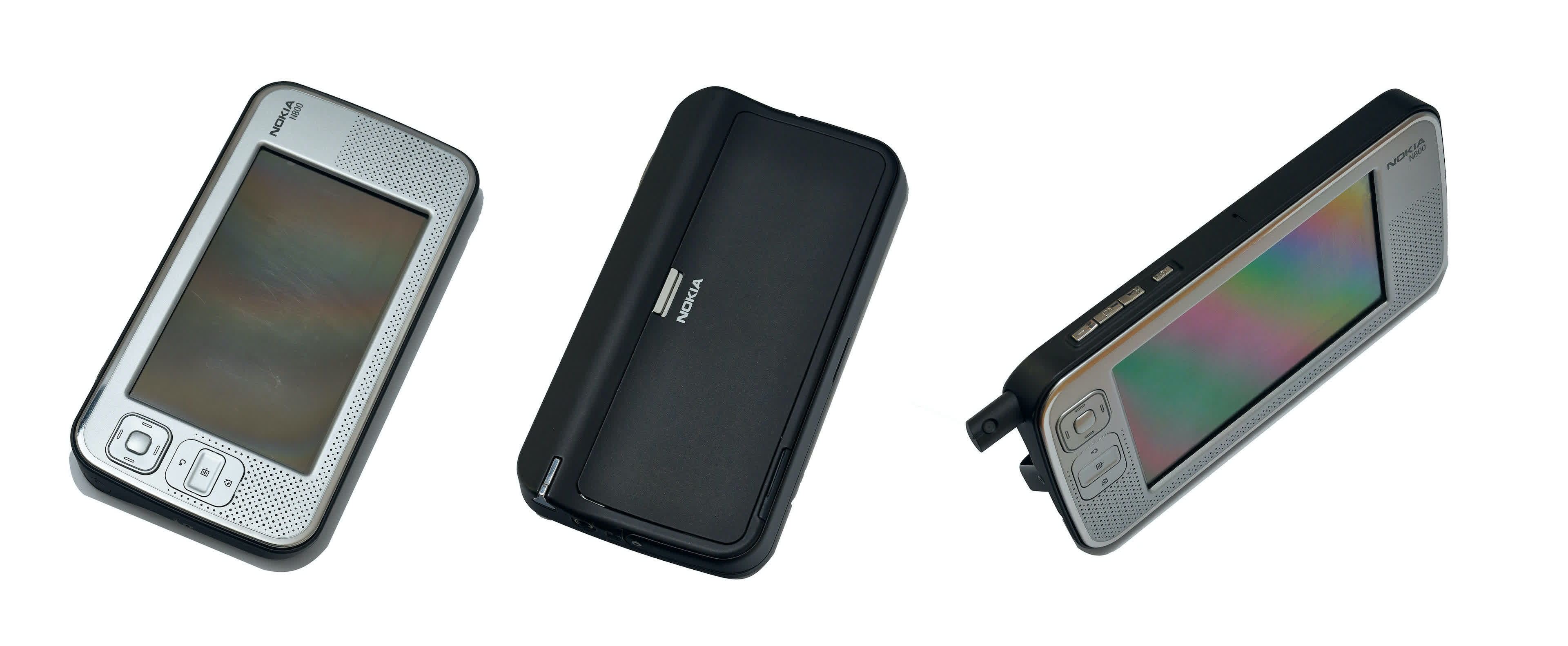
Later that year, Nokia launched the N800 Internet Tablet with hardware very similar to that of N-series phones. It was seen as a mildly interesting device, but in the eyes of reviewers and potential customers it looked like little more than a larger Nokia phone. The 4.1-inch screen was relatively high res at 800 by 480 pixels, and built into the device was a pop-up rotating webcam. The Opera web browser was easy to use, as was the included mail client.
Storage space on the N800 was only 4 GB, but you could easily expand it via not one, but two full-size SD card slots. Battery life was modest, but it could last up to three hours when web browsing. At $400 ($525 in today’s dollars) was therefore a bit too hard to swallow given this couldn’t be used as a phone.
Nokia’s senior management insisted on Symbian development to continue, while trying to find a way to make it coexist with Maemo. The company acquired Trolltech in 2008 for $153 million for its infamous Qt cross-platform developer framework. The idea was to leverage Qt to spur collaboration between the Symbian and Maemo teams, so that they’d create simplified tools to develop apps that worked on both operating systems. This effort failed as the two groups developed incompatible Qt tools.
The reorganization that started in January 2008 would further complicate matters, as the Maemo team was absorbed into Symbian as part of the new Devices and Services group. The relatively small and agile Maemo team ballooned to over 1,000 engineers and effectively lost its ability to grow independently.
In 2010, Intel offered to merge its own Linux-based Moblin OS with Nokia’s Maemo. This would allow the former to compete against Arm and Qualcomm in the mobile space, while Nokia saw it as an opportunity to evolve Maemo into a better OS. The two companies announced the move at the Mobile World Congress in 2010, and the MeeGo operating system was born.
Unfortunately for both, Nokia and Intel, the architecture difference of the two operating systems made the merging process a monumental effort that led to numerous delays at a time when both companies needed to move fast. And while Intel had been busy pushing its own WiMAX wireless broadband tech, it only managed to burn a lot of cash in the process. Carriers who were implementing 4G overwhelmingly preferred LTE to WiMAX in the US, and the latter only saw some adoption in Europe. For the MeeGo collaboration, this translated into even more delays while LTE support was being developed.
This was a time when Blackberry maker RIM was at its peak, Apple’s iPhone was gaining serious traction in the US and Europe, and by the end of 2010 Android smartphone shipments had already surpassed those of Nokia. That said, the Finnish company was still the second largest smartphone vendor in the world, but this was only the beginning of its decline. Furthermore, Nokia had a strong fanbase and owned a strong portfolio of intellectual property, but that year the company realized this was no longer enough.
There was a ton of internal debate over how to pivot from this situation, and of course, one of the proposals was a move to Android. However, mobile operators weren’t keen on seeing iOS and Android dominate the mobile space, and Nokia had already invested heavily in its Symbian and MeeGo platforms.
For Nokia, moving to Android would have been relatively low-risk for a number of reasons. The first was that Nokia had recently ended its legal fight with Qualcomm, and was planning to use the latter’s MSM chipsets in future phones. This would instantly solve the issue of compatibility with the Android OS, and provide access to an arguably better app ecosystem, complete with a larger population of developers. At the same time, the combined might of Nokia and Google could have given both a strong foothold in the mobile space.

However, Nokia’s leadership saw that in going with Android, it would be more difficult to differentiate its devices when compared to other Android offerings. And for a company that had become used to controlling the software running on its phones, ceding some of this control to Google was seen as a ridiculous move. In 2010, Vanjoki famously noted that phone manufacturers adopting Android were like Finnish boys who “pee in their pants” for warmth in the winter. A move to Android would also be an uphill against Samsung, who was already seen as the king of Android phones.
Ultimately, Nokia was facing the prospect of dealing with Google’s “all or nothing approach towards licensing its suite of services,” as explained by CFO Timo Ihamuotila in 2013. For instance, many at Nokia believed that its mapping service wouldn’t be able to coexist with Google Maps on Android. Navteq, a map data business that Nokia purchased in 2007 and would later morph into HERE, was seen as an integral part of Nokia’s future ambitions, not to mention the fact that it was a mapping service provider for Google competitors Yahoo and Microsoft.
For some at Nokia, Microsoft seemed like the most logical choice of partner moving forward. The two companies had already been working together to bring the Office Mobile suite to Symbian, which was heralded as the beginning of a long-term partnership on developing mobile productivity and collaboration tools. When the move was announced in 2009, Stephen Elop — who was head of Microsoft’s business division — said the partnership was rooted in common goals, and that Nokia and Microsoft would remain competitors in the mobile space. Kai Oistamo, who was vice president of Nokia’s Devices group, echoed Elop’s statements and noted that Nokia had no plans to offer Windows Mobile on its handsets.
Adopting Microsoft’s Windows Phone, however, would build on this newly-forged partnership and create a stronger platform against Apple’s iOS, Google’s Android, and RIM’s BlackBerry. At the same time, both Nokia and Microsoft would have to build a strong app ecosystem, and neither excelled in that area.
In the middle of this internal debate about future strategy, Nokia underwent another reshuffling in an effort to further simplify its corporate structure. Specifically, the Devices and Services group would now be split into Mobile Phones (led by Mary McDowell), Mobile Solutions (led by Anssi Vanjoki), and Markets (led by Niklas Savander). But without a coherent strategy in place, the expensive restructuring was frowned upon by shareholders, who thought this was a sign that Kallasvuo was no longer fit for the role of CEO.
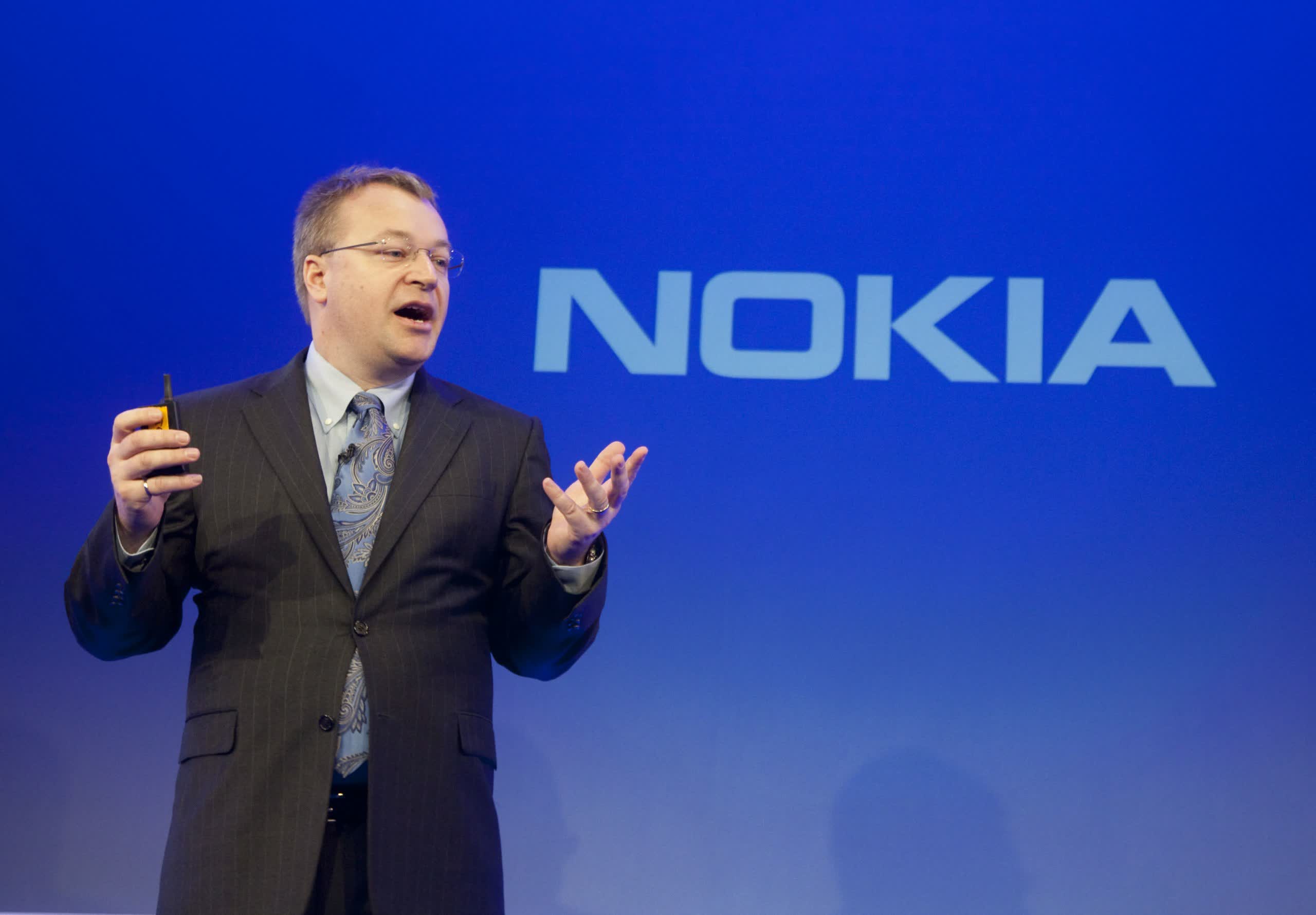
It wasn’t long before Nokia appointed Stephen Elop as the new president and CEO. By this time, the company’s shares had already dropped over 50 percent compared to 2007, the year Apple’s first iPhone was introduced. Nokia still held a strong position in the smartphone market, with a 38 percent share of the global sales, but market researchers at Gartner predicted at the time that Symbian would soon be overtaken by Android while Windows Phone would slowly wither away over time.
Another option would have been Anssi Vanjoki, who had been cooking up a rescue strategy for Nokia around high-end smartphones running MeeGo. However, Vanjoki was a passionate, outspoken leader who often clashed with the Nokia board, so Elop was ultimately seen as the better fit.
The Burning Platform
There were some doubters that thought Elop would simply turn Nokia into Microsoft’s biggest licensee as soon as he became CEO. After some deliberation, the Nokia board reached the conclusion that Elop was the right person to oversee the company’s pivot from device manufacturer to Internet platform company. Vanjoki resigned the day the decision was made.
Elop’s first recommendation after assessing Nokia’s strengths and weaknesses was to accelerate the development of MeeGo. However, he had his doubts about whether this was the best way forward, so he also became preoccupied with the idea of expanding on the partnership between Nokia and Microsoft. It wasn’t long before rumors popped up online about Nokia potentially embracing Microsoft’s Windows Phone 7. During a shareholder meeting in January 2011, Elop alluded to the possibility, but didn’t explicitly point it out.
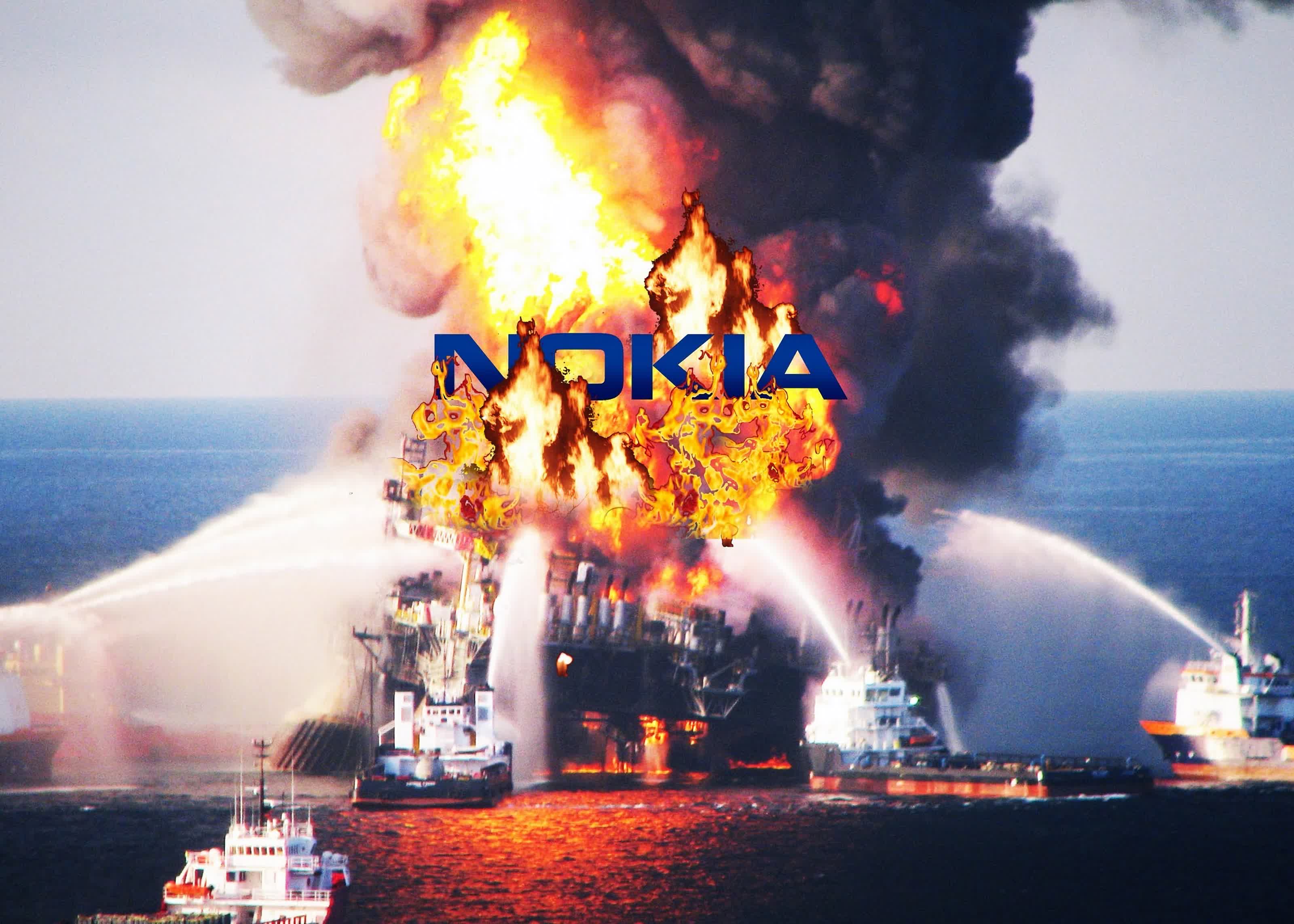
It was only weeks later that he decided to send an intense memo to Nokians that would remain in history as the “burning platform” memo. In it, Elop candidly admitted he didn’t believe MeeGo was the way forward. But more importantly, he expressed his assessment of the company’s state using a story of a man who was standing on a burning oil platform in the North Sea. This man was faced with two options — “he could stand on the platform, and inevitably be consumed by the burning flames. Or, he could plunge 30 meters in to the freezing waters.”
This was Elop’s way of saying that Nokia was between a rock and a hard place, with Apple owning an increasingly large share of the high-end smartphone market, while Google’s Android was eating everything in the mid-range and low-end categories. He also saw MeeGo development as slow and Symbian as a growing barrier to making progress in being more competitive against these emerging platforms.
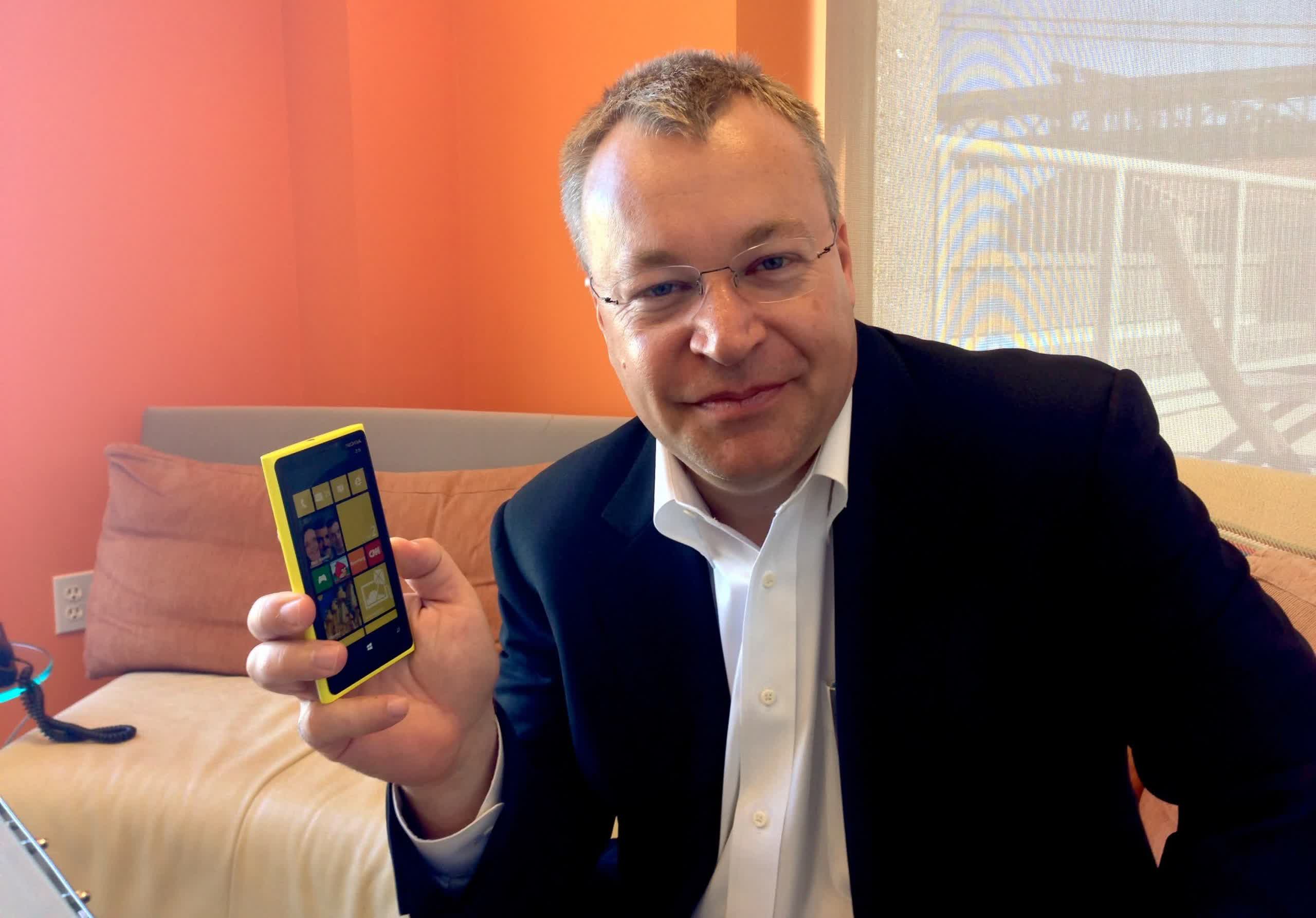
On February 11, 2011, the Elopian Nokia announced it was going to forge a broad strategic partnership with Microsoft to create a new global mobile ecosystem. In other words, Nokia would adopt Windows Phone and replace Symbian as the OS of choice for the company’s future smartphones, and work closely with Microsoft to further develop this new platform. However, the latter assumed the right to license the OS to third parties.
Symbian would be relegated to lower-end devices and was to become a “franchise platform” with the expectation that it would sell at least 150 million units in the coming years. Support for Symbian phones would soon be outsourced to Accenture, along with the transferring of 2,300 engineers to the latter firm. As for MeeGo, it would be open-sourced and was to become a tool for experimentation for next-generation devices and platforms.
News of the radical pivot sent Nokia shares tumbling and left many Nokians in shock, especially as the company would also cut thousands of jobs and close some research and development centers in the process. At Mobile World Congress that year, Elop had to defend against speculation that he was a “Trojan horse,” noting the plan had been discussed with the entire management team and approved by Nokia’s board of directors.
The move also saw the departure of a number of key executives such as Alberto Torres, who had been leading MeeGo development, as well as CTO Rich Green, who had been one of MeeGo’s staunch supporters. Elop proceeded to replace them with other Nokians, which earned him some love internally. He also created a Location and Commerce group which combined Navteq with Nokia’s other location and social services operations.
With this out of the way, Elop began mapping roles across Microsoft and Nokia to ensure every part of Windows Phone development would go smoothly, from product architecture to features and everything in between. This was seen by Nokians as a breath of fresh air, and at first they were very impressed with this new partnership with Microsofties.
This initial impression, however, would soon be eclipsed by a gradual realization that Microsoft’s Windows Phone operating system was very much inferior to Symbian in a number of ways, while Microsoft — much like Nokia — had very little leverage in negotiating with mobile operators in the US. On top of that, many consumers were used to the strong app ecosystems on Android and iOS, and Windows Phone had difficulties in attracting enough developers to fill the “app gap.” This would create a vicious cycle of consumers not choosing Windows Phone because of a lack of apps and many developers choosing not to make apps for the operating system as the user base was relatively small.
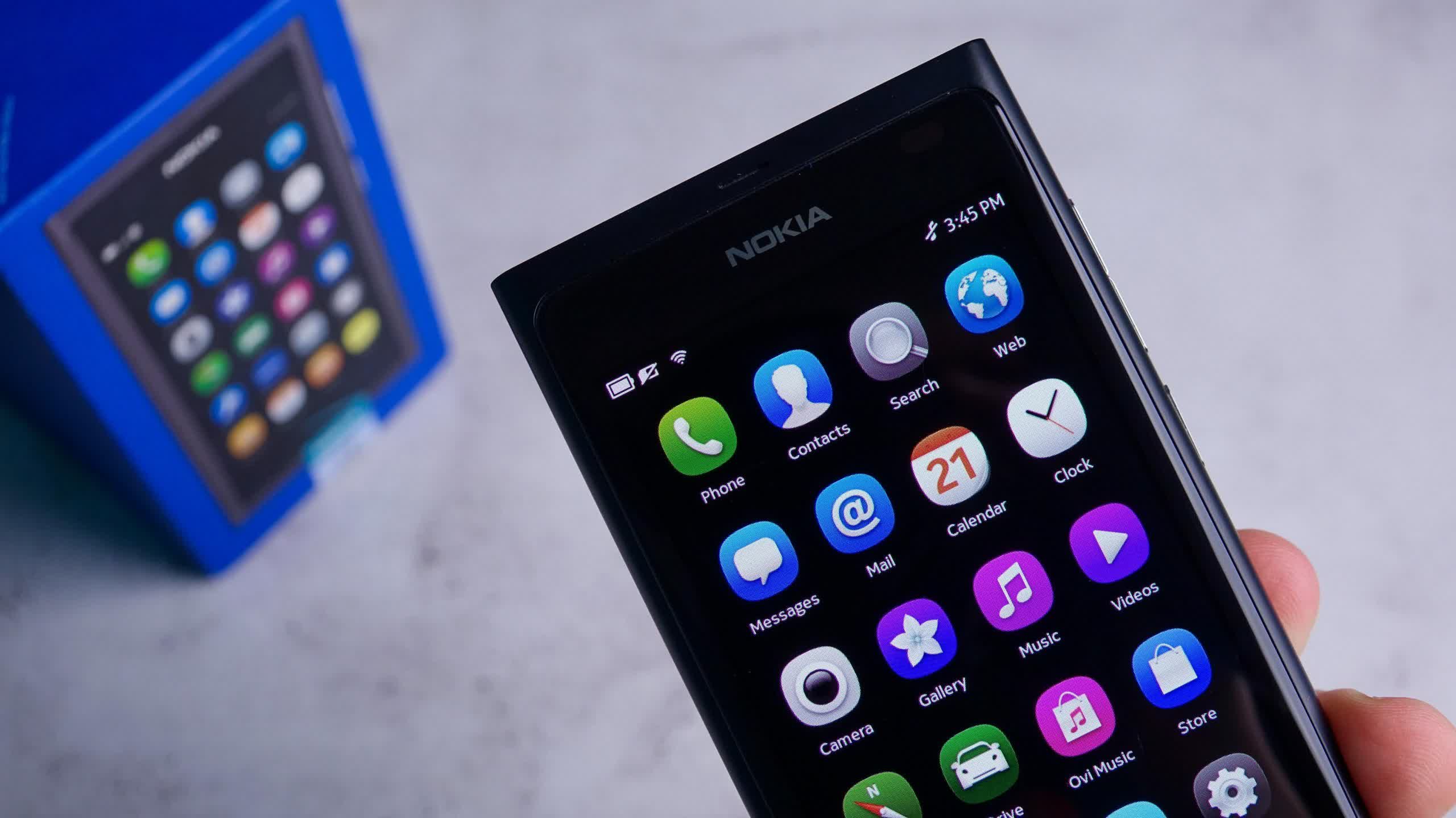
Nokia was preparing the release of its first and last MeeGo phone, the N9. This was a fascinating device that received a lot of praise for its unique industrial design, beautiful screen, sturdy construction, excellent battery life, great camera quality, and friendly user interface. It was, however, a decidedly niche product that spelled the end of the Nokia of old, carefully funneled into a limited release, so it wouldn’t steal the crowd away from Nokia’s soon-to-be-launched Windows Phone handsets.
The phone’s internals were encased in a polycarbonate shell that was available in three color options and had the not-so-obvious quality of making scratches and scuffs less obvious. Despite being quite chunky and over 12 mm at its thickest, they way the body was curved and the way the screen looked as if it melted into the body of the phone made this a very good looking device. In retrospect, its exterior design has aged gracefully when compared to many phones of that era.
The 3.9-inch AMOLED display had a density of 251 pixels per inch, and the deep blacks often made it blend with the bezels because of the dark background used throughout the user interface. The 8-megapixel camera, while admittedly a step down form the 12-megapixel shooter on its predecessor, the N8, still produced decent quality images and video worthy of a Nokia flagship phone.
The MeeGo Harmattan OS ran decently well on an aging OMAP3630 processor with 1 GB of RAM, and the battery could last up to two days. The Swipe UI made one-handed use a pleasant experience, while the double tap to wake function would bring up the lockscreen, no buttons needed. Wireless connectivity included the latest Wi-Fi and Bluetooth standards, not to mention NFC. And JoikuSpot had been ported over from Symbian, allowing users to share a 3G connection via a cable or Wi-Fi.
Despite receiving widespread acclaim from reviewers at the time, Nokia sold the N9 in very limited quantities in a small number of regions, and didn’t release the device in some of the largest markets in the world, including North America and much of Europe.
The Elopian Nokia was to march forward and push Microsoft’s Windows Phone, but as the company soon found out, this would be a fruitless exercise. In 2011, Nokia’s revenue took a nine percent hit compared to 2010, while operating profit dropped 75 percent to just €884 million ($1.23 billion).
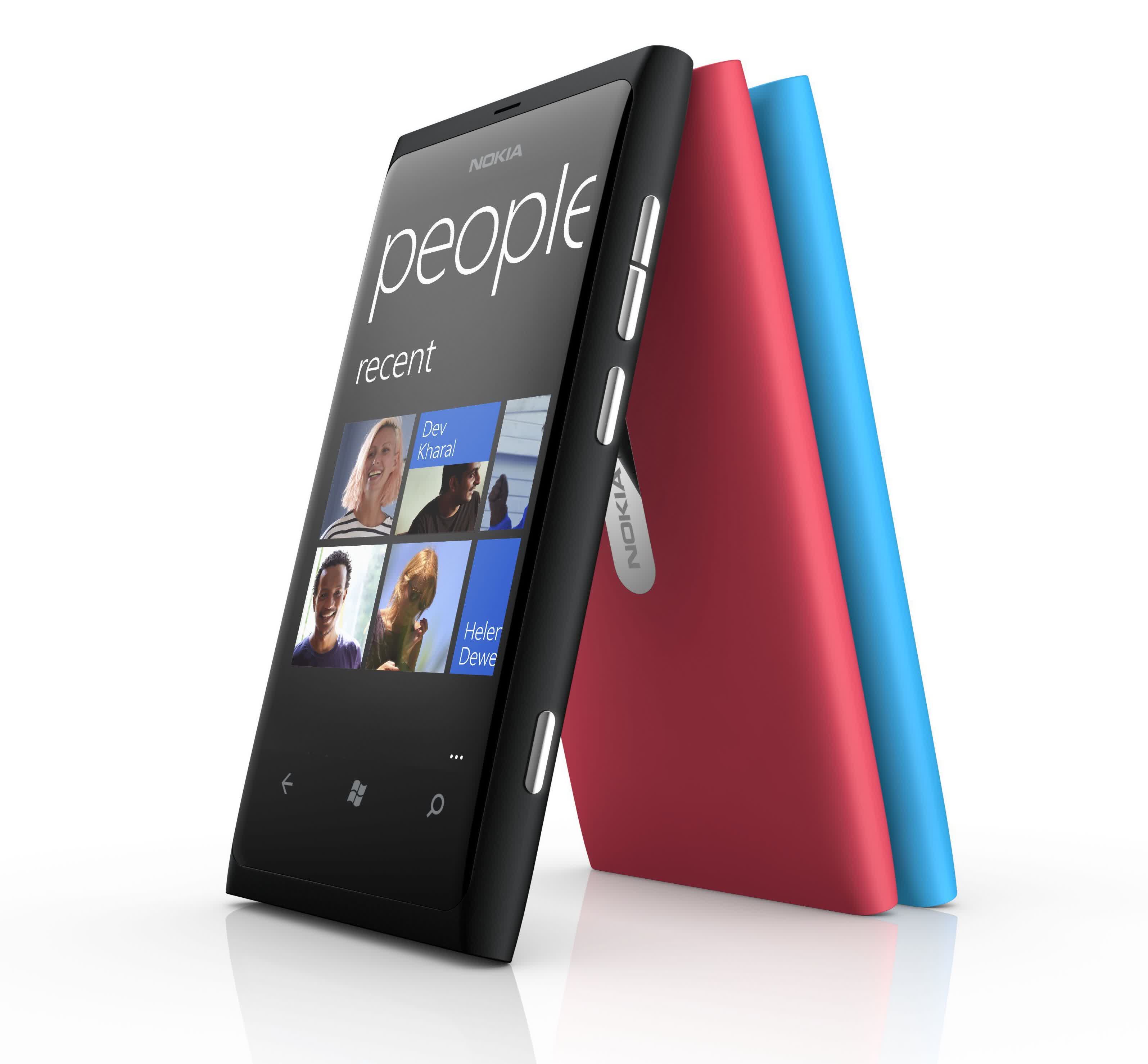
It turned out that Nokia had put a great deal of faith in brand loyalty, but most people were reluctant to make the jump from Symbian to Windows Phone, no matter how good the hardware was. The Lumia 800 that Nokia launched that year looked quite similar to the Nokia N9 in terms of design, but the internals were different and the operating system even more so.
On the outside, the most notable differences included a set of capacitive Windows Phone navigation keys on the front, a dedicated shutter button, and a smaller screen. The internals included a Qualcomm Snapdragon S2 backed by 512 MB of RAM and 16 GB of storage. This wasn’t something to write home about, but the ClearBlack display and the camera were just as impressive as they were on the N9. Battery life varied a lot with use, but the Lumia 800 could easily make it through a day of use.
The Windows Phone experience was eventually infused with some Nokia improvements here and there, namely swipe gestures and double-tap-to-wake, but they were not there at launch. However, its limitations were still there, the most glaring being the lack of apps beyond Nokia’s suite. Some loved the Live Tiles on the home screen, which were a unique take on how widgets should look like, while others loathed this design.
The same was true for the entire Metro Design Language that was applied throughout the Windows Phone user interface — a lot of Microsoft Zune fans loved it, plenty were drawn to its minimalist, flat interface, but there were also people who found it lifeless in comparison to iOS and Android.
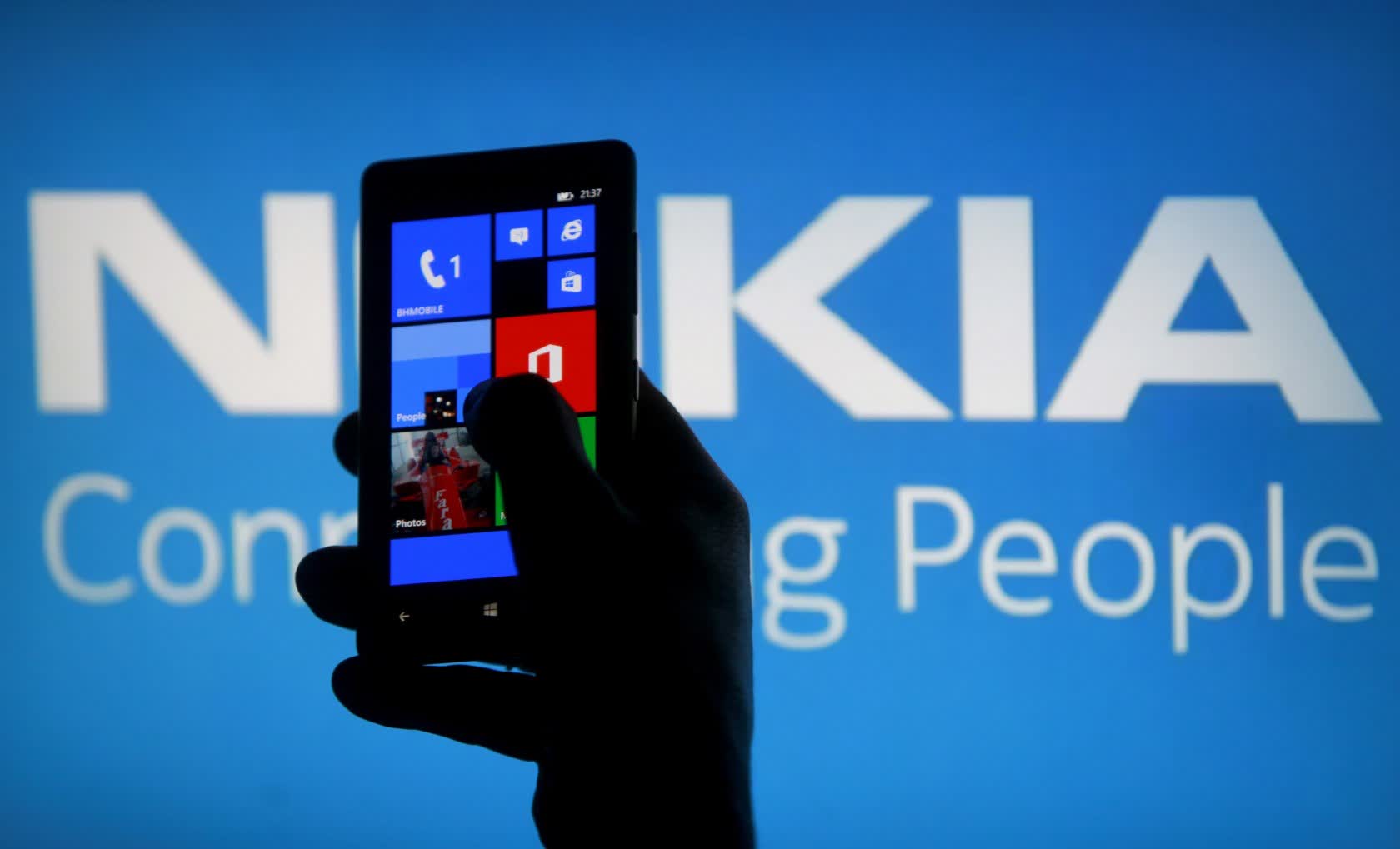
Otherwise, the Lumia 800 ran Windows Phone 7.5 quite well despite having relatively modest internals, and most people that bought this device did find the UI easy to use, while the concept of a People Hub as a one-stop shop for all your social media interactions was intriguing. Nokia disabled Internet Sharing on this device, meaning you couldn’t turn this device into a mobile hotspot, but that was a relatively minor annoyance.
The bigger issue would only become apparent once Microsoft inched closer to releasing Windows Phone 8 — the Lumia 800, and pretty much all other Windows Phone 7 devices wouldn’t have an upgrade path to the new OS. That includes the Lumia 900, a device that Nokia released only months before the new operating system was launched. The only upgrade these devices would see over time was Windows Phone 7.8 — a largely cosmetic improvement that made your phone look like it ran Windows Phone 8 and little else.
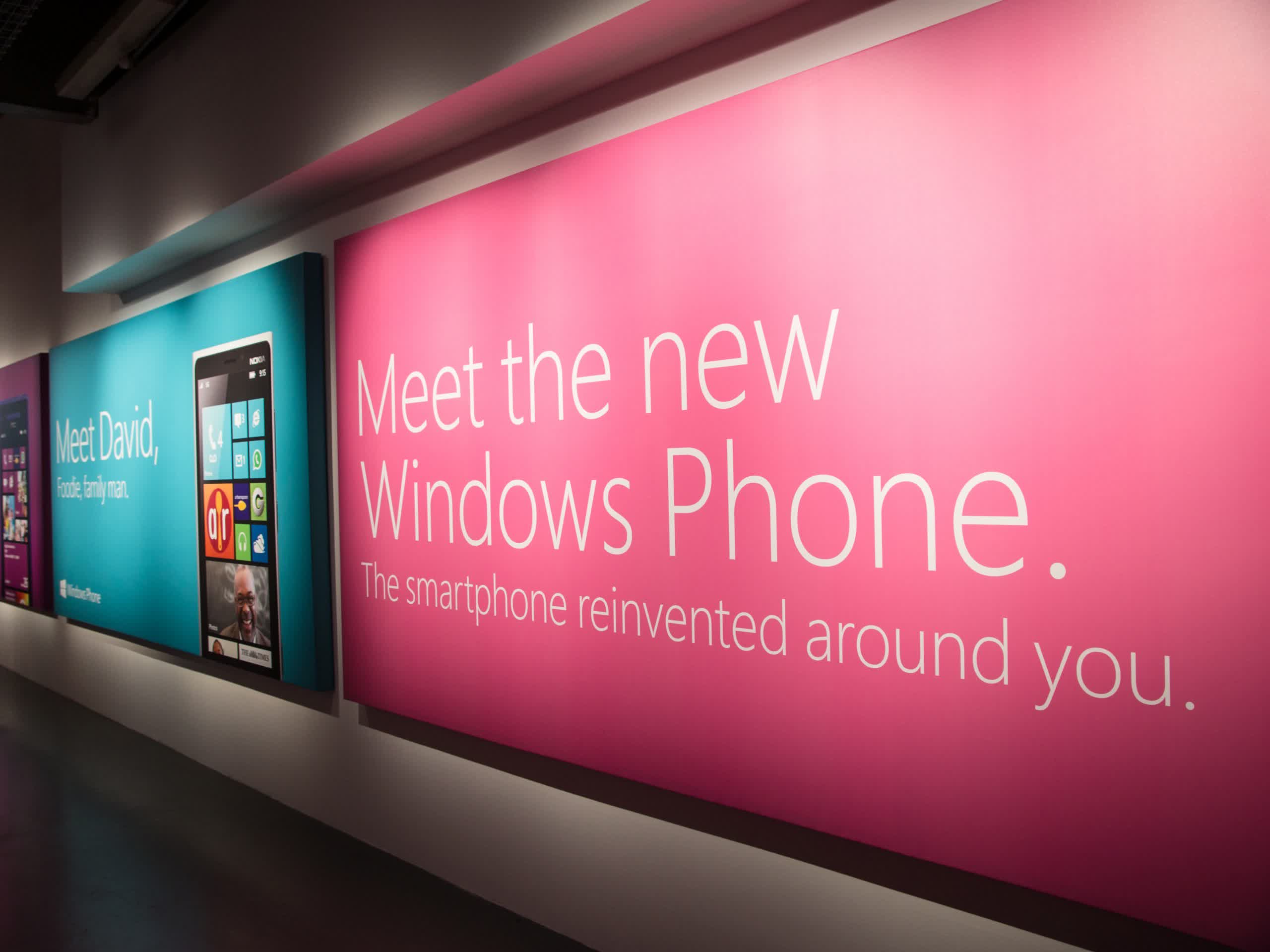
In 2012, Microsoft revealed a much-improved Windows Phone 8 that was based around the same NT kernel as Windows 8, an OS designed for desktop PCs, notebooks, and tablets. It had numerous improvements over Windows Phone 7, the first of which was the ability to resize Live Tiles on the Start screen. The lock screen allowed you to customize up to five apps to show the number of notifications and one for detailed notifications.
Then there was support for better hardware such as multi-core Qualcomm chipsets, higher resolution displays, as well as support for NFC and microSD cards. Microsoft owned Skype and had begun integrating it into Windows Phone, and the introduction of Internet Explorer 10 brought a lot of improvements to the web browsing experience, from better HTML5 support to a faster rendering engine.
Another useful addition was Kid’s Corner, which made it easy to share your device with your children without worrying about them messing with settings or your personal data. There was also an Xbox Smart Glass app that allowed you to control your Xbox console. When using the Camera app, you could now install so-called Lenses that were essentially plugins that added certain functionality, like adding filters or scanning QR codes. Still, the Windows Store was a barren land with few quality apps, and what would later become known as the “app gap” was only going to get worse.
By the end of 2011, it was estimated that Nokia had sold over 1 million Lumia devices, which seemed almost like an optimistic number if you ignore that in 2007 one of every two smartphones sold worldwide were Nokia smartphones. The first quarter of 2012 saw Nokia’s financial situation worsen, and it wasn’t long before Colin Giles, the company’s head of sales, stepped down from his role. He was soon followed by chairman Jorma Ollila, who had already announced he would resign in 2011.
In February 2012, Nokia announced it would cut 4,000 jobs at its phone manufacturing plants, and that was followed in June by a second round of 10,000 jobs, bringing the total at over 40,000 job cuts since Elop took on his role as Nokia CEO.
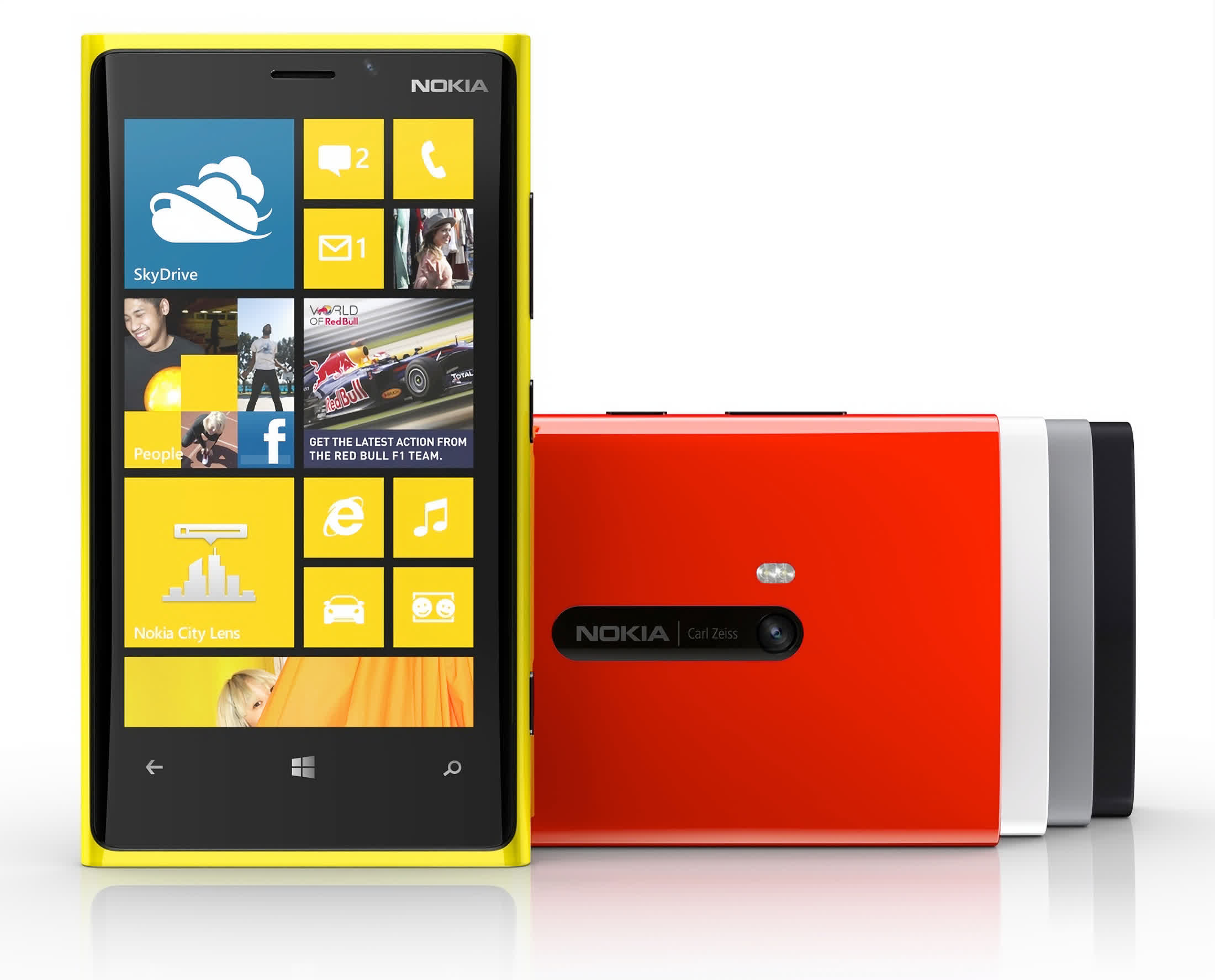
In September 2012, Nokia introduced the Lumia 920 and Lumia 820 handsets, which were the company’s new flagship and mid-range offerings for Windows Phone 8. These smartphones came in 3G and 4G variants, and offered some improvements such as better screens, PureView cameras, faster processors, and Qi wireless charging. Reviewers found them great in terms of hardware and praised the Nokia software enhancements, but again stressed the deficient app ecosystem as a reason to steer clear for most people.
By the end of 2012, Nokia’s board had become acutely aware of the worsening financial situation. After six straight quarters of losses, the company wrapped up the 2012 fiscal year with revenues of €15.7 billion ($19.9 billion) and operating losses of €1,1 billion ($1.4 billion).
Elop’s strategy had failed, despite there being renewed hope that the positive reception of the Lumia 920 would be conducive to higher sales volumes.
Still, Nokia powered through 2013 with the introduction of the Lumia 928, which was exclusive to Verizon in the US. And while this wasn’t a bad phone overall, the Lumia 925 that was announced just a few days later stole much of the limelight, mostly thanks to its smaller and slimmer body made entirely out of aluminum. Neither of these handsets would become a best seller for Nokia — that title would ultimately be earned by the Lumia 520, a decidedly cheap — starting at $200 and going as low as $50 with certain discount deals — low-end handset that sold at least 12 million units before its discontinuation.
It was also in 2013 that Nokia revealed that Symbian had reached the end of the line, after sales volume dipped below half that of Lumia handsets. This meant that just a year earlier, everyone had witnessed the last of the Symbian phones with the Nokia 808 PureView, a phone with one of the largest camera sensors ever integrated into a phone, with a 1/2″ format and a resolution of 41 megapixels.
Coupled with support for 3x optical zoom and the ability to adapt for both 4:3 and 16:9 aspect ratios, this earned the 808 PureView a reputation as one of the best camera phones in history. The dual microphone setup also helped users capture better audio than most other phones at the time, especially when recording video at a concert.
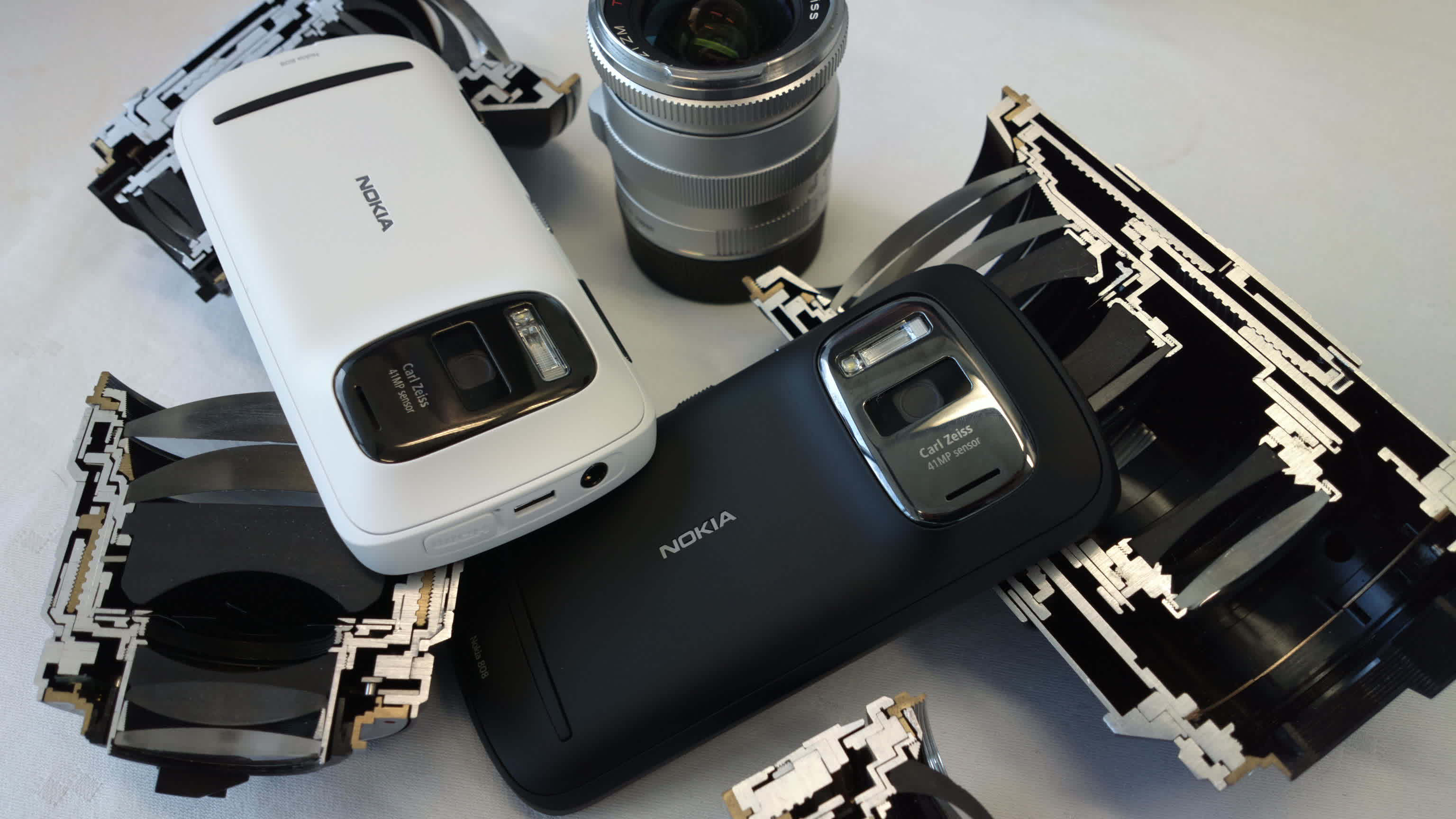
Nokia had been working for years to perfect the camera technology in this device, which was making use of pixel binning to produce higher quality stills well before this imaging technique would became cool. However, the large size of the camera module posed some design challenges, so Nokia had to shave off some of the thickness of the phone to make it more appealing in an era where phone manufacturers were striving for the thinnest and lightest designs. This resulted in a large camera bump on the back of the 808 PureView — a polarizing design choice at the time but quite common today.
It wasn’t long before Nokia came up with a new incarnation of the 808 PureView that ran Windows Phone — in July 2013, the Lumia 1020 arrived with a more refined design, similar camera specs, and much better software experience. By this time, the app situation was also somewhat improved, with most major apps covered and plenty of third-party clients for the ones that were missing. Still, many outside of Nokia as well as inside the company did wonder if Android could have been a better fit for Lumia phones.
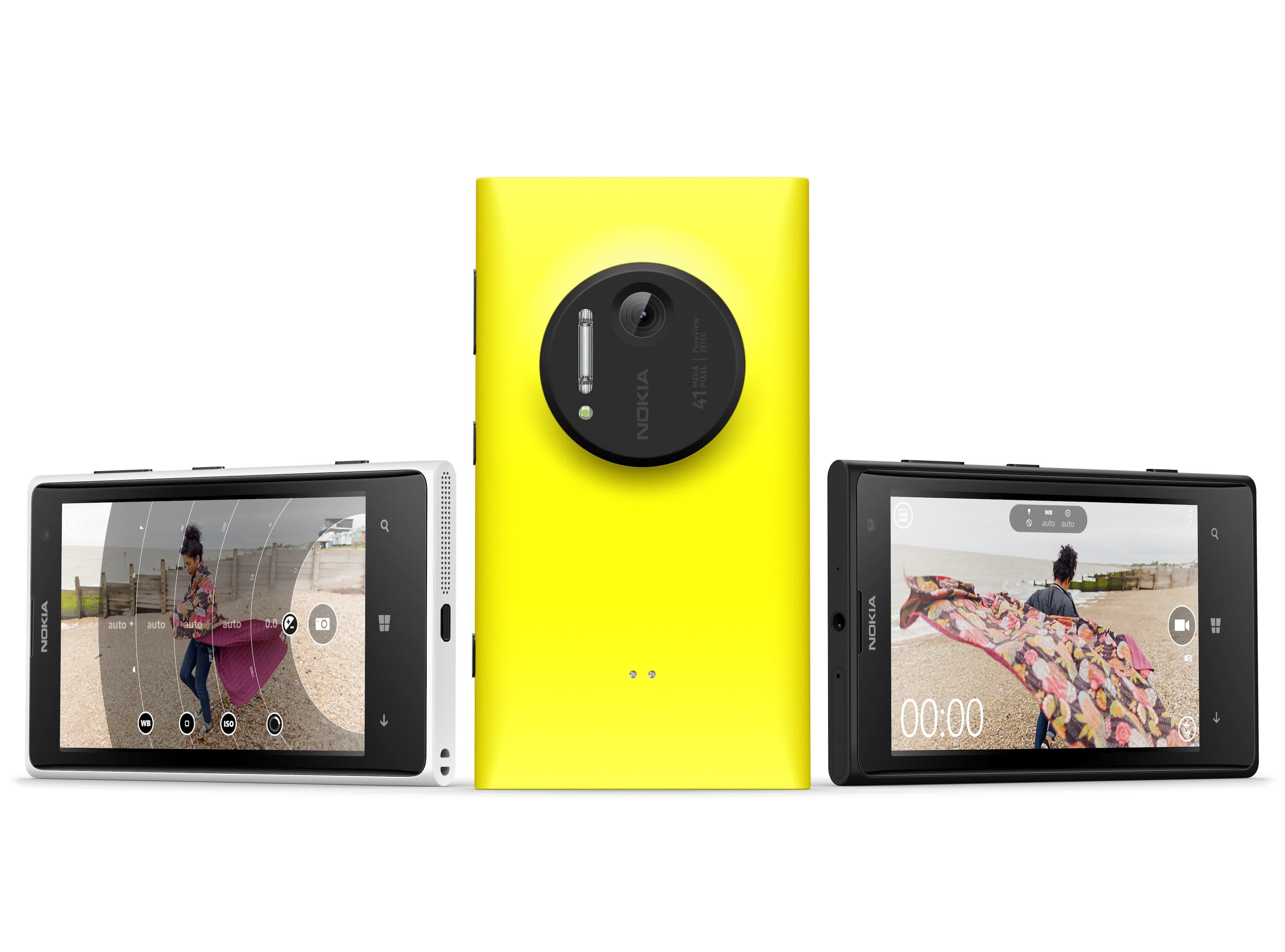
The Lumia 1020 was infused with a lot of DNA from both Nokia and Microsoft, from its chunky and colorful unibody polycarbonate construction to its powerful rear camera with Carl Zeiss optics, to its ClearBlack display that paired perfectly with the black background of the type- and motion-heavy user interface of Windows Phone. It was the ultimate embodiment of our camera-obsessed culture, and most — if not all —people who bought one will attest to you that it got them excited about taking photos of everything.
At the heart of this device was a dual-core Snapdragon S4 Plus SoC backed by 2 GB of RAM, which was more than enough to run Windows Phone smoothly. That is, until you wanted to take pictures in dual-capture mode, which saved a 41-megapixel image along with an oversampled 5-megapixel one. The Lumia Camera app had a lot of manual options you could fiddle with just like on a real camera, and the experience was completed by the presence of a dedicated two-stage shutter button.
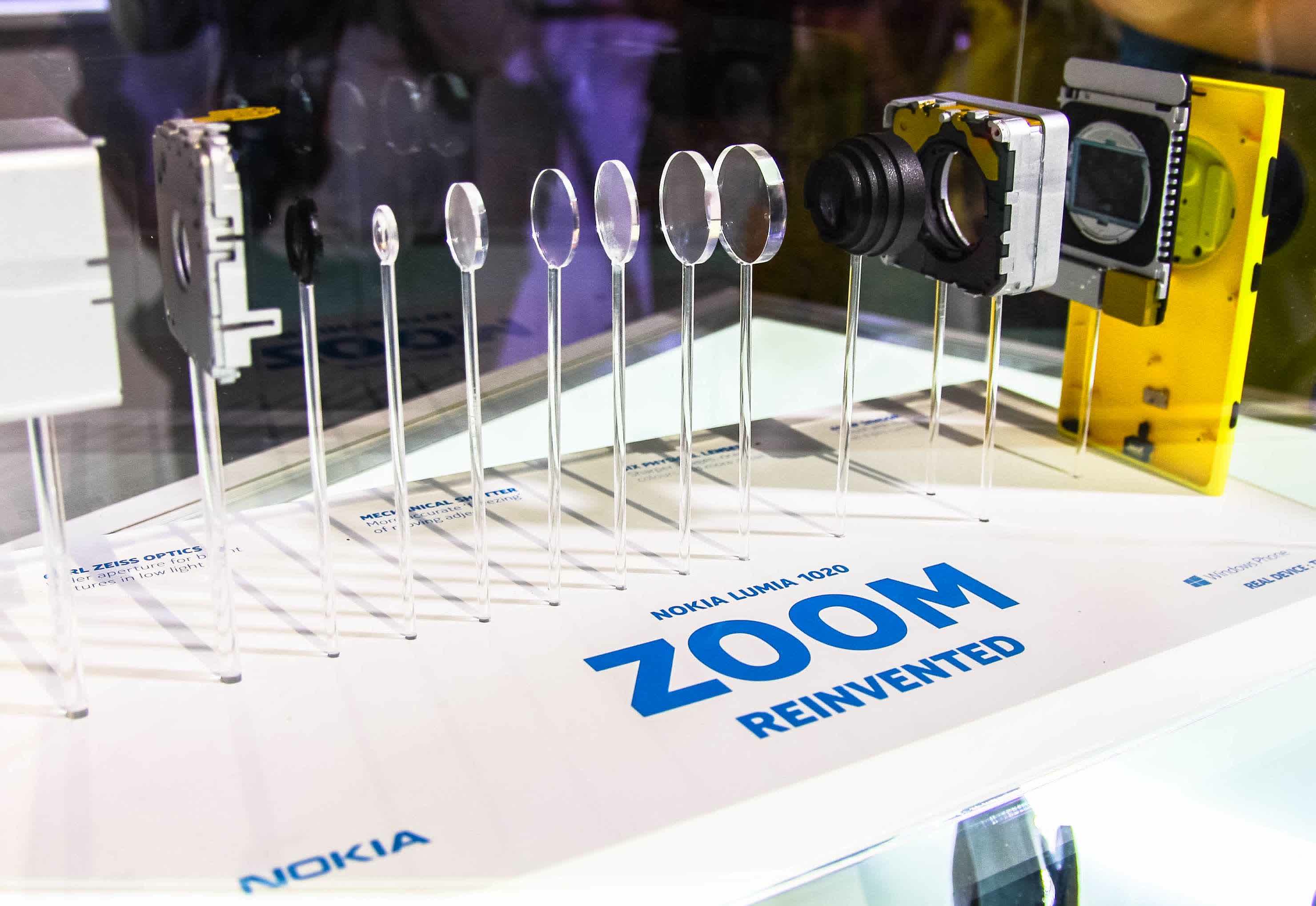
Fast forward to today for a minute and you still see people drawing comparisons between the camera kings of today and the old but gold Lumia 1020. For instance, GSMArena notes that Nokia’s aging camera phone is able to hold up surprisingly well to the Xiaomi Mi 11 Ultra, which uses one of the best mobile camera sensors out there — the Sony IMX586. Steve Litchfield of AllAboutWindowsPhone did a more detailed comparison of the Lumia 1020 and Nokia 808 PureView cameras with that of Google’s Pixel 5 and Apple’s iPhone 12 Pro Max, showing just how far ahead of its time Nokia’s PureView really was.
Going back to 2013, quarterly sales of Nokia Lumia devices were still below the company’s expectations, but they had at least managed to surpass sales of BlackBerry handsets. Later that year, Nokia introduced the Lumia 1320 and the Lumia 1520, two phones designed to appeal to people who wanted the largest screen possible. Besides a small bump in terms of hardware specs, these devices continued to live and die by their user’s ability to live without many major apps.
Nokia did announce that an official Instagram app would come to the Windows Store, but what was delivered was a beta app that didn’t change much over the course of the next three years.
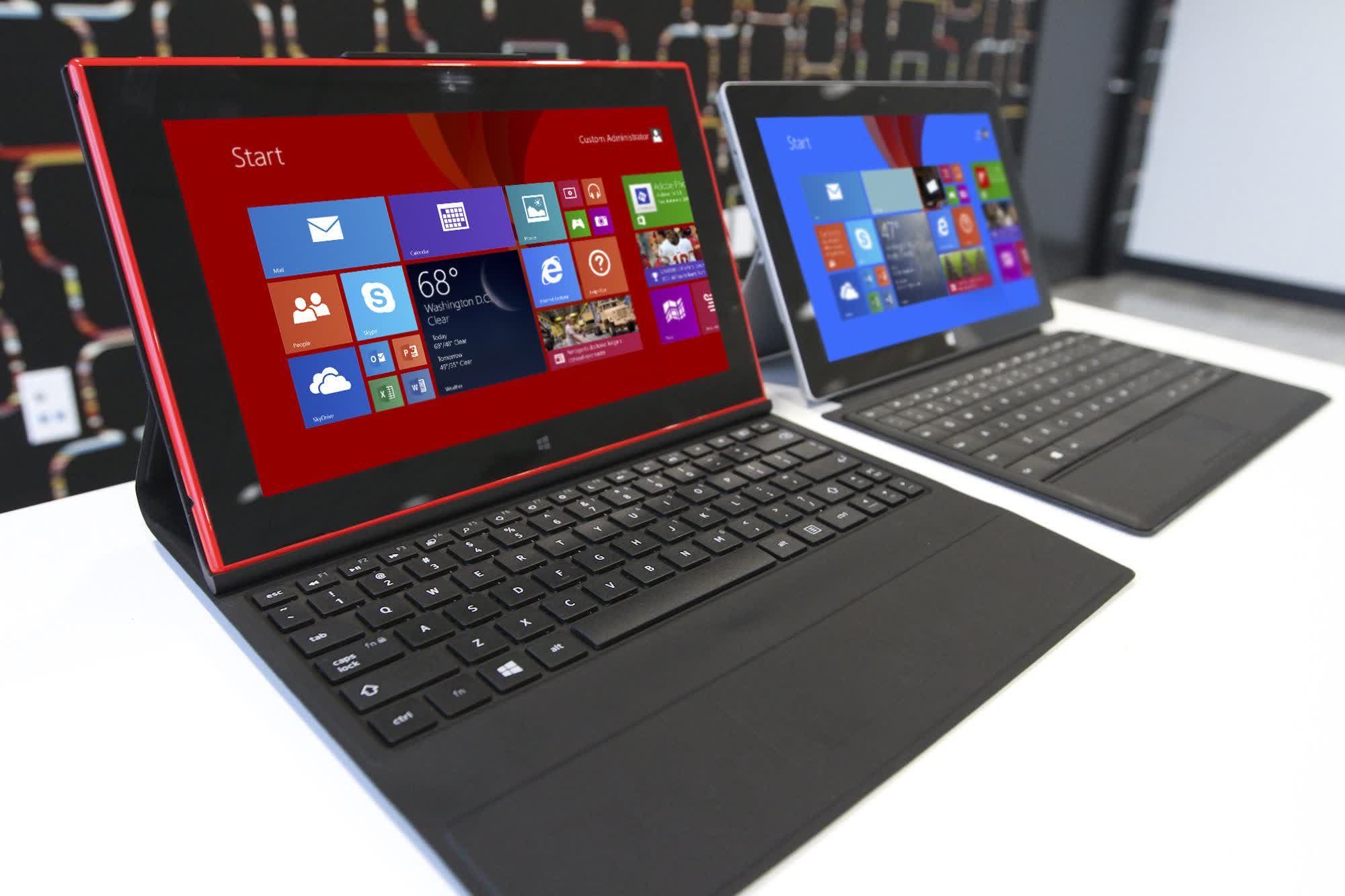
That same year, Nokia took a leap of faith and followed Microsoft’s Windows RT ambitions with the introduction of the Lumia 2520 tablet. This would prove fruitless as the Windows RT experiment came to an abrupt end a mere two years later. Reviewers found Nokia’s tablet was better overall than Microsoft’s own Surface 2, but in the end it didn’t matter as Windows RT never gained enough traction with consumers or developers.
Nokia continued to bleed money despite slow and steady growth of Lumia sales. The company revealed during an investor call that it had sold 8.8 million Lumia handsets worldwide in Q3 2013, three times more than the same quarter of the previous year. This was the ninth straight quarter where the company recorded losses, so the Nokia board scrambled to find a solution to the issue and in the process became open to the idea of selling the Devices and Services business unit to Microsoft.
After a lot of back and forth, the two companies arrived at a $7.2 billion deal that would see Microsoft absorb Nokia’s Devices and Services unit and license its extensive portfolio of patents. The Redmond giant saw this as an excellent opportunity to become a devices and services company, but for Nokia this was a necessary move to save the rest of its businesses — the HERE mapping service, the Nokia Siemens Networks unit, and the the Advanced Technologies licensing arm.
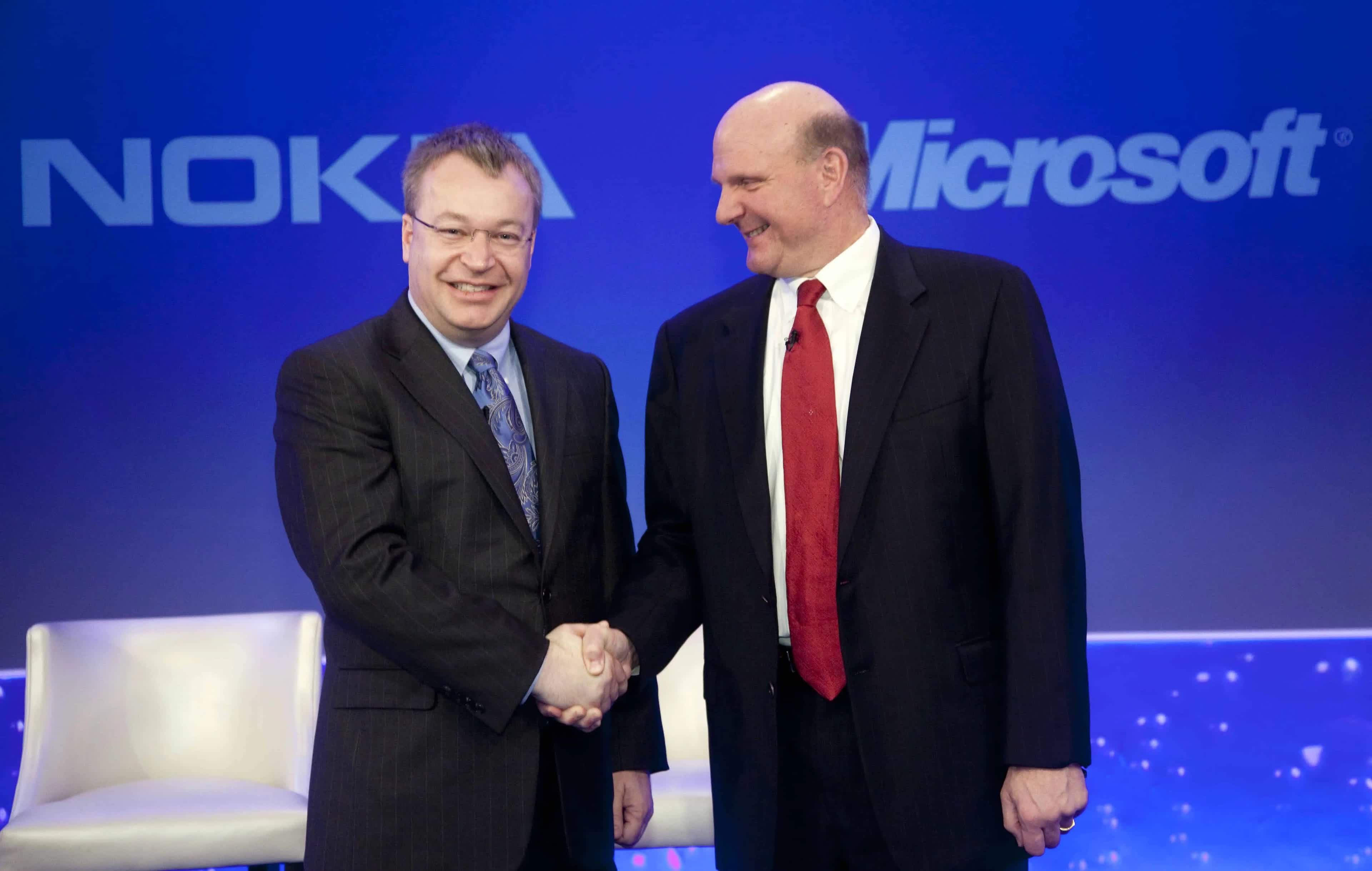
As part of the agreement, CEO Stephen Elop would step down and report to interim CEO Risto Siilasmaa. When the deal closed in 2014, he took on the role of vice president of Microsoft’s newly-formed Devices group.
The deal ultimately saw some Nokians part ways, including Marko Ahtisaari, who oversaw the development of the Lumia hardware design language, and Lumia photography lead Ari Partinen, who went to Apple.
After the acquisition was completed in 2014, Microsoft licensed the “Nokia” name for phones such as the Lumia 930, Lumia 830, Lumia 730, and Lumia 630, not to mention the monumental failure that was known as the Nokia X family. However, it wasn’t long before Microsoft replaced it with Microsoft Lumia to simplify the branding of its handsets. The Redmond company applied the same treatment to almost all of Nokia’s suite of Windows Phone apps.
Still Connecting People
Nokia had appointed Rajeev Suri as its new CEO, who quickly identified the company’s strengths and proceeded to strengthen its position on the telecom infrastructure market. Throughout 2014, Nokia acquired Australian radio filter maker Mesaplexx, US-based network deployment company SAC Wireless, and a part of Panasonic’s wireless networking business.
The company also tried its luck with some short-lived consumer projects that involved licensing its intellectual property to third-party manufacturers such as Foxconn. A notable example is the Nokia N1 — an Intel Atom-powered Android tablet that looked a lot like Apple’s iPad Mini. It was only sold in China and Europe in relatively limited quantities, but Nokia still considered it a success.
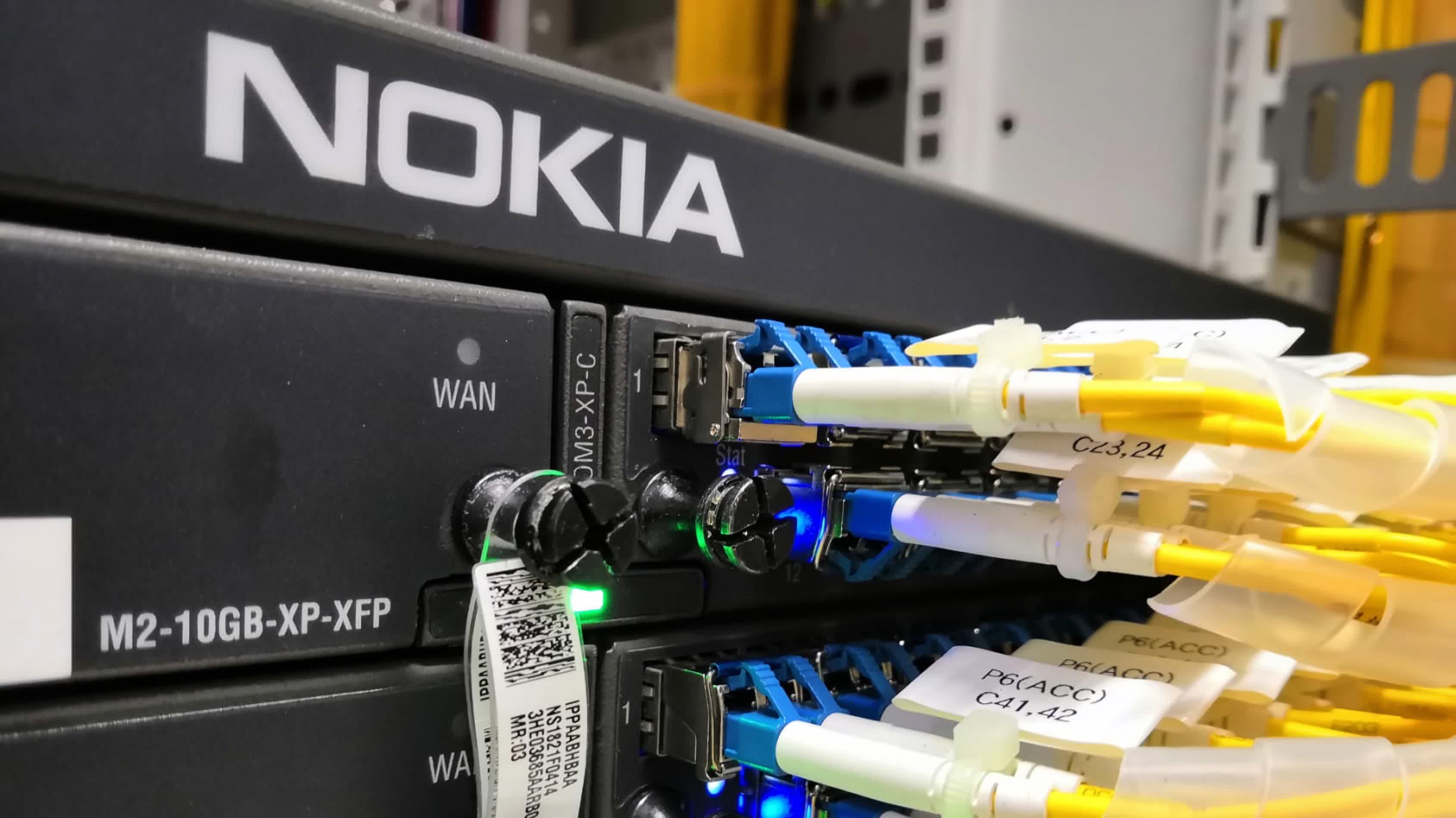
Make no mistake — central to the company’s financial recovery was by and large its networking business, which was profitable and generated most of Nokia’s revenue. This was seen as an opportunity to turn things around, so in 2015 the company took the risk of acquiring Alcatel-Lucent for a whopping $16.6 billion. The move effectively turned Nokia into the world’s second-largest telecom equipment provider after Ericsson, and strengthened its R&D capabilities at a time when the 5G revolution was knocking at the door.
Despite many fans yearning for Nokia to return to the consumer market in one way or another, the company quashed any rumors that suggested it had plans to do so. At the same time, it was eager to get rid of its HERE mapping unit, which was operating at a loss. Uber expressed interest in acquiring it for $3 billion, but Nokia ended up selling it to a consortium formed by BMW, Daimler, and Audi for a similar amount.
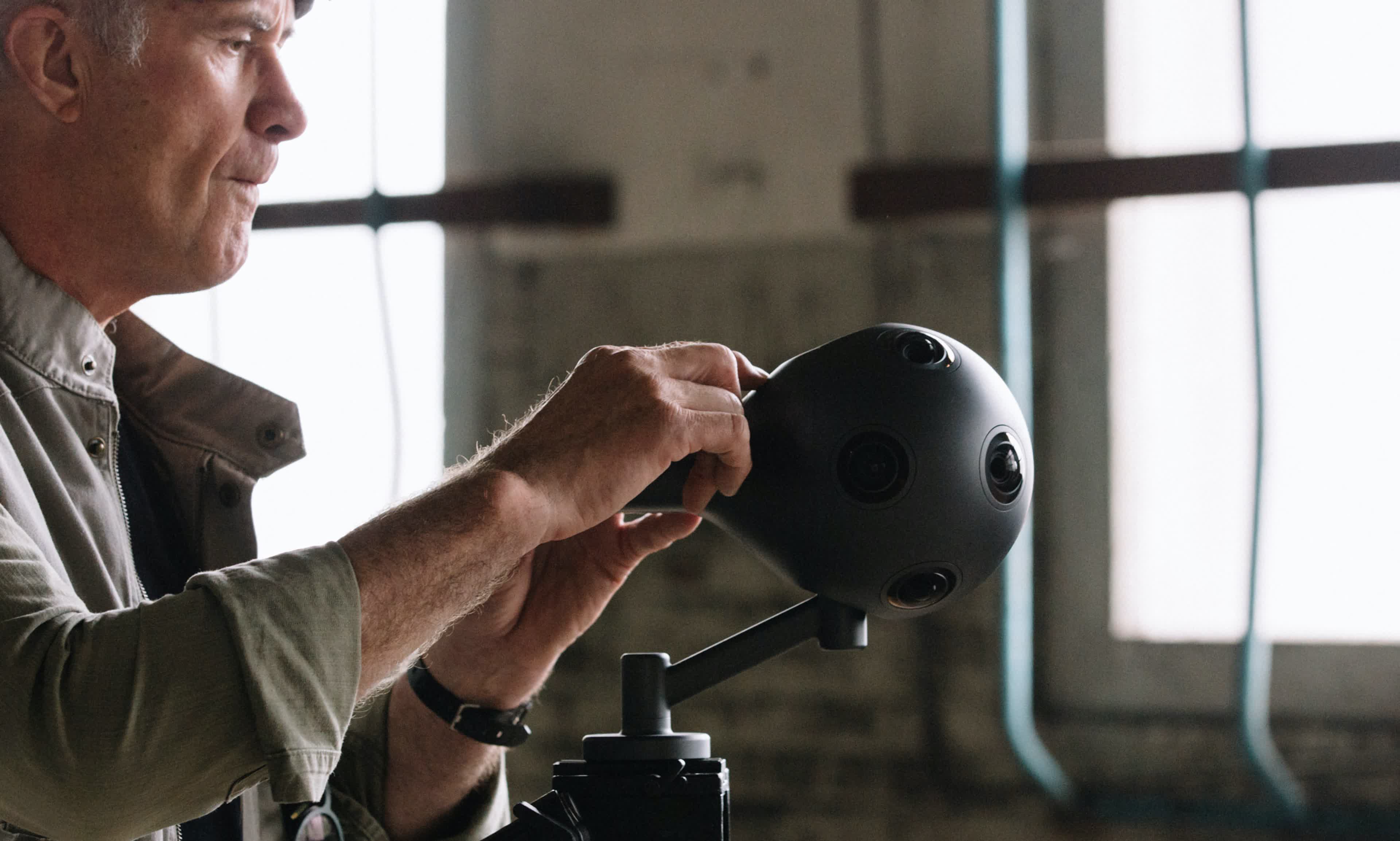
While it didn’t make an effort to reenter the smartphone market, Nokia did want to latch on to emerging trends such as VR to see if it could reinvent itself. One notable attempt resulted in the OZO VR camera system, a ludicrously expensive contraption that Nokia marketed to filmmakers as a great tool to capture 360-degree video. Despite its attractive, futuristic design and technical qualities, it failed to gain any traction and resulted in the discontinuation of the project two years after its unveiling. The company took a hit from this and was forced to cut 310 jobs from its Advanced Technologies unit.
Nokia also tried its hand at the wearables market, starting in 2016 with the purchase of Withings for $192 million and the formation of the Nokia Health division. The new group produced a number of fitness trackers, smart scales, and other digital health products, but none of these were a huge success. Two years later, Nokia sold Withings back to its co-founder, Éric Carreel.
Eventually, the Finnish company found a new opportunity after Microsoft sold the feature phones business it had bought from Nokia to a Foxconn subsidiary called FIH Mobile, as well as newly-formed Finnish company called HMD Global that included several Nokia veterans and faithfuls. Some of these came straight to HMD Global after being laid off from Microsoft, as the latter sought to streamline its Devices business.
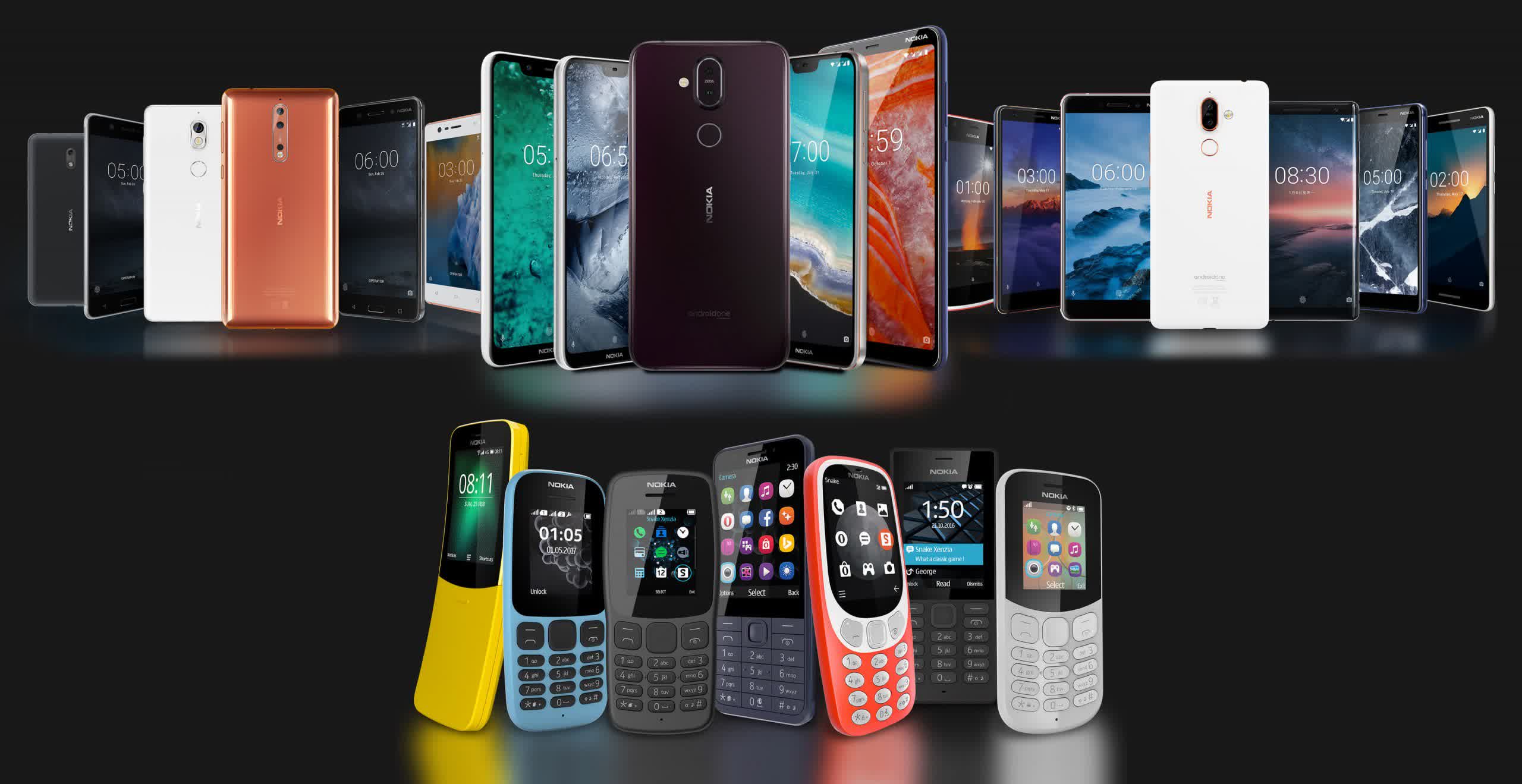
Nokia agreed to license its brand to HMD, who would proceed to flood the market with Android and feature phones, including revivals of a few popular Nokia phones from the early 2000s. The company also made a commitment to invest $500 million over the next three years to support the marketing of these new devices, and forged a partnership with FIH Mobile to make use the latter’s resources and distribution network.
A highlight among HMD’s numerous phones released over the last few years is the Nokia 9 PureView, a flagship Android device with five rear cameras designed in collaboration with Light. Reviewers praised the detailed pictures produced by the Nokia 9 and noted the internal hardware was a bit dated. While it did summon some feelings of nostalgia for fans on Nokia’s PureView camera phones of yesteryear, it was hard to recommend at its full launch price.
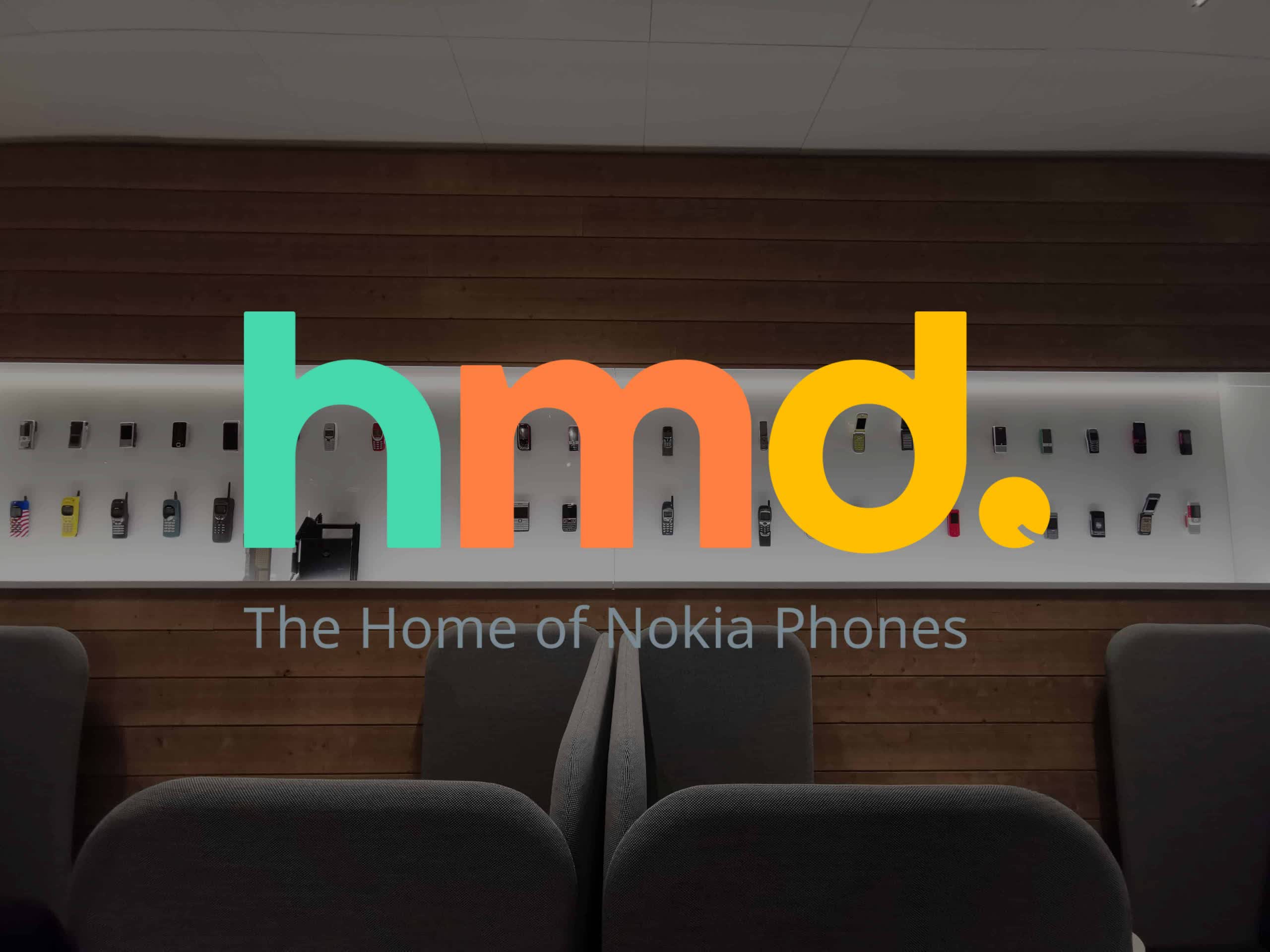
HMD Global’s handsets may carry Nokia branding, but there’s very little Nokia DNA in them. That’s not to say that they’re bad — they offer a mostly stock Android experience, are usually priced quite competitively, and Nokia does a decent job of offering updates to all models. Yet, there’s hardly anything to differentiate these devices to comparable alternatives from other manufacturers. That they sell in the millions is a testament to the lingering power of the Nokia brand and the legacy it created.
Far from Finnished
Some speculate the Nokia brand still has a chance of a real comeback that would see it catch up with the top five global smartphone brands. HMD Global is certainly bullish on the idea. The company is slowly expanding in more markets and offers several 5G handsets in various segments.
Google and Qualcomm would certainly like to see HMD succeed, and have committed $230 million towards funding these ambitions. That said, HMD is taking the slow and steady approach that revolves around churning decent mid-range phones and encouraging hundreds of millions of people who still use feature phones to upgrade to a Nokia smartphone. There will be some flagships here and there, but at this stage HMD is mostly focused on building momentum.
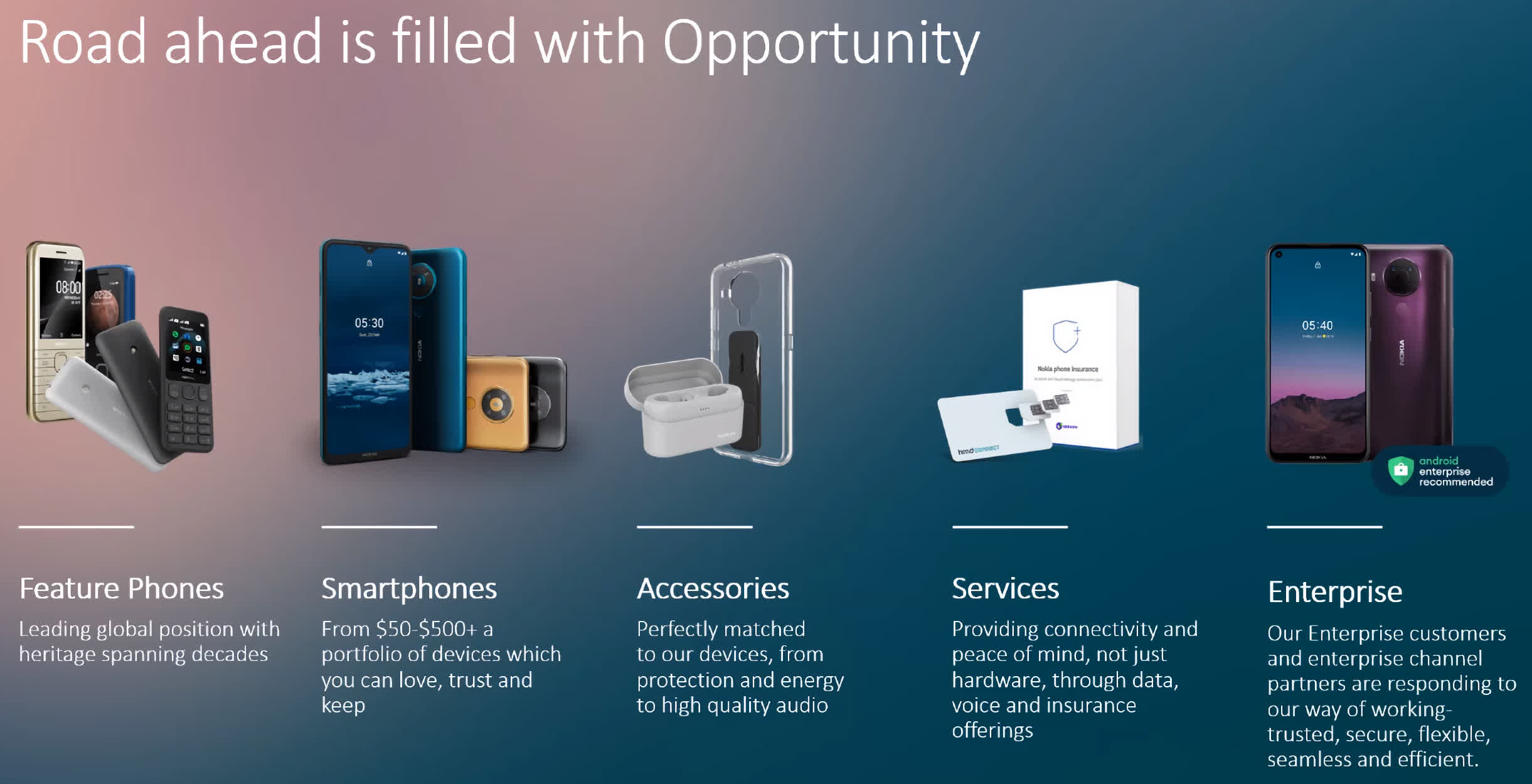
There isn’t much of a reason for Nokia to ever buy HMD Global and get involved directly with the development of Nokia handsets. As it stands, the two Finnish companies have a relatively low risk arrangement where one licenses its brand and intellectual property while the other uses several original design manufacturers in China to produce phones with minimal development costs.
The present-day Nokia is almost entirely focused on becoming the front-runner in the race to supply mobile operators around the world with 5G equipment. The company also continues to be a major patent licenser for large mobile phone vendors.
After a difficult 2020 and the appointment of a new CEO, the company started a painful restructuring that will see thousands of jobs being cut in the coming years. For now, Nokia remains afloat and even edges out its competitors in the telecom market in terms of contracts, while HMD is trying its best to build Nokia back into a household name.
What Nokians Thought About Elop
In 2014, a few months after Microsoft completed the acquisition of Nokia’s phone business, Finnish journalists Merina Salminen and Pekka Nykanen published a book called Operaatio Elop (Operation Elop), shedding more light on what happened at Nokia under CEO Stephen Elop. The book authors conducted interviews with over 100 people, many of them Nokians that had worked or were still working at the company.
Operation Elop is very critical of Elop’s tenure at Nokia. In the book, the authors ask the question whether he was the wrong person to lead the company at the time. Those interviewed were unanimous in believing that Elop was unfit for the role, and held a belief that Nokia’s Jorma Ollila had at some point approached Tim Cook, who was then CFO at Apple, to take on the role of Nokia CEO.
After Elop sent his “burning platform” memo, many at Nokia were taken aback, as it created a sense of urgency that was absent in the company culture at the time. Many felt his portrayal of the situation was an exaggeration that was carefully timed so as to get the Nokia leadership to be more receptive to a radical action plan. They also looked at the company’s financial performance throughout his tenure, and found that for the 1,020 days that Elop was CEO of Nokia, the company lost $23.8 million per day.
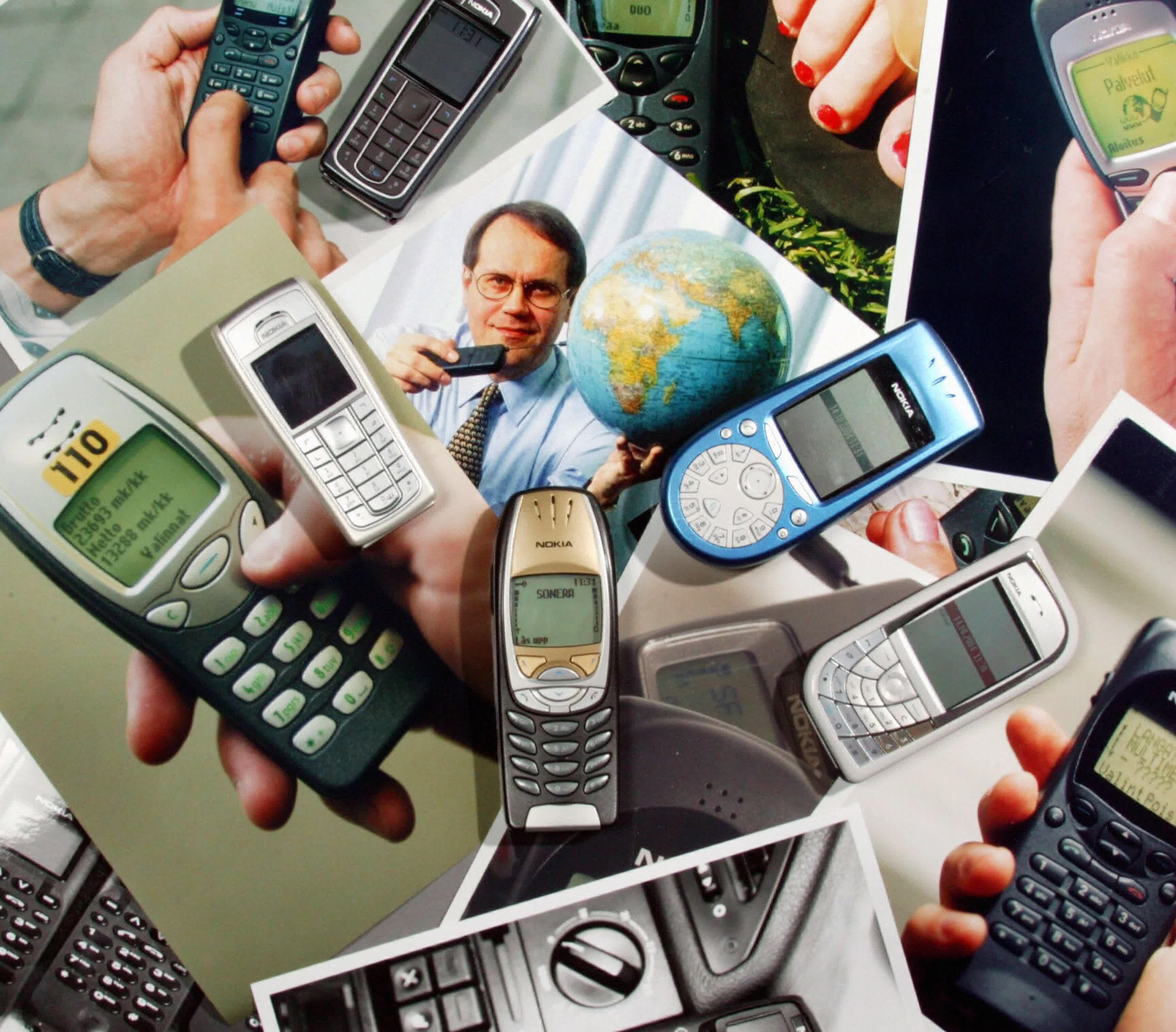
It’s worth noting that when Elop took on the CEO role, Symbian was already on its way to its demise, but internal reluctance to build and migrate to a better alternative meant the company could not execute the steps needed to fend off the competitive threat from emerging platforms. Elop’s decision to take focus away from Symbian was right, but the decision to go all-in on Windows Phone was not.
When Elop assessed the viability of the MeeGo project, he became acutely aware that it was going to need more time before anything good could come out of it. In retrospect, sunsetting MeeGo was probably a bad decision, even if the project was clearly overstaffed. Instead, Nokia could have built a compatibility layer to let Android apps run on MeeGo handsets, which could have solved the problem of app availability.
The announcement that Nokia would adopt Windows Phone as the de facto operating system for its handsets moving forward left the impression that Symbian and MeeGo were already dead. As a result, users, developers, and mobile operators started losing interest in these two platforms which caused their premature demise — a sort of Osborne effect. A more gradual discontinuation of the two platforms could have given Nokia enough time to properly transition to Windows Phone.
Interestingly, Nokians interviewed for the book were aware that Elop wasn’t the only one to blame for Nokia’s failure — after all, he didn’t make all those decisions on his own. When assessing whether or not Windows Phone was a good choice, Nokia managers didn’t realize that it was rather rudimentary compared to Symbian and that its hardware support was lacking. Elop was right in that Android would have made Nokia phones harder to differentiate among the breadth of options, and that Samsung — who was the dominant Android player at the time — could have easily squashed Nokia like it eventually did with HTC.
Windows Phone looked different, but it was also an immature operating system and Microsoft would proceed to reboot it several times while throwing users and developers under the bus in the process. As such, it wasn’t until Windows Phone 8 that Nokia could finally start to take proper advantage of the partnership with Microsoft. Unfortunately, by then Android had already conquered over 75 percent of the global smartphone market, while Apple had greatly improved its distribution channels and the iPhone was flying off the shelves three time faster than Lumias.
Nobody really knows for sure what would have happened if Nokia had gone with Android or stuck with MeeGo. All that Elop really managed to do was reveal the flaws that ultimately prevented the Finnish company from making real progress. The success of Symbian was achieved in a completely different environment, and Nokia failed to reinvent itself when it came time to become a platform company.
 TechSpot’s Gone But Not Forgotten Series
TechSpot’s Gone But Not Forgotten Series
The story of key hardware and electronics companies that at one point were leaders and pioneers in the tech industry, but are now defunct. We cover the most prominent part of their history, innovations, successes and controversies.

